track 'n trace
update
ElsDeClercq Lies
LeenEvelyneManuelAlenLehmannStappaerts
Temmerman Ann Vandemaele
5

update
ElsDeClercq Lies
LeenEvelyneManuelAlenLehmannStappaerts
Temmerman Ann Vandemaele
5
Els
Lies Alen
Manuel Lehmann
Evelyne Stappaerts
Leen Temmerman
Ann Vandemaele
Via www.diddit.be heb je toegang tot het onlineleerplatform bij Track ‘n’ Trace 5 Activeer je account aan de hand van de onderstaande code en accepteer de gebruiksvoorwaarden.
PAS VANAF 1 SEPTEMBER; DE LICENTIEPERIODE START
VANAF ACTIVATIE EN IS 365 DAGEN GELDIG.
Fotokopieerapparaten zijn algemeen verspreid en vele mensen maken er haast onnadenkend gebruik van voor allerlei doeleinden. Jammer genoeg ontstaan boeken niet met hetzelfde gemak als kopieën. Boeken samenstellen kost veel inzet, tijd en geld. De vergoeding van de auteurs en van iedereen die bij het maken en verhandelen van boeken betrokken is, komt voort uit de verkoop van die boeken.
In België beschermt de auteurswet de rechten van deze mensen. Wanneer u van boeken of van gedeelten eruit zonder toestemming kopieën maakt, buiten de uitdrukkelijk bij wet bepaalde uitzonderingen, ontneemt u hen dus een stuk van die vergoeding. Daarom vragen auteurs en uitgevers u beschermde teksten niet zonder schriftelijke toestemming te kopiëren buiten de uitdrukkelijk bij wet bepaalde uitzonderingen. Verdere informatie over kopieerrechten en de wetgeving met betrekking tot reproductie vindt u op www.reprobel.be.
Ook voor het digitale lesmateriaal gelden deze voorwaarden. De licentie die toegang verleent tot dat materiaal is persoonlijk. Bij vermoeden van misbruik kan die gedeactiveerd worden. Meer informatie over de gebruiksvoorwaarden leest u op www.diddit.be.
© Uitgeverij VAN IN, Wommelgem, 2023
De uitgever heeft ernaar gestreefd de relevante auteursrechten te regelen volgens de wettelijke bepalingen. Wie desondanks meent zekere rechten te kunnen doen gelden, wordt verzocht zich tot de uitgever te wenden.
Credits:
p. 67 Police Line © Getty Images / MCT
Eerste druk 2023
ISBN 978-94-647-0097-8
D/2023/0078/62
Art. 603776/01
NUR 110
Vormgeving en opmaak: Vrijdag Grafis
Vormgeving cover: Wendy De Haes
Zetwerk: Banananas
Tekeningen: Lise Vanlerberghe
Grafieken p. 20 & p. 143: Geert Verlinde
Welkom in Track ‘n’ Trace. We leggen graag even uit hoe je met dit boek aan de slag gaat.
1 / Op weg met Track ‘n’ Trace
Het leerwerkboek bestaat uit zes units en elke unit is op dezelfde manier opgebouwd.
Op de voorpagina van elke unit vind je terug wat je zult leren om de taak aan het einde van de unit, de Check Out, goed uit te voeren. Deze voorpagina toont je de weg die je zult afleggen.
In de Check In maak je kennis met het thema van de unit.
De Main Track is opgebouwd uit verschillende Steps. In elke Step leer je een afzonderlijke bouwsteen om de taak aan het einde van de unit te kunnen maken.
CHECK 1, p. 190
Aan het einde van elke Step zie je een verwijzing naar een Check. Die Check vind je terug in het onderdeel On Different Tracks. In On Different Tracks ga je na of je de bouwsteen al onder de knie hebt.
Voor je start met On Different Tracks is er een Summary : een overzicht van de grammatica, woordenschat, strategieën en veelgebruikte uitdrukkingen.
Check 2 Using the first conditional
1 Fill in the correct form of the verb.
1 If we (not to show) more respect for our planet, there (to be) no planet left for future generations.
2 If Europe (to forbid) the use of pesticides, we (to be able) to reduce the number of cancers.
Je leerkracht zal je zeggen wanneer je de Check, die bij een bepaalde Step hoort, kunt maken in On Different Tracks. Afhankelijk van je resultaat kun je – helemaal volgens jouw tempo en niveau – de leerstof nog even herhalen, extra oefenen of meer verdiepende oefeningen maken.
3 It has been predicted that if people (not to have) to pay for their plastic bags, and just think of them as cheap, disposable items, they (to be) using more than double the number in a few years time.
4 Five Pacific Islands have been lost and many more (to follow) if we (not to stop) the seas rising.
Je kunt je traject in On Different Tracks helemaal zelfstandig doorlopen, met een partner of samen met de klas. Aan de hand van de handige scorewijzers weet je meteen welke oefeningen je moet maken.
5 As climate change (to hit) the consequences (to be) far-reaching.

2 Fill in the correct verb forms. Use each verb only once. Pay attention to the structure of first conditional sentences. to be – to buy – to decide – to drop off – to generate – to get – to reduce – to replace – to save –to stimulate

1 If we face scrubs without plastic, we the amount of plastic in our oceans.
2 Households more electricity if the government solar energy.
3 Your old smartphone a new life if you at a recycle point. 4 If

Als je alle bouwstenen in de Main Track hebt doorlopen en ze voldoende hebt ingeoefend in On Different Tracks, dan ben je zeker klaar voor de Check Out, de taak aan het einde van de unit. Hier kun je alles wat je geleerd hebt in de unit toepassen.
Elke Check Out gebruikt de OVUR-strategie:



Reflection
3 Reflect on your task by filling in the checklist.
Checklist: describing your holiday
1 Preparation
• I described my friends’ holiday activities.
• I wrote my note or postcard in draft first.
2 Content • I wrote about 75 words.
I think soNo
• I included all the necessary elements.
• I respected the rules for writing an informal note or postcard.
3 Language use
We willen graag dat je vorderingen maakt en dat je reflecteert op je taken en leert uit feedback.
• I used the correct vocabulary to describe the activities and the weather.
• I used the past simple tense correctly.


• I paid attention to the structure of my sentences.
• I checked my spelling and punctuation.
Trace your steps on diddit.
Ten slotte kun je na elke unit je online portfolio op diddit individueel of samen met je leerkracht invullen. Zijn er dingen die nog niet zo goed lopen, dan krijg je meteen ook digitale oefeningen bij je werkpunten.
Grammaticale regels staan in de Main Track altijd in een kader, met een duidelijk voorbeeld erbij. Hier vul je zelf een aantal basiskenmerken van de regel in. Hoe je de grammatica gebruikt, vind je vervolgens terug in de Summary. Aan de hand van nog meer voorbeelden en illustraties schetsen we de context waarin je de grammatica kunt gebruiken.
Omdat leerstrategieën ontzettend belangrijk zijn, vind je die ook in de Main Track terug wanneer je ze nodig hebt. Elke leerstrategie kun je via een handig schema of overzicht nog eens rustig bekijken in de Summary, ook als je er later nog eens gebruik van wilt maken.
Omdat je Engels wilt gebruiken in een realistische context, reiken we je graag ook veelgebruikte uitdrukkingen aan.
In de loop van elke unit word je ondersteund door een aantal hulpmiddelen.
De woordenschat van elke unit geven we je graag mee via een beeldwoordenboek of via een overzichtelijke woordenlijst met ruimte om je eigen woorden en zinnen toe te voegen.
Human health
Climate change is already impacting human health. Changes in weather and climate patterns can put lives at risk. Heat is one of the most deadly weather phenomena. As ocean temperatures rise, hurricanes are getting stronger and wetter, which can cause direct and indirect deaths. Dry conditions lead to more wildfires. More flooding can lead to the spread of waterborne diseases, injuries, and chemical hazards. As geographic ranges of mosquitoes and ticks expand, they can carry diseases to new locations.
The most vulnerable groups, including children, the elderly, people with preexisting health conditions, outdoor workers, are at an even higher risk because of the compounding factors from climate change. But public health groups can work with local communities to help people understand and build resilience to climate change health impacts.

The environment
Vaardigheden zijn een belangrijk onderdeel bij het leren van een nieuwe taal. Daarom geven we bij elke oefening aan op welke vaardigheid je het meest aan het oefenen bent: watching, listening, reading, speaking, spoken interaction, writing, written interaction
Climate change will continue to have a significant impact on ecosystems and organisms, though they are not impacted equally. The Arctic is one of the ecosystems that is the most vulnerable, as it is warming at least twice the rate of the global average and melting land ice sheets and glaciers contribute dramatically to sea level rise around the globe.

Some living things can respond to climate change; some plants are blooming earlier and some species may expand their geographic range. But these changes are happening too fast for many other plants and animals. Some invasive or nuisance species, like lionfish and ticks, may thrive in even more places because of climate change.
SPEAKING SPOKEN INTERACTION READING listening
Changes are also occurring in the ocean. The ocean absorbs about 30% of the carbon dioxide that is released into the atmosphere from the burning of fossil fuels. As a result, the water is becoming more acidic, affecting marine life. Sea levels are rising due to thermal expansion, in addition to melting ice sheets and glaciers, putting coastal areas at greater risk of erosion and storm surge.
The compounding effects of climate change are leading to many changes in ecosystems. Coral reefs are vulnerable to many effects of climate change: warming waters can lead to coral bleaching, stronger hurricanes can destroy reefs, and sea level rise can cause corals to be smothered by sediment. Coral reef ecosystems are home to thousands of species, which rely on healthy coral reefs to survive.
dwindling > to dwindle: shrink, decrease nuisance: something that is annoying or unpleasant precipitation: rain, snow, sleet, or hail that falls to the ground to spur: to encourage a tick: a very small animal that bites humans and might transmit Lyme disease
Source: www.noaa.gov two hundred


4: PLANET JUNK
watching written INTERACTION
As future leaders who will make decisions about the issues they face in their communities, the Museum of Science and Industry positioned high school-aged teens to act as advocates for building the city’s resilience to the impacts and consequences of global climate change.
WRITING
De volgende iconen helpen je ook nog een eind op weg.
3 Don’t turn a blind eye
Selecting information from a text









1 / Man vs Earth
Richard Williams, better known by his stage name Prince Ea, is an American rapper, spoken word artist, and civil rights activist from St Louis, MO. Prince Ea is a familiar face for anyone with a newsfeed: he has accumulated over one billion views on Facebook and YouTube. His messages of compassion, in the form of content-heavy spoken word poetry, have earned him global recognition as a social influencer on peace and civil rights, with a focus on education.
Source: Forbes
1 Discuss these questions before watching the video by Prince Ea.

a What do you think the video will be about?
b If the Earth’s lifespan were condensed into 24 hours, how long do you think mankind has existed?
2 What is the answer to question 1b? watching
3 Are these statements true or false? Correct the false statements.
Statement TrueFalse
1 Planet earth is 4.5 million years old.
2 We have increased the extinction of animals by 1,000 times the normal rate.
3 Prince Ea thinks it’s too late.
Het luisterfragment dat hierbij hoort, vind je ook online terug.
4 List some of the achievements of mankind and explain how these achievements have turned against us.
Het beeldfragment dat hierbij hoort, vind je ook online terug.
5 Is mankind wise? Why (not)?
Als je dit icoon ziet, moet je iets online opzoeken of vind je extra materiaal terug op diddit.
Wanneer er moeilijke woorden voorkomen in het authentieke tekstmateriaal, worden die uitgelegd in de glossary
Soms krijg je extra uitleg bij een boek, een auteur of een film.





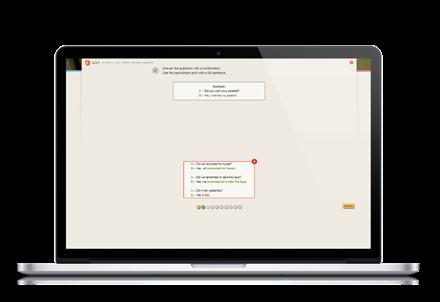
Leerstof kun je inoefenen op jouw niveau.
Je krijgt meteen feedback aan de hand van theoriekaders en instructiefilmpjes.

Je kunt vrij oefenen en de leerkracht kan ook voor jou oefeningen klaarzetten.
Hier vind je de opdrachten terug die de leerkracht voor jou heeft klaargezet.
Hier kan de leerkracht toetsen en taken voor jou klaarzetten.
Trace Your Steps: vul hier jouw portfolio in om aan te duiden wat je al beheerst.
Benieuwd hoe ver je al staat met de oefeningen en opdrachten? Hier vind je een helder overzicht van je resultaten.
Hier vind je het lesmateriaal per unit (o.a. audio- en videobestanden). Alle instructiefilmpjes en leerbladen uit de Summary zijn hier ook nog eens verzameld.
WOORDTRAINER VAN IN En waarom de woordenschat niet instuderen met de handige woordtrainerapp van Track ‘n’ Trace 5?

check in
Step 1: talking about school supplies
Step 3: making classroom rules
Step 2: writing an opinion
trace your steps
check out: an email to the principal

Watch the vlog by JennxPenn, Funny stories at high school, and answer the questions. a JennxPenn is … in nursery school in elementary school in middle school in high school in boarding school in college at university

b She’s a … freshman sophomore junior senior
c She is going to tell us … some embarrassing things she did in high school. some things she did in high school and she got punished for. some things she did in high school and didn’t get punished for.
d Are these statements true or false? Correct the false statements.
1 ‘Words with friends’ is an app to take pictures.
2 Her teacher gave the students her password for ‘Words with friends’.
3 She beat the teacher at Scrabble.
4 She asked her dad to help her.
5 She used an app to cheat.
6 She looked up the meaning of difficult words in the dictionary.
7 The teacher didn’t realise that she was cheating.
Story 2
1 She took one field trip each year in high school.

2 She went on a field trip with her class to New York.
3 They went to visit Central Park with her class.
4 In the field trip, the students had to spend a whole day at the Metropolitan Museum.
5 Jen and her friend went shopping. Story
1 She doesn’t like photography.
2 She used Instagram photos and filters in her photography class.
3 She won a competition at her school for best picture.
4 A lot of kids in her class used a DSLR (Digital Single Lens Reflex camera) for their pictures.
1 You will read the blog ‘Top 10 of things pupils hate about school’. Can you think of items that will be mentioned?
2 Read the excerpts from the blog and match them with the words in the box below. READING boring – bullies – detention – exams – getting up in the morning – grades – homework –marks – mathematics – teacher’s pet – physical education – points – school lunch – score
You work for 7 hours out of your day at school, and then you have to bring it home, and there is no time for anything else.
It is absolutely disgusting knowing that calling someone fat, ugly, or worthless can lead to so many problems. People say that words can’t hurt, but they can hurt me.
I think schools should introduce this concept: we do math, reading, history and science until high school, then, in high school, all of our classes should be electives like cooking, theatre, art, and so on.
Worst thing ever! As soon as that alarm sounds at 6 am, I know another day of survival of the fittest starts. It sucks even more when it’s winter and you’re all warm and sound asleep, then your mom comes and rips the blankets from your body, the cold comes and you just want to either yell at your mom and blame the government for school being mandatory, or you just want to kill yourself ... you decide.
This is why I refer to school as the stress factory. Whenever I get a bad grade on a certain subject, they call my parents and say that I am doing terribly in this subject. At least my parents know I’m trying hard! They say good grades get you into good schools, which is true, but the stress doesn’t help! I hate this!
We get it for things like telling a teacher our honest opinion, that we think this subject sucks, and what happens? We get punished for giving an opinion. What the hell? Doesn’t that go against everything humanity stands for?
It’s boring. It’s useless. It’s a time waster. If I could, I would stop it altogether, and stop children from having heart attacks and having their minds plagued with sports.
You take all these tests in the beginning and show that you actually know what you are learning! Then, near the end of the year, you take these ‘super tests’ that are worth 75 % of your grade! We are teens! What do you expect? We want to have fun!
One day at school we had to eat chicken wings that were raw. I threw up and one of the cafeteria ladies made me mop up my own puke and said I was being disrespectful to their food.
One year my best friend was the teacher’s favourite student. The teachers basically let her get away with practically anything! Really! Teachers shouldn’t favour kids; adults should know better.
3 Match the words below to the correct explanation. Then fill in the related words in each sentence. Choose from the following words or expressions.
electives – to favour – mandatory – to mop up – to puke – punished – survival of the fittest –a time waster – worthless
a situation in which only the strongest people or things continue to live or be successful, while the others die or fail
He only just that camping trip. The other hikers were killed by a bear.
a slang word for ‘to throw up, to vomit’ I love babies; I just don’t like cleaning up their
to give someone a kind of penalty because they did something wrong
He got a severe for his bad behaviour.
4 obligatory, compulsory, required by law
5 without any value
L’Oréal! Because I’m it!
6
to show approval or preference for someone
Would you do me a ? Call my parents and say that I’m staying at your house tonight.
7 something that wastes your time Please, hurry! Don’t any more time on that stupid game!
8 subjects that you can choose Which candidate will win the ?
to clean up
9
At my bachelor party, my friends gave me a ‘to clean up the mess I made in my previous relationships’.
4 Write down your top 3 list of things you hate most about school. You can add new things if you want. Write sentences using the ing-form.
e.g. I hate getting up early.
OR: What I hate most about school is getting up early.
1 What I hate most about school is …

2 I also hate …
3 And I hate … too.
5 What kind of student are you? Take the test!
a Choose the statements that suit you best.
1 It’s going to be a hot, sunny day tomorrow.
A What’s the deal? I’ll attend class, like on any other school day; maybe I’ll wear shorts.
B I think I’ll play hooky: meet my friends at the pool / beach and spend all day goofing around. It won’t be the first time I have skipped class because of the weather.
C Great! That means I will be able to do my homework in the garden / the park.
READING
2 What’s your ambition this year?
A I’m thinking about dropping out of school. The university of life is more my thing: everything I need to learn, I will learn by experience, not from books.
B I want to be the top student in my year.
C I just want to make the grade. I hope to graduate next year.
3 Your history teacher announces a test next week.
A I’ll hit the books tonight. It’s never too early to start studying. I bet I’ll pass the test with flying colours.
B If I start studying at the weekend, I can still ace that test.
C Hmm, procrastination is my middle name. I’ll have to pull an all-nighter again. And then I guess I will flunk that test, because my mind will go blank when I look at the first question. Just like all those other times. I won’t even get an A for effort, that’s for sure.
4 Your English teacher announces a group project. How do you react?
A I’m the one who will take the lead, read the assignment out loud and organise the work.
B Great! I love it when we put our heads together to brainstorm and all the wackiest ideas come up. I’ll do my share of the work, but I’m not a leader.
C Oh no, putting on my thinking cap is not really my favourite activity. I prefer leaning back and watching the others do all the work.
5 A pop quiz in math class …
A Hell no!!! Our math teacher is a sadist!
B No problem. I always study my subjects for the next day.
C Ugh, I learnt those formulas by heart for that test a few weeks ago. Maybe I’ll remember them, if I really rack my brain …
b Mark your answers in the table below and add up the points.
c Read the conclusion below. Do you agree with it? Why (not)?
0-15
You are probably the class clown, who brings joy and laughter into the classroom. There is about 0 % chance that you could be the teacher’s pet. Teachers have called you a slacker or lazy, but that means they’ve missed your creative brain. Keep up the good work!
20-35
You are quite motivated, but you’re not really an eager beaver: school doesn’t get you excited, and it’s definitely not the centre of your life. If you’re a follower, be sure you know who to choose in your posse. Or you can try to play it fair and do your homework yourself, albeit the minute before a deadline.
40-50
Others may have labelled you as a bookworm, but you’re probably just a quick learner. And if you’re not really a brainiac, at least you think school is useful and you’re interested in what they’re trying to teach you. ‘They’ can be your teachers, but also your parents or the Discovery Channel.
6 Fill in these types of students with the correct definition. Choose from the following words or idioms.
a bookworm – a bully – a class clown – an eager beaver – a quick learner – a slacker –the teacher’s pet
1 a lazy student
2 a born entertainer, much to the dislike of the teachers
a mean person who intimidates and harasses other students or even teachers
4
5
someone who doesn’t need a lot of time or effort to understand something or who gets the hang of a skill really quickly
someone who is always reading or studying
6 a very active and zealous person
7 the teacher’s favourite student
7 Fill in the words below in the sentences. Use the correct form of the verb.
to drop out of school – to graduate – to play hooky – to put your heads together – to put your thinking cap on – to read out loud – to skip class – the university of life
If our physics teacher asks us , she presents us with a problem and we are divided in groups so we can come up with a solution. Now that’s not really my kind of thing. In fact, I would rather physics class and go shopping with friends instead. My best friend Shayna always when we have physics class. In fact, there isn’t a single subject at school that she’s really interested in. She’s thinking about . She says she will attend and make a fortune in real estate. I don’t know how she’s going to achieve that. I still think school is useful and I want to , so I can go to a real university!
8 Put the following words in the correct column: positive, neutral or negative.
A for effort – to ace a test – to flunk a test – to goof around – to hit the books – to learn by heart – to make the grade – my mind went blank – to pass with flying colours – a pop quiz –to pull an all-nighter – to rack your brain
9 Pimp that text! Replace the underlined words in the text messages below with the correct words from exercise 8.
I can’t go out tonight. We have a maths test tomorrow, so I have to study tonight.
We had an unexpected test in history class last week and we received our results this morning. I got a very low grade.
I studied all night for my French exam. In the written exam
I made a great effort to remember anything, but not one French word came into my mind, and at the oral exam I had a black-out.
Of course, Delia got a really good grade!
Zack is a real bookworm, but he studies everything by memorising literally what’s in our textbook. When he took that math test last week, he got a rather low grade, but the teacher still praised him for his courage.
10 To study, to learn and to teach are often mixed up. Complete the table.

to become better at something
I started to to play the guitar last year, but I’m not really good at it.
to try to memorise in order to learn
to show someone how something is done, so they can become wiser / better at it
I will have to hard to get a degree. a :
Can you me how to play chess. a

1 You will watch a parody video of a few women in a beauty contest who were asked if mathematics should be taught at school.
a Watch the clip and write down three silly statements you hear.
b Miss Arizona sums up subjects that are more useful to teach than math. Write them down in the order you can hear them.
What she says What she probably means alchemy scientology
how to make basic mixed drinksmaybe cooking class / mixology creationtism (incorrect spelling!)
whatever those heaven’s gate people believe religious education math (Oops, she probably didn’t mean to say that…)
2 Look at this infographic about students’ most and least favourite subjects at school. Use the information to write a list of the top 5 favourite subjects.
mathematics
English
science
social studies, history, government, civics
foreign language
physical education or gym
art
health education
computer education or computer science
least favourite
3 Which are your most and least favourite subjects? SPOKEN INTERACTION
21% of students listed math as their least favourite subject
4 Choose ‘your’ educational icon and make a list of the subjects you have.







5 Fill in your ideal weekly schedule. You decide when school starts, how long one period lasts, and how many periods you have a day.

6 Discuss your ideal weekly schedule with a classmate. Practise telling the time if necessary and use the prompts.
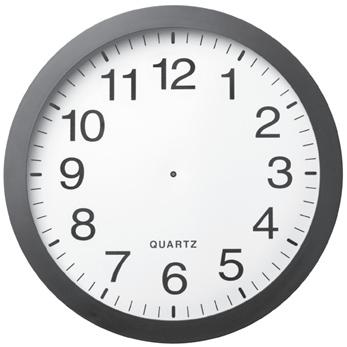
If I were in charge, the lessons would start at 10 o’clock.
If I were in charge …
7 You have a budget of £ 25 to shop for school supplies online. Which items will you buy? Discuss your choices with a partner.
8 Watch the slideshow. You will see the contents of a school bag and with every slide one item disappears. Write down which item is missing. HINT: Let the alphabet guide you!

1 Work with a partner. You will get the floor plan of a typical secondary school. Complete the floor plan as you listen to your partner’s description.
2 Imagine you can design your own ideal school. Think about the lay-out, answering these questions. Which rooms would you put …
a at the entrance?
b near the lift?
c at the end of a corridor?
d on the ground floor?
e on the first floor?
f next to the gym?
g opposite the teachers’ room?
3 Watch the video about Orestad College in Copenhagen (Denmark) and do the tasks below.
a Write the words your teacher dictates in column A.
b Specify their location in column B. Use the correct prepositions. Use these prompts: atrium / shelf (pl. shelves) / staircase
1 You will read a reaction from a teacher to the question: ‘What do you find most irritating about your students’ emails?’ What do you expect to read?
2 Read the text below and tick off the ones you guessed in exercise 1. Highlight the items that annoy teachers in each paragraph.
First of all, I want to point out that if you send an email at midnight, you probably won’t get an immediate response, no matter how much you pray or hope. Because I have set up email notifications on my phone, I definitely do not appreciate the dinging sound of an email prompt during odd hours of the night.
A second fact I would like to point out concerns the subject line. I receive dozens of emails every day, and if I want to keep some order in my mailbox, I need a very clear subject line, so I just delete email subjects that are blank, vague or too long.
I understand that you want to jump straight into your email, but that doesn’t mean you should skip the proper greetings and salutations. Although it only takes 2 seconds to write ‘Dear Mrs. Price’, for some students that is too much work. If you want me to respond to your email, the least you can do is greet me in an appropriate way!
Another item that bothers me in students’ emails is the lack of body text. Some students just send me an attachment without any form of explanation. I just pretend not to know what to do with it and delete the email, even if I know that it’s homework and I have to correct it.
Or students send me an email saying ‘You can find my homework attached’ — but there is no document in sight. This happens when you rush through your email responses without going through a final check.
A last thing that really annoys me is the fact that students are too lazy or too rushed to proofread their body text. As a result, their emails contain grammatical and spelling errors. This can easily be avoided by proofreading. Those red squiggly lines are there for a reason. Get rid of them unless you want a lower grade for your work!
3 Look at the key words you highlighted in the text on p. 24 and write 5 lines of advice for writing better emails.
You shouldn’t
You should
4 Play the memory game. Do you remember what the teacher complained about in exercise 2? Cover the text and try to complete these ideas from the text.
1 Some students send emails at 3 o’clock at night, although
2 This teacher doesn’t read emails if
3 It only takes 2 seconds to type an appropriate salutation, but
4 This teacher sometimes receives mails without a clear subject line, so
5 Some students send her an attachment without any explanation. As a result,
6 Students often leave grammar and spelling mistakes in their text, because
7 You should fix spelling mistakes that are underlined in red, unless
5 Have a look at the underlined words in the sentences in exercise 4. They are linking words, because they link two sentences together. Write down which words express reason, result, contrast or condition.
reason I can’t hand in my homework, my dog ate it. result
The internet went dead yesterday I couldn’t download the assignment.
That’s why I haven’t handed in my homework in time and I will get bad grades.
I didn’t have time to do my homework last night, I promise I will do it tonight. I didn’t finish my book report in time my teacher gave the assignment two months ago.
students don’t hand in their homework on time, a teacher will give them a bad grade. they hand in their work with a £ 100 note, and then the grade goes up again.
6 Read the text below. Fill in the correct linking words. Choose from the words below. READING although – as a result – because – but – if – so – unless
1Address your teacher formally it’s important to establish a respectful tone in your email, start with ‘Dear Mr. / Ms. / Mrs. [Last Name]’ on its own line before creating the rest of the email.
you may think ‘Dear’ sounds like the beginning of a love letter, it is the correct way to address your teacher.
you use ‘Hey’, ‘Hello’, or similar, you give the impression your teacher is a close friend, which he / she is not! Never call your teacher by his or her first name they have asked you and every other student in your class to do so.
2Be straightforward. Teachers have a limited amount of time per day to answer your questions, make your email quick and tothe-point.
Try to keep your message to five sentences or fewer you have a very detailed question.
3End the email. There are many ways to end an email, you should always end emails to teachers with some variation of ‘Thank you’, on its own line and then your name on a separate line. Possible substitutions for ‘Thank you’ include ‘Sincerely’, ‘Regards’, and ‘Best’. Avoid ‘Thanks’, ‘Cheers’, or any other casual language.
Source: www.wikihow.com
1 Read the text below and answer the questions.
a What is it about?
b Who do you think wrote it?
c Why do you think that?
School started last week and here we go again: heaps of homework! Thank you! I think homework should be banned. Homework is a source of stress. According to a Stanford university survey, 56 percent of students regard homework as a significant source of stress. In contrast, only 1 % of students believe homework is not a substantial source of stress.
Furthermore, more than 80 % of students exhibit stress-related symptoms such as headaches, tiredness, sleep deprivation, weight loss, and stomach issues. Homework is to blame for all of these irritating stress and health difficulties.
deprivation: the fact that something has been taken from you to exhibit: to show significant: very high, very clear substantial: big
Source: www.calltutors.com
Without a doubt, no homework means no stress. Students don’t have to waste their time sitting at their desks, burnt out, and wondering about whether or not they turned in all of their assignments if they don’t have homework. As a result, having no homework is a student’s dream come true.
2 Let’s have a closer look at the structure of the text. Fill in the table. Answer each question with one sentence.
What’s the student’s opinion about homework?
Why does this student think that?
Which ‘proof’ does the student give?
What is the student’s conclusion?
3 If you want to express your opinion in a longer spoken or written text, you will use this structure.
a Complete the table.
O
R
E
O
You express what you think about a certain topic.
You use arguments to say why you think that.
You give examples, refer to statistics or expert opinions to prove that you are right.
You repeat your statement as a kind of conclusion and maybe express some hope for the future.
b Indicate the OREO-structure in the text about homework in ex. 1.
4 Read this text by another student.
a Put the paragraphs in the correct order.
Another reason why homework should be banned is that homework disturbs the normal sleep cycle. When students are overburdened with homework and assignments, their sleep cycles become irregular, disturbing their biological clocks and decreasing the quality of their sleep. For example, they may stay up until two a.m. to finish a single report. Then they pass out when they arrive home the next night, only to wake up late the next night to complete their homework. These cycles frequently repeat in the lives of students.
Every year students complain about homework; and the older they get, the more homework becomes a real issue. Therefore, it should be banned all together.
These are the main reasons homework should be banned and I’m sure there are a lot of students who will agree with me, so make students happy and get rid of homework!
The second reason why homework should be banned is that it reduces family time. The most significant difficulty for today’s parents is that they don’t spend nearly enough time with their children. Kids begin working on their homework and projects as soon as they get home, and they barely have time to chat with their families because they’re too tired. Those continuously working on homework miss out on family time, shared evenings, weekend activities, and dinners. However, without homework, there would be more time for family bonding, which would bring families closer together.
First of all, homework provides no real benefit. Teachers assume that giving students extra homework would help them improve and remember what they have learned faster. That is not the case, however. The more homework students have, the less motivated they are to learn. As a result, homework becomes a devil, driving students into a corner of worry, rather than a tool for motivating them to learn more.
Source: www.calltutors.com
The correct order is:
b Underline the words that helped you figure out the correct order. They are called the structural markers of the text.
c Indicate the OREO-structure in the paragraphs.
5 Complete the table with information from the previous exercise.
When you want to express your opinion in a longer (written or spoken) text, you may want to use structural markers, such as:
- , firstly,
- secondly / the reason is … - furthermore, another reason is …
- the last item I want to point out is …, finally. - In conclusion, concluding, … See p. 46
6 Can you think of more reasons to ban homework?
a Preparation: think of at least two more reasons.
b Action: write a short text (about 70 words). Make sure to use the correct structural markers and linking words. Use these prompts if necessary:
It has been a discussion for ages, but I think homework should be banned as soon as possible.
That’s why I think homework should be banned and I hope my teachers will eventually change their opinions about homework as well.
c Reflection: check your text by filling in this checklist.
Checklist: giving my opinion about homework

1 Contents and structure
• I mentioned at least two more reasons why homework should be banned.
Yes I think so No
• I gave examples and / or referred to statistics or expert opinions to prove that I am right.
• I wrote about 70 words.
2 Language
• I used correct spelling and punctuation
• I used the correct structural markers.
• I used the correct linking words.
• I used correct basic grammar. Feedback
CHECK
You want me to do what?
Making classroom rules
1 Look at the memes. Fill in the missing word in every sentence. Choose from the words below. erasers – grade – homework – interrupt – leaning – lining – school – sound – texting – wiser


OH, I’M SORRY … DID THE MIDDLE OF MY SENTENCE

THE BEGINNING OF YOURS?
PROCRASTINATOR? NO. I SAVE ALL OF MY HOMEWORK UNTIL THE LAST MINUTE BECAUSE I’LL BE OLDER, THEREFORE
I DON’T CARE IF YOU’RE THE PRESIDENT OF THE UNITED STATES: NO BACK IN CHAIRS!

DEAR STUDENTS, I KNOW WHEN YOU’RE IN CLASS. SERIOUSLY, NO ONE JUST LOOKS DOWN AT THEIR CROTCH AND SMILES. SINCERELY, YOUR TEACHER.

SURE I CAN STOP WHAT I’M DOING TO ALL OF YOUR LATE WORK. WHAT ELSE WOULD I BE DOING?
YOU COULD GIVE ME 67 YEARS TO DO
AND I WOULDN’T DO IT UNTIL THE NIGHT BEFORE.

WHAT IF I TOLD YOU UP AT THE DOOR DOES NOT MAKE THE BELL RING FASTER?


NO ONE IS PERFECT … THAT’S WHY PENCILS HAVE .

I LIKE THE YOU MAKE WHEN YOU SHUT UP.

2 What do the memes really mean? Rewrite the memes and then complete the rules.
Examples from exercise 1
1 This teacher says: ‘You’re not allowed to / You can’t / You mustn’t
’
5 The teacher says: ‘You must
2 We aren’t allowed to / we can’t
4 We can’t / We’re not allowed to
Rule: Things you can’t, mustn’t or aren’t allowed to do, are called
3 We shouldn’t
Rule: Shouldn’t is not a real prohibition, but more a piece of
9 I don’t have to be perfect. is human.
7 My teacher wants us to
8 We have to
Things you must or have to do, are called
6 We should
Rule: If there are things you don’t have to do, there is no to do them. They are
10 When it’s the first of September, you have to
Should is not a real prohibition, but more a piece of
9 I can / I am allowed to Nobody’s perfect.
If there are things you can do or are allowed to do, then you have to do them.
Rule: If something has to happen because of circumstances, we use have to
3 Choose the correct modal verb in the sentences below.
A lot of things can / should go wrong on an ordinary school day: the internet goes dead, your energy bar is stuck in the vending machine or the chemistry teacher has to / must call the fire department after a failed experiment.
If there is a fire in the chemistry lab, you have to / must leave the school building at once.
Of course, that doesn’t mean you can / must spend the rest of the day at a pub.
You have to / must / should go back inside as soon as the head of the security department says the building is safe again.
4 Based on the sentences and the memes in exercises 1 and 2, fill in the grammar grid about how you can express obligation, prohibition and permission. Choose from the forms below.
are allowed to – aren't allowed to – can (2x) – can't – could – doesn't want me to – don’t have to –has to – must – mustn't – needn’t – should – shouldn't – wants me to
Obligation
How to say that you have to do something
Imperative form
Always raise your hand in class.
The speaker wants me to … You raise your hand (I insist!) Someone else wants me to … My teacher raise my hand.
Giving advice You listen to your teacher.
There’s a rule or a law that says so, or you are forced by circumstance. She hand in her homework.
Prohibition How to say that you are not allowed to do something Negative formDon’t lean back in your chair.
General prohibition I go to that party on Saturday. The speaker forbids it. You throw things in class. Someone else forbids it. My teacher talk in class.
Giving advice You start smoking.
There is a rule that forbids it. You smoke at school.
Permission
General permission
How to say that you are allowed to do something
You go to that party on Saturday. I go to the bathroom, please?
Very polite request for permission. I borrow somebody’s pen? May I go to the bathroom, please?
There is a rule that says you can. You use a calculator.
Absence of obligationHow to say there is no need to do something
No obligation
You to ask if you want to drink some water. You write everything down: there will be a powerpoint after the lecture.
The words ‘must’, ‘should’, ‘can’, ‘could’ and ‘may’ are called ‘Don’t have to’ and ‘needn’t’ are semi-modal verbs. They help other verbs and are always followed by the base form of another verb.
5 Choosing a different modal can totally change the meaning of a sentence. Match the modals with the correct explanation.
a You can / can’t / have to / should use your dictionary for that test.
• I advise you to use it:
• If you want to, you’re allowed to use it:
• Because there’s no internet available (=circumstance):
• You’re not allowed to use it:
b We shouldn’t /can’t / mustn’t smoke at school.
• We’re not allowed to:
• We’d better not smoke:
• I personally forbid you to smoke:
c You must / have to / should / can leave the building when the fire alarm goes off.
• You’re allowed to leave if the building is on fire. In all other circumstances you can’t just leave whenever you like:
• I insist you leave the building: It’s an order.
• It’s impossible to stay in a burning building (=circumstance):
• I advise you to leave the building:
d You can / must / have to / should use your smartphone instead of a dictionary.
• I advise you to use your smartphone; it’s easier:
• I insist you use your smartphone, not your dictionary:
• You’re allowed to use it:
• If there is no dictionary available:
e Be careful when you go to school by bike. You know you must / should / have to stop when the traffic light is red.
• I advise you to stop:
• Do it because I order you to stop, I insist:
• You have no choice; the situation forces you to stop:
f Students can’t / mustn’t / don’t have to / shouldn’t interrupt their teachers during the coffee break.
• I advise you not to interrupt them, you know how they are when they haven’t had their coffee:
• There’s a rule that forbids students to even knock at the door of the teachers’ room during the coffee break:
• I’m telling you not to do that:
• If you see your teachers in class after the coffee break, it’s not necessary to interrupt them when they are drinking their coffee:
6 Mix and swap. You will receive a card with a sentence in which you have to fill in a modal. Find a partner and swap cards when you both find the correct answers.
7 Which rules do these teachers have in their classrooms? READING

This homework looks hard…
FONT: Times New Roman – SIZE: 12 * NO EXCEPTIONS *
If your font is huge, bold or ‘cute’, I will set your paper on fire.
Do you want me to eat it?
I have a dream … That one day ALL of my students will put their names on their work.

Chewing gum? No, no, no … not in my class!
8 What about your wishes? What should your teacher do to make your life easier?

a Write two pieces of advice for your teacher.
• My teacher should
• My teacher shouldn’t
b Write two things that your teacher is or is not allowed to do.
• My teacher can
• My teacher can’t
9 Create five rules for your class. Choose from these key words and use them in a sentence. Use the imperative (positive or negative) or sentences like ‘You must/mustn’t …’ or ‘You can/ can’t …’.
– answer / say something
– drink
– eat food
– go to the toilet
– raise your hand
– respect
– stay
– throw things
WRITING
WRITING
©VANIN
10 Some students think there is very little difference between school and prison. Can you think of three rules of conduct that are similar at school and in prison?
11 If you were the principal at your school, which rules would you change? Which things that are now forbidden would you allow pupils to do? First, come up with 5 rules in writing. Then discuss them in class.

Expressing volition and modality
Don't lean back! Can I borrow a pen? You should bring your own tomorrow. Sir, sir, I still have to hand in my homework.

You shouldn't show off like that, teacher's pet!
Modal auxiliary verbs are special helping verbs that can express a certain meaning like obligation, permission or prohibition: could, may, should, must and can*.
– They have only one form (never add -s, -ed, or -ing!).
They are always followed by the base form of a verb:
e.g. You must go to the headmaster!
To form the negative: add 'not' after the modal verb.
e.g. You should not show off.
– To form questions: use inversion. Don't use do /does /did
e.g. Can I borrow a pen?
*The same modal can have more than one 'meaning'.
e.g. 'can' g for permission
e.g. You can go to the bathroom. = You are allowed to do something. g for ability e.g. I can swim really fast. = You are able to do something.
USE
OBLIGATION
PERMISSION
PROHIBITION
= to say that you have to do something
speaker wants it a rule or law that says so or when the circumstances force you to do it
it is necessary advice
= say that you are allowed to do something
may could can
polite (request for) permission
very polite general permission
= to say that you are not allowed to do something must have to need to should
mustn’t can’t shouldn’t
speaker forbids it general prohibition advice
have to, need to, to be allowed to
followed by the base form of a verb.
e.g. You need to go now.
to form negatives and questions: use 'to do' for 'have to' and 'need to'.
e.g. I do not need to go to the headmaster.
e.g. Do I have to go to the headmaster now?
for 'to be allowed to': use the rules of 'to be'.
e.g. I wasn’t allowed to go to the bathroom.
Note:
‘Needn’t’ and ‘don’t have to’ can be used to say there is no obligation to do something. ‘Don’t have to’ is not a real modal verb, but a semi-modal verb: you will have to conjugate it.
Keep in mind:
You can use the imperative to show obligation or prohibition:
– Obligation: base form of verb
– Prohibition: don’t + base form of verb
e.g. Raise your hand!
e.g. Don’t lean back!



















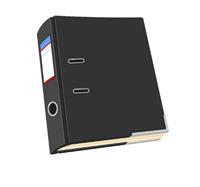



GENERAL







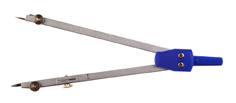





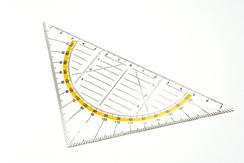
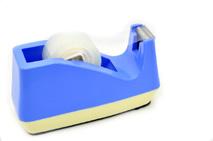





















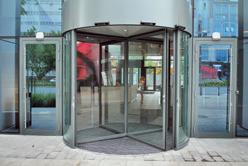














4
WORD LIST
nursery school kleuterschool
elementary schoollagere school
middle school
high school
middenschool
middelbare school (2de + 3de graad)
boarding school internaat
college hogeschool
university universiteit
freshman eerstejaarsstudent
sophomore tweedejaarsstudent
junior derdejaarsstudent
senior laatstejaarsstudent
bookworm boekenwurm
brainiac knappe kop
bully pestkop
class clown komiek van de klas
eager beaver leergierig iemand
quick learner snelle leerling
slacker luiwammes
teacher’s pet favorietje van de leraar
A for effort Je hebt je best gedaan!
to ace a test goed scoren op een test
to drop out of schoolstoppen met school
to flunk a test zakken voor een toets
to goof around onnozel doen
to hit the books beginnen te blokken
to lean back achteroverleunen
to learn by heart uit het hoofd leren
to make the grade een goed cijfer halen, slagen
Word Translation
My notes to play hooky spijbelen to pull an all-nightereen nachtje doortrekken
to put your heads together de hoofden bij elkaar steken to put your thinking cap onje denkpetje opzetten to rack your brain je hersenen pijnigen
OTHER WORDS
detention strafstudie
electives keuzevakken
exams proefwerken to favour voortrekken, bevoordelen
field trip schooluitstap
to grade punten geven grades / marks (GB) waardecijfers
to graduate afstuderen
to interrupt onderbreken to learn somethingiets (bij)leren
to line up in een rij staan mandatory verplicht to mop up opdweilen
points punten
pop quiz onverwachte toets to puke overgeven, kotsen to punish straffen to read out loud luidop lezen school lunch het middageten op school score puntentotaal to skip class spijbelen to study studeren
survival of the fittestwet van de sterkste to teach someone something iemand iets aanleren to text sms’en
a time waster iets waardoor je tijd verprutst
the university of lifelevenservaring worthless waardeloos
You express what you think about a certain topic.
You use arguments to say why you think that.
You give examples, refer to statistics or expert opinions to prove that you are right.
You repeat your statement as a kind of conclusion and maybe express some hope for the future.
- first of all, firstly,
- secondly / the second reason is …
- furthermore, another reason is …
- the last item I want to point out is …, finally, - in conclusion, concluding …
I can’t hand in my homework because my dog ate it. reason
The internet went dead yesterday so I couldn’t download the assignment. That’s why I haven’t handed in my homework in time and as a result I will get bad grades.
contrast
I didn’t have time to do my homework last night, but I promise I will do it tonight.
I didn’t finish my book report in time although my teacher gave the assignment two months ago.
If students don’t hand in their homework in time, a teacher will give them a bad grade. Unless they hand in their work with a £ 100 note. Then the grade goes up again. condition
Why are you writing?
What are you writing about?
Do you have a professional email address?
Do you have the email address of the person you are sending a message to?
If you are writing to someone you don't know well, be polite. Write in a formal way.
Do not use emoticons or abbreviations.
Salutation
Keep it short and simple!
Dear Mr/Mrs/Ms Henderson, (if you know their name) Dear Sir or Madam, (if you don’t know their name)
I am writing to you to talk about the test on vocabulary we have next lesson. I was absent last lesson and I could not take home the correct papers. I was wondering if you could make them available on the online learning platform. I am looking forward to hearing from you. / Thank you in advance.
(Yours) sincerely or kind regards, best regards or regards, (if you started with Dear + name)
Yours faithfully, (if you started with Dear Sir or Madam)
Lisa Amado 5OBShort introduction
Who are you, what is the reason for writing?
Avoid mistakes: read your email again.
Ending Main message situation/problem and solution
Full name + your class if you are mailing a teacher











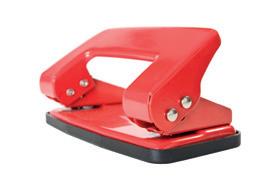
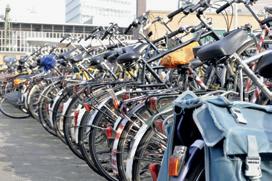

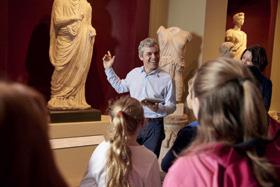

1 Do the following vocabulary exercises.
a There has been a murder at your school. One of your teachers murdered the principal. The police are investigating five main suspects. Complete your own suspicions based on the pictures below. Use all the pictures! Sometimes there is more than one possible answer.
3 The teacher stabbed him with in the
4 The teacher beat him to death with in the
5 The teacher cut him with the in the
b Which word / idiom is the odd one out? Explain why.
1 college / freshman / elementary school / sophomore / high school
2 an eager beaver / a time waster / a bully / a class clown / a slacker
3 to bully / to goof around / to hit the books / to flunk a test / to interrupt
c Replace the words in bold with an idiom.
1
My sister is being bullied because she’s the teacher’s favourite student
2
Oh my goodness, I forgot all about that history test we have tomorrow. I will have to study all night without getting any sleep!
3
Greg is an interested and enthusiastic student who wants to learn new things all the time.
5
I don’t feel like going to physics class today. I think I will skip this class
Score < 20 ≥20
Next exercise ex. 2 ex. 5
4
She studied all weekend for that science test, and she got a really good result
2 Look at these school supplies. First name all the supplies. Then, make a mindmap to link words together in a logical way. Use a separate piece of paper.





3 What school do these kids go to?

A B
1school lunch Aassembly hall
2physical education
Bbike shelter
3correct homework (and drink coffee)Ccanteen / cafeteria (US)
4chemistry
5chill out
650 ring binders
Dgym
Elibrary
Fscience lab
7books Gstudents’ lounge
8bicycles Hstudent office
9principal’s / headteacher’s speech Istorage room
10information Jteachers’ lounge
Score < 7 ≥ 7
5 Match the speech bubbles on the left with their meanings on the right.
1
He tells younger kids they look stupid or smell like dirty underwear.
When my brother was in high school, he did nothing other than joke around; he didn’t do any homework and never studied for a test.
He’s a bully.
a
b
c
He has to be at school next Saturday from 9 until 12, because he was caught smoking a cigarette in the restrooms.
4
5
12345
He’s a junior.
d
fifty-one ©VANIN
Score < 4 ≥ 4
Next exercise ex. 4 ex. 6
6 Grandma is talking about her life as a teenager at school, but she doesn’t remember everything correctly. Grandad knows that she means the complete opposite. What does he say when he corrects her story?
I used to be a real bookworm in the old days, always serious.
She was
4
I attended every class.
She all the time.
5
I especially liked all the mandatory subjects.
In the evening I always studied really hard, because I had difficulty understanding maths / math and physics and other sciences.
She didn’t. She only liked the She was intelligent; never had to study much.
And she understood everything straight away. She was
6
I graduated when I was 18.
She never graduated. She when she was 16.
7
I met your grandfather when he was a senior in high school (=in the last year of secondary school).
No, I wasn’t. I was in my second year. I was a And I was dating another girl. Becky!
Oh yes, I remember now, she was such a slacker.
Next exercise ex. 4
No, she wasn’t. She was interested in everything the teachers told her.
A real
1 How do you feel about the time that school starts in the morning?
a Preparation: first, fill in the correct linking words in these sentences.
1 School should start around noon surveys have shown that the teenage brain doesn’t wake up before 11 a.m.
2 school starts too early, students will just sleep during class, it’s a waste of time for both teachers and students.
3 I’m really a morning person, I can’t stay focused for long, I can have two or three cups of coffee during class.
b Action: now write your opinion in an email to a teacher. Use the template below. Use the information from exercise a, and use correct structural markers and linking words in your text.
c Reflection: check your writing by filling in the checklist.
Checklist: writing an email to the teacher
1 Strategy and structure
• My email contained all the necessary parts, such as salutation and ending.

Yes I think so No
• I used the correct structure (OREO).
• My email was formal and polite.

2 Content and language
• I used the correct linking words and structural markers.
• I used correct spelling and punctuation.
• I used correct basic grammar.
Feedback
Score < 8 8-12
> 12
Next exercise ex. 2 ex. 4 ex. 6
2 Choose the correct ‘ingredients’, linking words and structural markers for your email.
School uniforms / Why uniforms should be reinstated / My opinion
Dear Mrs. Hammersmith / Hi Miss / Dear Emma
I would like to explain to you why I think school uniforms should be reinstated at our school. Furthermore / First of all / But when kids wear uniforms, visible class markers between rich kids and poor kids disappear.
Another reason / A second reason / A last reason has to do with focus. Although / Unless / Because / When students don’t have clothing to notice, comment on or respond to, they can spend more mental energy on learning.
Furthermore / Because / A last reason I would like to point out is the fact that wearing the same uniform can increase the sense of community. Pupils feel united but / unless / because they all look the same. Like a football team wearing the same shirt.
I hope I have been able to convince you that uniforms have more advantages than disadvantages.
Yours sincerely / See ya / Kind regards / Cheers
E / Elisa / Elisa Gomez / EG / Elisa Gomez (5B&O)
Score < 6 6 – 8
> 8
Next exercise ex. 3 ex. 4
3 Put these sentences in the correct order. Mark the structural markers that help you. Tip: the first sentence you need is I.
A Friends of students do not have the necessary experience to assist, and they also have work to complete.
B The last reason I want to point out is the fact that different students have various perspectives on things.
C If you happen to know someone who would be willing to do my homework for me, please contact me through Instagram @homeworkhater.
D If kids spend all of their time doing homework, they may be unable to gain essential life skills, such as independence, learning to cook, time management, or even mingling with others.
E A second reason for banning homework is that most teachers fail to communicate everything needed to complete the task during class. Parents are unable to assist with all functions.
F Furthermore, students who have too much homework are less likely to participate in extracurricular activities, such as athletics, musical instruments, and other activities.
G These were, for me, the most important reasons to ban homework.
H First of all, students who invest too much time in homework do not reach their developmental needs or develop other essential life skills.
I I don’t know anybody who likes homework and I’ve never heard any good reason why it should exist, so I want to see homework banned as soon as possible.
J While some students memorise and fully comprehend a topic by repeatedly reading the same material, others memorise and fully comprehend a topic by watching a relevant video.
Source: www.calltutors.com
4 Read the email on the next page and answer these questions.
a Who wrote this email?
b Who did he write it to?
c Do you expect the email to be formal or informal? Why?
d What is his goal? Why did he write the mail?
e He made some mistakes. Correct them.
mrfreddytheteacher@school.com
Dear Mr. Freddy,
I read your feedback on our group assignment and I do not agree with my grade.


I mean, seriously? I did all the research and other preparations. The others did absolutely zero effort. For real!

And you lowered our grade because we missed the deadline. We handed it in 2 hours later. Two hours! What’s the big deal?
I hope you reconsider and give me a higher grade after all. Thank you so much.
Mike Smithhomework Score
Next
5 Write a formal email to the teacher.
a Preparation: pretend you are Mike Smith. Think of two reasons why you missed the deadline.
b Action: rewrite the email, respecting the rules of a formal email to a teacher. Use at least two structural markers.
c Reflect on your work by filling in this checklist.
Checklist:
1 Content and structure
• I mentioned two reasons why I / Mike missed the deadline.
• I used the correct structure.
• I used formal language.
2 Language
• I used the correct vocabulary.
• I used the correct linking words.
• I used the correct structural markers.
• My sentences are grammatically correct.
• I used correct spelling and punctuation.
Feedback
Score < 12 ≥ 12
Next exercise Check 3, p. 60
6 Watch Emma Blackery’s vlog on homework excuses and answer the questions.
a What does Emma Blackery mean by a Homework Jesus?

b Why does she think acting like a Homework Jesus is a bad idea?
c Make a list of four realistic and four unrealistic excuses. Write them in the ‘realistic’ column if they sound like an excuse you may have heard or used before, and in the ‘unrealistic’ column if you think teachers would definitely not buy it.
d Emma used to do homework. She did all of it because she didn’t want to get into trouble. But by the end of the last year of secondary school she didn’t care anymore. How old was she then?
e How did her teachers react to her not handing in homework anymore?
f Why does she regret not doing any homework?
Score < 12 ≥ 12
Next exercise ex. 4 ex. 7
7 Is homework useful?
a Preparation: think of three reasons why homework could be useful after all.
b Action: write your opinion in a well-structured argumentative text. Use the correct linking words and structural markers.
c Reflect on your work by filling in this checklist.
Checklist: writing your opinion
1 Content and structure
• I mentioned three reasons why homework is useful.
• I used the correct structure.
2 Language
• I used the correct vocabulary.
• I used the correct linking words.
• I used the correct structural markers.
• My sentences are grammatically correct.
• I used correct spelling and punctuation.
Score < 7 ≥ 7
Next exercise Check 3, p. 60
1 There are some undercover deputies who are trying to act as teachers at your school. They want to know the rules at school.

a Preparation: think about the rules of the school and how to behave in class.
b Action: write a list of 10 rules for the undercover deputies. Make sure that you use modal auxiliaries and other ways to express obligation, prohibition and permission correctly. Use at least 5 different forms.
c Reflect on your list by filling in the checklist.
Checklist: writing a list of rules
1 Content
• I wrote 10 rules.
• I have a good mix of things that are allowed and not allowed at school.
2 Language
• I used modal auxiliary verbs correctly.
• I used correct spelling and punctuation. Feedback
Yes I think soNo
Score < 6 6-8 > 8
Next exercise ex. 2 ex. 5 ex. 6
2 What would the student or the teacher say in these situations?

a Complete the sentences with a correct modal auxiliary.
b Choose the best word to finish the sentence. Choose from:
dictionary – locker – mean – pencil case – school bag – sentence
TEACHER
I borrow someone’s pen?
I left my at home.
STUDENT
You always check your before leaving for school.
I have left my course book in my STUDENT
You leave the room to go to your locker during class.
TEACHER
TEACHER
Hand in your test.
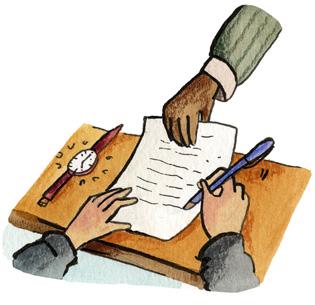
I finish my , please?
STUDENT
What does ‘woozy’ ? STUDENT

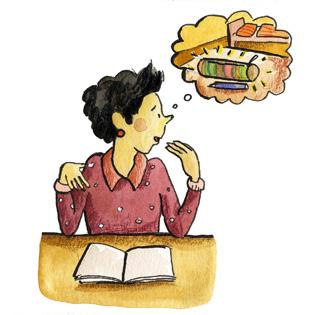
If there’s a word you don’t understand, you look it up in your
TEACHER
If you have a question, you always put up your hand.

I switch on the lights, please?
Score < 7 7 – 10
> 10
Next exercise ex. 3 ex. 5
3 Read the classroom rules of this teacher. What does this teacher actually want or doesn’t want the students to do? Rewrite every rule using a modal auxiliary in your sentence.
1 Your teacher is a person with a normal to high IQ. Do not offend them by coming up with silly excuses why you can’t hand in your homework in time.
2 I am not psychic: if your name isn’t on your work, I won’t guess who you are and I won’t grade it.
3 If your mobile phone goes off, you will be asked to sing one verse and one chorus of a Justin Bieber tune of my choice.
4 People sitting in the back row will clean up the classroom after class.
5 If you’re more than 10 minutes late, do not enter the classroom without suffering pain or embarrassment.
6 If you refuse to follow my rules, accept the consequences.
Score < 4

≥ 4
Next exercise ex. 4
4 Read the high school rules made up by the students of this school. Pick 5 rules and describe what you can or can’t do.
1 Sit at the same lunch table every day and keep your clique close by.
2 Don’t ever let a friend drink regular soda.
3 Ex-boyfriends are OFF LIMITS.
4 Never wear the same thing twice.
5 Jeans on Fridays only.
6 If you ever get a compliment from a mean girl, bells should go off: something is wrong.
7 Dress as hot as possible on Halloween.
8 Get average grades: if your grades are too good you will be considered a dork; if they are too bad you risk becoming a slacker.





9 Don't play sports because they make you sweaty.
10 Stay home sick if you get a pimple.
Score < 3 ≥ 3
Next exercise
All done!
5 Write a rule for our every day school life for each picture.
6 Modals in the movies.
a There are more modals than the ones you have seen in this unit. Complete the sentences in column A with the modals below.
can (5 x) – can’t (3 x) – could (2 x) – couldn’t (2 x) – ‘d – may (2 x) – might (2 x) – must –ought to – shall
b Can you also guess which movie they are taken from? Indicate your choice in column B.
1 Science is not good or bad, Victor. But it be used both ways. That’s why you always be careful.
Star Wars: Episode
VII: The Force Awakens Frankenweenie
2 Perhaps you go. It wake up. Titanic Harry Potter and the Sorcerer’s stone
3 Ah! I really cook, I? But you… you , right?
Ratatouille
The Hunger Games: Catching Fire
4 You not pass! High School Musical Lord of the Rings
5 - Good morning! - Doctor, my name is Clarice Starling. I speak with you?
- You’re one of Jack Crawford’s, aren’t you? - I am, yes. -
I see your credentials? - Certainly.
6 - Okay, I think I understand that you did this to start a movement to become a symbol.
- Come on, Murray! Do I look like the kind of clown that start a movement? I killed those guys because they were awful.
Top Gun Silence of the Lambs
Spider-Man: Far from Home Joker
7 - This is a man who dedicated his life to making money by lying with every breath that he muster to keeping murderers and rapists on the streets.
Murderers?
A woman…
Murderers, John, like you said …
A woman so ugly on the inside, that she bear to go on living if she be beautiful on the outside.
Seven Shrek
8
How would you like to go home? To America? To your children?
You fix that. No one
9
That truck belong to you?
It does.
I’ like to buy it.
It’s not for sale.
10
Well, it means you’re ready to rejoin society.
I know what you think it means, sonny! To me, it’s just a made-up word. A politician’s word so that young fellas like yourself wear a suit and a tie and have a job. What do you really want to know? Am I sorry for what I did?
11 Humans… they are not a cowardly wretches we were promised. They stand. They are unruly and therefore be ruled. To challenge them is to court death.
Toy Story
Breaking Bad
Finding Nemo
The Shawshank Redemption
Aliens
The Avengers
c Watch the video to check your answers. watching Score <14
14
Next exercise ex. 5
done!
You are a student at a very strict school, and you want to let your principal know (by email) you don’t agree with one of those rules.
Watch the video about some very strict schools and choose one. Pretend you are a student at that school and focus on one of the rules you don’t agree with.
1 Think of a few reasons why you don’t agree with that rule. Plan what you are going to write with the OREO-structure. Use key words, not full sentences.
Action
2 Now write your text in full sentences, using the correct structure markers and linking words. Email your text to your English teacher. Apply the rules described in the Strategy ‘How to write a formal email’ on p. 47.
3 Reflect on your work by filling in this checklist.
Checklist: writing a formal email Yes I think so No
1 Structure and content
• My email contains all the necessary parts.
• I used the correct structure.
• My email is formal and polite.
2 Language
• I used the correct vocabulary.
• I used the correct linking words.
• I used the correct structural markers.
• My sentences are grammatically correct.
• I used correct spelling and punctuation.
Feedback
Trace your steps on diddit.
watching
check in
main track
Step 1: talking about crimes and punishments
on different tracks
trace your steps
check out: reporting a crime
 Step 3: describing the offender
Step 2: describing past situations
Step 3: describing the offender
Step 2: describing past situations
1 Play the ‘Never have I ever’ game.
To start off, every player holds up their hands with all 10 fingers showing. Then someone reads ‘Never have I ever’ questions from a list. Every time a player has done one of the things mentioned, they must put a finger down. The person with the last finger standing wins!
SPOKEN INTERACTION
2 Malik does the challenge with his mother. Which of these things do you think would make his mother angry?
Makes his mother angry Question Malik has done it
1 Never have I ever snuck / sneaked out.
2 Never have I ever done any other drugs than weed.
3 Never have I ever run from the cops.
4 Never have I ever been arrested.
5 Never have I ever hooked up with my ex.
6 Never have I ever been on a bender.
7 Never have I ever shown up at school intoxicated.
8 Never have I ever skipped school to get high.
9 Never have I ever shoplifted more than $ 100 worth of items in one shop.
10 Never have I ever cheated on my significant other.
11 Never have I ever failed a drug test.
12 Never have I ever failed more than three classes.
bender: an event marked by the consumption of copious amounts of alcohol
3 Watch the clip and indicate which things Malik has done. watching
4 Let’s play the game! Do you dare be honest? Put ten fingers up and listen to the questions your teacher reads out loud. SPOKEN INTERACTION

1 Which real crimes do you already know?
2 What are the steps in the criminal process after the offender has committed a crime? Put the steps in the correct order.
The offender is convicted. / The offender pleads guilty.
The police arrest the (possible) offender.
The offender appears in court. / There is a trial.
The offender is charged.
The judge sentences the offender.
3 Read the short articles about these Hollywood celebrities and match.
READING
In 2009, and then-girlfriend Rihanna had an argument that escalated into domestic abuse on the part of Rihanna was left with visible facial injuries and was hospitalized; was subsequently charged with felony assault and making criminal threats on March 5. He pleaded guilty to a felony on June 22 of that year and accepted a plea deal of community labour, five years’ probation and domestic violence counselling.
In 2013 he got into an accident with a Mercedes Benz and refused to show his driver’s licence, and then reportedly gave false insurance information. The singer was charged with two counts in the case: including a hit-andrun (leaving the scene of an accident without exchanging proper information) and driving without a valid licence.
In 2017 his ex, Karrueche Tran, also filed for a permanent restraining order. In the filing, she said that had beaten her during their relationship, which finally came to an end after it emerged in March 2015, he had had a daughter with aspiring model Nia Guzman.
Source: People; Daily Mail

and had one of the ugliest break-ups in court. filed for divorce and obtained a temporary restraining order. The filing, which alleged that assaulted her after a drunken argument, was accompanied by photographs of her bruised face.
filed legal documents on Tuesday to the superior court of Los Angeles withdrawing her request for a domestic violence restraining order in a deal which included a reported $ 7 million divorce settlement.

In 2018 wrote an opinion-editorial essay saying she had become a ‘public figure representing domestic abuse’. sued for $ 50 million in damages. In 2022 the high-profile trial was followed all over the world and the jury unanimously found that could not substantiate her allegations against and that he knew her claims of abuse were false when she published her 2018 essay. The jury determined that acted with actual malice and awarded $ 10 million in compensatory damages and $ 5 million in punitive damages in his defamation suit.
Source: The Guardian; NBC News
Los Angeles Lakers guard, , was arrested. He was charged with possession of marijuana under two ounces and possession of drug paraphernalia. This misdemeanour is punishable by up to 180 days in jail and a $ 2,000 fine. Caruso paid a $ 552 fine for the paraphernalia charge.

Source: CBS Sports; The Guardian
This R&B singer has been sentenced to 30 years in prison for using his celebrity status to sexually abuse children and women.
In 2021, he was convicted of racketeering and sex trafficking crimes. Ahead of his sentencing, numerous women took the stand to confront
The singer faces further legal action, when he goes on trial again, this time relating to child pornography, obstruction of justice and sexual assault and abuse.
Source: BBC News

In 2021 YouTube restricted the ability for the popular makeup vlogger, , to make money from the online video platform, following underage sexting and grooming allegations. The beauty influencer, with 25.5 million subscribers, was accused, by more than 15 men and boys, of sexual misconduct, with some alleging underage sexting took place.
Source: The Guardian
In his youth, this man was involved in various criminal activities, including picking pockets, mugging people and robbing stores at gunpoint.
In 1992 he was convicted of one count of rape and several counts of deviate sexual misconduct. A judge sentenced him to 10 years and a $ 30,000 fine. After sentencing he was sent to a medium security prison.
In 1995, he was released early. Conditions of the release included four years’ probation with a 100 hours of community service per year and psychological counselling.
In 1999, he was sentenced to serve one year in jail for assaulting two motorists after a traffic accident. The official sentence was two years jailtime for each assault, with all but one year suspended, 200 hours of community service, a fine of $ 2,500 for each count of assault, two years’ probation following completion of the jail term and continued therapy.
In 2006 he was pulled over in Scottsdale, Arizona, after leaving a nightclub and arrested when police discover three bags of cocaine in his possession.

Source: CNN International
This one came as a bit of a shock since she’s such a sweet, giving star. Well, before you go thinking the worst of the Divergent actress, she was actually arrested in October 2016 for criminal trespassing after she took part in a 100-person protest on the Standing Rock Indian Reservation in South Dakota. was on a construction site for a controversial pipeline project. Her mom actually documented the chaotic moment on camera and TMZ obtained the footage. The actress was released from jail later on Monday. pleaded guilty to one count of disorderly conduct. For her admission of guilt, she was given one year of unsupervised probation.
4 Complete the facts using the verbs below. Put the verbs in the past simple form. to be charged – to be convicted – to be released – to be sentenced – to be sued – to file –to obtain – to plead – to take the stand
1 Amber Heard for divorce.
2 Johnny Depp a temporary restraining order.

3 Shailene Woodley from jail. She guilty to one count of disorderly conduct.


4 Amber Heard for $ 50 million in damages.
5 Ahead of his sentencing, numerous women to confront Kelly.
6 Mike Tyson to serve one year in jail for assaulting two motorists after a traffic accident.
7 Mike Tyson of one count of rape and several counts of deviate sexual misconduct.
8 Alex Caruso with possession of marijuana under two ounces and possession of drug.
5 Complete the crossword puzzle. Use the definitions and photos below.
1 The amount of time a convicted criminal spends in prison.
2 Work in which a judge orders a defendant to perform as a form of punishment that benefits the community.
8
4
5 The money awarded to compensate for damages, injury or another incurred loss.




6 An official order given by a judge which demands that the criminal is restricted to have contact with someone else. This is to prevent someone from causing harm to someone else, in situations involving domestic violence, harassment, stalking or sexual assault.
9 A sum of money that must be paid as punishment for breaking a law or rule.
10 A system that allows a person who has committed a crime not to go to prison if they behave well and if they see an official (called a probation officer) regularly for a fixed period of time. 11

12 A legal recompense designed to punish defendants whose conduct is considered intentional.


7 Discuss these questions.
a Which sentences in exercise 6 do you think are appropriate in relation to the crime? Rank them in order from ‘Totally okay’ to ‘Scandalous’.
b Discuss your ranking with a partner first, and then report to the class.
c Which sentence should James Charles get in your opinion?
8 Which sentences do you think are appropriate for these crimes?
a Look at these examples. Think about the verdict and the sentence you would give.
b Ask a classmate what verdict they think is appropriate.
Nichole stole a mobile phone from a younger boy. She immediately admitted it and gave back the mobile phone.
Drew and Cihan were caught with more than 20 ecstasy pills. Drew claimed it was for personal use, but Cihan admitted they were planning to sell it.
Juan was caught shoplifting a pair of pants and two sweaters worth € 150.
Wiam and Lisa robbed a gas station at gunpoint. They stole € 2000. Nobody got hurt. They were stopped by the police after speeding.
c Come up with three situations yourself about DUI (Driving Under the Influence), burglary and pickpocketing. Make sure you give a context as in the examples in exercise b.
9 Work with a partner. You will get a case and you will have to play a lawyer. One of you will strive for a no sentence verdict (defence), the other will strive for the harshest (suitable) sentence (prosecution). Use the structure below to prepare your case.
a Prepare your ‘verdict’ below.
Dear Judge, I suggest that this criminal: I have a few reasons for this.
First of all, evidence shows / doesn't show that
Moreover, I would call your attention to the fact that
For all these reasons, I am convinced that
b Action: sit together with another pair and present your case. Let the other group decide who has the best verdict.
c Reflection: check your presentation by filling in the checklist.
Checklist: passing the verdict
1 Content
• My sentences are logical and well-structured.
• My suggestions were reasonable and logical.
2 Language
• I used correct words to talk about punishments.
• I used correct basic grammar.
• I minded my pronunciation.
Feedback
CHECK 1, p. 103
1 Read the short summary of My friend Anna and answer the questions. READING
This is the true story of Anna Delvey, the fake heiress whose dizzying deceit and con-artistry deceived the Soho hipster scene before her ruse was finally and dramatically exposed. After meeting through mutual friends, the ‘Russian heiress’ Anna Delvey and Rachel DeLoache Williams soon became inseparable. They lived in a world of endless excess: high dining, personal trainer sessions, a luxury holiday ... and Anna footed almost every bill.

But after Anna’s debit card was declined in a Moroccan medina whilst on holiday in a five-star luxury resort, Rachel began to suspect that her increasingly mysterious friend was not all she seemed.
This is the incredible story of how Anna Sorokin conned the high-rollers of the NYC social scene and convinced her close friend of an entirely concocted fantasy, the product of falsified bank documents, bad cheques and carefully edited online photos.
Source: Standaard Boekhandela Where did Anna claim her money came from?
b Who is Rachel DeLoache?
c Which crimes did Anna commit?
to con: to trick concocted: invented to foot the bill: to be responsible for paying the cost of something ruse: way of doing something or of getting something by cheating somebody
2 Here are two sentences from the summary in exercise 1. Answer the questions.
1 Anna Sorokin conned the high-rollers of the NYC social scene.
2 Rachel began to suspect that her friend was not all she seemed.
a What tense is used?
b What is the difference between the two verb forms?
c Do you remember how to form this tense for regular verbs? Complete the table below.
1I began to suspect her.
2 You didn’t foot the bill.
3She convinced her friends. Did she convince her friends?
RULE:
3 Complete the text using the past simple form of the verb. Mind the irregular verbs! Check the summary if you are not sure.
Kacy, the fitness trainer, Jesse, the videographer and Rachel had come to Marrakech at Anna’s invitation. Anna had offered to pay for the flights, a private riad and all of their expenses. But the last day the dream was shattered. Kacy was sick and had a flight to return home. Rachel called the concierge for a taxi and helped her to pack.
Kacy (1) (to be) out of sorts, and her movements were labored as she ambled around her bedroom, picking up clothing and shoes. After helping for about ten minutes, I (2) (to pause) to see if her car was out front. But one step into the living room, I (3) (to see) two men standing across from me. Their patterned silk jackets with mandarin collars (4) (to tell) me they were hotel management.
“Where is Miss Delvey?” the taller one asked, his tone stern. The men’s faces were familiar – they’d spoken with Anna the night before, too – but they (5) (not to look) friendly.
There had been an issue with the debit card Anna had given the hotel to pay for our stay, and after two days of polite but firm pressure from the management, she still hadn’t fixed the problem. Anna (6) (to resent) institutional authority and seemed to shirk rules and regulations as a matter of principle. The hotel (7) (to make) it very clear that they needed to have a functioning card on file, but Anna (8) (to answer) their entreaties with flares of condescension and flashes of anger. How dare they interrupt her vacation with such unpleasant badgering!
Rachel woke up Anna and asked her to go talk to the people of the hotel.
I skipped off to rejoin Kacy, assuring the managers that Anna was on her way. At this point, I (9) (to realize) that my panicked phone calls asking the concierge for an urgent car to the airport had set off alarm bells. They (10) (to think) we were fleeing. My heart raced. Kacy’s illness, Anna’s non-payment, our general disorganisation – the troublesome winds that had gained force through the week were now whirling into a perfect storm.
4 Read the second part of the extract of My friend Anna and answer the questions. Indicate in the text where you found the answer.
a How did Anna act after making the calls?
b How did Rachel know that the managers were staying?
c Why did Rachel give her credit card?
Kacy finally got into a car Rachel went back to Anna.
Anna’s cell phone sat blankly on the coffee table in front of her. It struck me as odd, with the men still there, that she was done making calls—even odder that she’d stopped using her phone altogether. Desperate to understand, I looked to her face for a clue. She appeared neither worried nor particularly calm—if anything, she seemed strangely detached. This was the frightening part. It was clear that the men were waiting for her to do something. What was she waiting for?
“What’s going on?” I asked her. “Were you able to sort things out?” She made a lazy gesture toward her phone. “I left messages,” she said. “They should be calling me back.”
“How long will that take?”
“I don’t know – I’ve been promised to have this resolved already.”
“Is there no one else you can call? Your banks should be open, right?”
“I called them already. They shall be taking care of this.”
Anna’s detachment was startling, and it made me angry. The tension in the room was unbearable – did she think this could wait?
The La Mamounia managers listened to our conversation with their patience visibly ebbing. Not only had they been in our riad all morning, they’d gone through the same ordeal with Anna the night before. They had stopped her as we passed through the lobby after dinner and followed her to the riad to wait as she made calls. Thinking it
best to give her privacy, I had excused myself and gone to bed. When I left the room, the men were standing just where they stood now: at the edge of the living room by the steps to the foyer, effectively blocking our path to the main door.
“So, you’re gonna sit there and wait?” I asked Anna.
“There’s nothing else I can be doing. I told them, but they don’t want to leave, so ...”
I glanced at the managers. No shit, Anna, I thought. The men were firmly planted with their hands clasped: one man’s, behind his back, and the other’s, in front. They weren’t going anywhere.
The taller one turned to me, exasperated. I saw the train coming before it hit me, but I couldn’t see a way off the tracks.
“Do you have a credit card?” he asked.
I looked at Anna and suppressed an urge to vomit. Jump, she seemed to say. I’ll catch you. In an instant, her bearing went from obstinate to conciliatory, and her expression softened, particularly around her eyes. “Can we use it for now?” she coaxed.
Adrenaline surged through my body. Irresolute, I looked at the managers, hoping for latitude. “It’s just for a temporary hold,” the tall one said. “The final bill will be settled later.”
“And I shall be hearing back,” Anna added, picking up her phone. Seeing no alternative, I buckled under the pressure, unzipping my beige travel pouch and removing my personal credit card. A manager stepped forward to take it. “The block will only be temporary,” he again assured me.
The episode couldn’t have lasted more than fifteen minutes, but it felt like eons. When the men were gone (along with my credit card), I turned to Anna in disbelief.
“Did you tell your parents you were going to Morocco?” I asked. She shook her head no.
“But you’ll fix this, right?”
It was a statement more than a question. I didn’t need to tell Anna what she already knew – that she had boxed me into an extremely unpleasant position.
“Yes, I’m taking care of it. Thanks so much for stepping in,” Anna said cheerily.
(…)
But a short while later, while Anna was getting dressed, the taller manager returned to the living room just as I was leaving to meet Jesse. He was the same man who had taken my credit card, so I assumed he was there to return it. It was either a clipboard or a tray that he passed me – I can’t recall – but it held a slip of paper that looked like a receipt, which he asked me to sign. My stomach dropped. The slip of paper displayed a block of numbers – date, time, some unintelligible coding – and farther down, in a slightly larger font, “30000.00 MAD.”
I froze. Receipts came after charges, not before them, I thought. What was this?
“I thought my card wasn’t going to be charged,” I said. He pointed to a word on the ticket printed in all uppercase letters: “PREAUTORISATION.” It was French, a language I had studied, but in this context the word’s meaning eluded me.
to buckle: give in to clasp: grab firmly to coax: persuade conciliatory: appeasing, willing detachment: disconnection, separation ebbing: decreasing eons: ages
exasperated: angry and annoyed irresolute: indecisive, doubting latitude: freedom, room to move obstinate: stubborn ordeal: trouble, trial riad: traditional Moroccan house or palace with a courtyard
70
“Your signature for the block,” the man said. God, I wish I had said no, had walked away, had flat-out refused. It was over in a heartbeat. It wasn’t even my full name that I scribbled: if you didn’t know any better, you’d think it was signed “Rah.” That was enough.
Source: Rachel Deloache Williams, My friend Anna, Ch. 1 Mayday, Gallery Books
5 Look at this sentence from the text in exercise 4.
While Anna was getting dressed, the taller manager returned to the living room.
a How many verbs are used? Highlight them and then draw them on the timeline.
b Which tenses are used in the previous sentence? Add the names to the timeline.
c In exercise 2, the form of the past simple is explained. Look at exercise a and complete the table on how to form the past continuous.
Form of the past continuous
Positive (+)
1st p. sing. I was wondering about you.
2nd p. sing.
3rd p. sing.
1st p. plur.
2nd p. plur.
3rd p. plur.
Rule:
Negative (-)
Questions (?)
You weren’t trying.
Was Anna getting dressed?
d Complete the grammar box with information on when to use these two past tenses.
Tense 1: Tense 2:
= (shorter or single) actions in the past.
e.g. I called them already.
= actions going on in the past.
e.g. While Anna was getting dressed …
Use both tenses if you want to make clear something happened while you were in the middle of a longer action.
e.g. While Anna was getting dressed, the taller manager returned to the living room.
See p. 90
6 Complete the sentences using the past simple or past continuous.
1 I (to walk) on the street when suddenly someone (to steal) my wallet.
2 They (to close) the shop when the burglars (to enter).
3 Juliet (to meet) Hamza, while she (to wait) to give her police statement.
4 Justin (to commit) a crime when he (to be) just 16.
5 Police (to question) the suspect when he (to try) to run away.
6 I (to rob) a bank in my dream when my alarm (to go) off.
7 You will listen to a podcast in which the host, Alex Cooper, interviews the real Anna Delvey. Fill in the questions that match the answers. Then listen to the podcast to check your answers.
No.
No, like no one introduces yourself like that. What kind of sentence is that? That is completely ridiculous.
listening
©VANIN
Well, I think people put together the story after the DA Office released their original press release. That would be my assumption.
I don’t know, I wasn’t doing anything super crazy. I feel like there’s just people who were spending way more money than I did.
Well, I just didn’t want to commit. I knew I didn’t want to be in one place for one year.
8 Read the questions from the interview in exercise 7 one more time and put them in the correct category.
Who is Anna Delvey? What happened in New York?
9 Which questions are important to ask when trying to find out what kind of crime was committed?

10 Use the information from exercises 8 and 9 to complete the grammar box.
There are different kinds of questions in English.
1 Yes/no questions: the answer is ‘yes’ or ‘no’ (closed questions).
e.g. Are you a German heiress? + +
e.g. Did you choose to live in a hotel? + + +
2 Question word questions: answer questions like ‘where’, ‘why’, ‘when’, ‘how’ (open questions).




e.g. Where did you get the money from?
e.g. What wasAnna wearing?
e.g. When can you come online for an interview?
e.g. Where do you think the narrative started?
3 Subject questions: answer the question ‘who’ or ‘what’.
e.g. Who committed the crime?
e.g. What happened to Rachel?
Don’t forget: the auxiliary verb indicates the time.
e.g. Where do you come from? = present
e.g. When did you commit a crime? = past See p. 92
11 Formulate the questions, and then complete the sentences using the past simple or past continuous.
a Question: What / to happen:
Answer: (to walk) in the street when suddenly someone (to steal) my wallet.
b What / they / to do / when / burglars / to enter:
They (to close) the shop when the burglars (to enter).
c When / Juliet / to meet / Hamza:
Juliet (to meet) Hamza, while she (to travel) in Europe.
d Where / Justin / to commit a crime:
Justin (to commit) a crime when he (to be) on a holiday in Brazil.
e What / police / to do / when / suspect / to try to run:
Police (to question) the suspect when he (to try) to run.
12 Read the case of the Ice Box Murders and fill in the missing verb forms in the past simple or past continuous.
READING
In 1965, Fred and Edwina Rogers (1) (to live) in Houston along with their grown son, Charles. The family mostly (2) (to keep) to themselves in their quiet neighborhood, especially given Charles’s reclusive and antisocial behavior. In fact, many neighbors were not even aware that Charles (3) (to live) at home with his parents, because he (4) (to leave) the house each day before dawn and
(5) (not to return) until well after nightfall. When a family member hadn’t heard from the Rogers in several days, he
(6) (to call) the Houston police for a welfare check on his elderly aunt and uncle. The patrolmen were unable to locate Fred and Edwina, but they
(7) (to notice) food sitting on the dining room table. They
(8) (to open) the fridge and
(9) (to notice) numerous packages of meat, neatly stacked atop one another. Then they noticed two human heads in the vegetable bin. Additional officers
(10) (to arrive) on the stomach-turning scene and slowly removed the packages full of dismembered body parts from the fridge. The remains
(11) (to be) that of Fred and Edwina Rogers. The police
(12) (to deduce) that Edwina had been brutally beaten and shot, while Fred (13) (to suffer) forceful trauma to the head. Charles (14) (to be) nowhere to be found. Naturally, Charles was the prime suspect in this heinous crime. However, he seemed to have vanished off the face of the earth. Though the police (15) (to be) able to collect circumstantial pieces of evidence against him, Charles Rogers was never found.
Source: https://the-line-up.com/ice-box-murders
13 Role-play the interview between a police officer and Charles, the main suspect in the disappearance of Fred and Edwina Rogers.
a Preparation: pair up and decide who will be the police officer and who will be Charles.
If you are the police officer, prepare at least ten questions to ask Charles. Use a separate piece of paper to write down your questions.
If you are Charles, read the text in exercise 12 again so you have all the necessary information.
b Action: role-play the interview.
c Check your task by filling in the checklist.
Checklist:
1 Content
• We covered all the necessary questions.
• We started and ended the conversation properly.
2 Language
• We used the correct words to describe the crimes.
• We used the correct past tenses.
• We asked and answered the questions correctly.
• I paid attention to my pronunciation.

1 Which physical characteristics would you describe if you had to describe an offender?



2 Can you match the sketch with the picture? How could you tell the difference? watching


3 Listen to a part of the podcast and answer the questions.
a Who is introduced in the podcast?
b What is the experiment they did?
c What is Lex describing?
39 years old thin yes
6’3 feet (190 cm)
I am aware of none of those things. Very little, only on the sides, reddish brown. Significant male-pattern baldness.
listening
d Why does Kelly ask: ‘Why is that (having little hair)’ and not ‘Is he balding’?

e What does Kelly do with the giant pack of pictures?
f What is similar about the ‘picture on the right’ according to Lex?
g What is similar about the ‘picture on the left’? What isn’t similar?

h Kelly chooses ‘the mohawk’ to begin from. What does she have to change?
4 Choose one of the pictures and indicate which facial characteristics match. Next, make another classmate guess which one you have chosen.
READING SPOKEN INTERACTION

Eyes
round slanted almond
clear
bloodshot specifics
long eyelashes
Nose shape long wide flat nostrils wide narrow

Mouth lips thin medium full
Chin round oval pointy cleft
Complexion notes pores acne rash bumps
Facial hair shaven unshaven beard moustache goatee sideburns
Extra glasses scar a mole
5 There are many different skin tones. Which words can be used? Do some research online if necessary. Discuss in class.






6 Do the crossword about styles.

7 Roll the (online) dice and describe the skin and hair of your character.


8 Which special features do you see here?




9 Work with a partner. One of you will have a teacher in mind. Try to describe them as specifically as possible. If necessary, use the form from exercise 4. The other will try to draw this teacher and figure out who it is.






CHECK 3, p. 116
SPOKEN INTERACTION
Past simple and past continuous
I was walking in the park when all of a sudden I saw the bloody knife.
1st p. sing. 2nd p. sing. 3rd p. sing.
1st p. plur. 2nd p. plur. 3rd p. plur.
I visited You visited He/She visited We visited You visited They visited
Rule: Subject + base form of the verb + (e)d
I didn’t visit You didn’t visit He/She didn’t visit We didn’t visit You didn’t visit They didn’t visit
Subject + didn’t / did not + base form of the verb
Did I visit?
Did you visit?
Did he/she visit?
Did we visit?
Did you visit?
Did they visit?
Did + subject + base form of the verb?
* Irregular verbs: Mind the irregular verbs in the positive form. You have to learn them by heart (see p. 93).

Keep in mind:
– Mind the spelling of regular verbs like ‘try’ (tried), ‘stop’ (stopped), ‘arrive’ (arrived), ‘travel’ (travelled) in the positive form.
– In the negative, the auxiliary can have a long or short form:
e.g. He didn’t visit = He did not visit.
'To be' is a special verb: there is no ‘did (not)’ for negative sentences and questions.
e.g. He wasn't a criminal.
e.g. Were you satisfied with the sentence?
(Shorter or single) completed actions in the past.
e.g. Bruno Mars pleaded guilty to a drug charge in 2010.
SubjectPositive (+)
1st p. sing.
2nd p. sing.
3rd p. sing.
1st p. plur.
2nd p. plur.
3rd p. plur.
I was going
You were going
He was going
We were going
You were going
They were going
Rule: Subject + was/were + ing-form of the verb
Longer actions going on in the past.
FORM
Negative (-)
I wasn’t going
You weren’t going
It wasn’t going
We weren’t going
You weren’t going
They weren’t going
Subject
+ wasn’t (was not) / weren’t (were not) + ing-form of the verb
Questions (?)
Was I going?
Were you going?
Was it going?
Were we going?
Were you going?
Were they going?
Was/were + subject + ing-form of the verb? USE
– When we talk about two (past) actions that were happening at the same time.
Keywords:
'while' + past continuous
e.g. Anne was writing a letter while Steve was reading the newspaper.
'when' + past simple
e.g. T he jury was listening to the witness being questioned, when the fire alarm went off.
Combine the two tenses when an action that takes longer (past continuous) is interrupted by another action (past simple).
©VANIN
rang past simple
Base formPast simplePast participleMy notes arise arosearisen
be (auxiliary)was / werebeen
bearbore born / borne
beatbeat beaten
becomebecamebecome
beginbeganbegun
bendbent bent
bet bet bet
bid bid / badebid / bidden
bite bit bitten
blowblew blown
breakbrokebroken
bringbroughtbrought
buildbuilt built
burstburst burst
buy boughtbought
castcast cast
catch caughtcaught
choosechosechosen
comecamecome
cost cost cost
cut cut cut
dealdealt dealt
dig dug dug
do did done
draw drew drawn
drinkdrankdrunk
drive drove driven
eat ate eaten
fall fell fallen
feed fed fed
feel felt felt
fightfoughtfought
find foundfound
fly flew flown
forgetforgotforgotten
forgiveforgaveforgiven
Base formPast simplePast participleMy notes freezefroze frozen get got got / gotten give gave given go went gone growgrew grown hanghanged / hunghanged / hung havehad had hearheardheard
hidehid hidden hit hit hit holdheld held hurthurt hurt keepkept kept knowknew known lay laid laid lead led led leave left left lendlent lent let let let lie lay lain lightlit / lightedlit / lighted lose lost lost makemademade meanmeantmeant meetmet met pay paid paid proveproved proved / proven put put put quit quit quit readread read ride rode ridden ring rang rung rise rose risen run ran run say said said see saw seen seeksoughtsought sell sold sold
Base formPast simplePast participleMy notes
sendsent sent
set set set
shakeshookshaken
shineshone / shinedshone / shined
shootshot shot
showshowedshown
shutshut shut
singsang sung
sinksank sunk
sit sat sat
sleepslept slept
slideslid slid
speakspokespoken
spendspentspent
splitsplit split spreadspreadspread
standstoodstood
steal stole stolen
stickstuckstuck
strikestruckstruck
swearsworesworn
swimswamswum
take took taken
teachtaughttaught
tear tore torn
tell told told
thinkthoughtthought
throwthrewthrown
understandunderstoodunderstood
undertakeundertookundertaken
upsetupsetupset
wakewoke woken
wear wore worn
win won won
windwoundwound
writewrotewritten
CRIMES INVOLVING PROPERTY





burglary
petty theft
pickpocketing



robbery (at gunpoint)

shoplifting

to spray graffiti
vandalism
CRIMES INVOLVING NARCOTICS

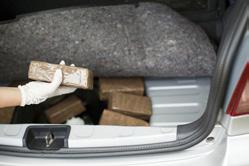


drug trafficking
CRIMES INVOLVING PEOPLE

possession of drugs
possession of narcotic(s)
assault and battery
defamation
domestic abuse

kidnapping

mugging/robbery

(attempted)
murder
racketeering
rape
sex trafficking

sexual abuse

sexual misconduct

TRAFFIC VIOLATION

DUI / driving under influence
hit-and-run

speeding

OTHER CRIMES
fraud
trespassing
violation of probation
Words
Translation
an accomplice een medeplichtige
aggravating circumstances bezwarende omstandigheden


to appear in court voor het gerecht verschijnen to arrest / an arrest arresteren / een arrestatie to assault / an assault aanvallen / een aanval

My notes
to charge with / a charge
beschuldigen van / een beschuldiging community service gemeenschapsdienst
Translation
to conduct a search een (huis)zoeking verrichten to convict (of) / a convict / a conviction
veroordelen / een veroordeelde / een veroordeling
My notes
death penalty doodstraf to discharge / a discharge vrijpleiten, vrijspreken / een vrijspraak
to dismiss / a dismissal verwerpen / een verwerping (van de zaak)
electronic tag
elektronische (enkel)band to file (e.g. a lawsuit)indienen to fine / a fine beboeten / een boete
to investigate / an investigation onderzoeken / een onderzoek
mitigating circumstances verzachtende omstandigheden to mug / a mugger gewelddadig beroven / een (be)rover an offender een overtreder
a petty thief een kruimeldief to plead (e.g. ‘not guilty’) / a plea pleiten / een pleidooi
prison/jail gevangenis
psychological treatmentpsychologische behandeling to put on probation / on licence op proeftijd zetten
to release (e.g. from prison) / a release vrijlaten / een vrijlating
to rob / a robber beroven, bestelen / een dief
to sentence to (e.g. death) / a sentence veroordelen tot / een veroordeling to settle / a settlement regelen / een regeling
to sue someone / a (law)suit iemand vervolgen / een vervolging
to try (e.g. for murder) / a trial voor de rechtbank brengen / een zitting
My notes
SEX/GENDER
female vrouwelijk
male mannelijk
other ander
unknown onbekend
SKIN
creased oneffen
dark donker
light
licht
medium medium
pale bleek
smooth glad
tanned gebruind
wrinkled gerimpeld
BUILT
athletic
athletisch
chubby mollig
fat
full figured
medium height
dik
volslank
gemiddelde grootte
muscular gespierd
short
klein
slender slank
slim dun
tall groot
HAIR








colour
ginger dyed

length
texture
bald curly
crew cut

receding hairline


long hair



medium hair
short hair


straight
wavy
EYES
almond amandelvormig
round rond
slanted schuin
SPECIFICS
bloodshot bloeddoorlopen clear helder
long eyelashes lange wimpers
NOSE SHAPE




flat plat
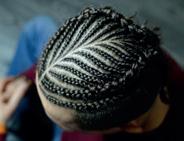


long lang
wide breed
NOSTRILS narrow smal wide breed

MOUTH: LIPS
full vol
medium medium thin dun
CHIN
cleft met kuiltje

Word Translation
oval ovaal
pointy puntig
round rond
My notes
acne acne
bumps bulten, puisten
pores wijde poriën
rash uitslag
FACIAL HAIR
beard baard
goatee sikje
moustache snor
shaven geschoren
sideburns bakkebaarden
unshaven ongeschoren
EXTRA
glasses bril
mole moedervlek
port wine stain wijnvlek
scar litteken



1 Watch the report and complete the grid.
Name Crime Sentence
Mark Wahlberg
Jay Z Matthew Broderick
Khloé Kardashian
Oscar Pistorius
Jian Ghomeshi
Robert Downey Jr.
Chris Brown
Brandy Norwood
Will Smith
watching Score < 7
Next exercise ex. 2 ex. 3 ex. 5
watching
©VANIN
3 Read the text and answer the questions.
a What did the criminals do?



Burglary
Car theft
Assault


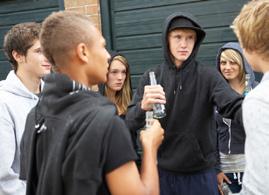
Robbery

Mugging
Vandalism
Albert Bailey Mganga MgangaDennis Hawkins
b Match the words with their meaning.
best


On March 23, 2010, Albert Bailey and an unnamed juvenile accomplice decided to rob a bank in Fairfield, Connecticut. To streamline the procedure, Bailey called the bank in advance to let them know that they were coming to rob it. The intention here was to give the bank plenty of time to get the money ready so that the two of them could just walk in, take the cash, and leave. Minutes after the phone call, Bailey sent in his juvenile accomplice. Meanwhile, a bank employee had the police on the phone and updated them about everything that was happening.
The robbers had demanded $ 100,000, but they settled for a lot less ($ 99,100 less, to be exact). They then walked out into the arms of police, who arrested both of them immediately. They were charged with firstdegree robbery and threatening in the first degree, and Bailey faced up to nine years in prison.
On a sunny March day in Omaha, Nebraska, Melissa Peters was heading for her car when she found a gun pointing at her face, courtesy of 17-year-old Mganga Mganga. He had little interest in the mother or her child, who fled quickly. Instead, he simply entered the vehicle to steal it. There was only one problem—the car had a manual transmission, something with which Mganga was unfamiliar. What followed was a scene straight out of Mr. Bean as Mganga turned on the lights and the windshield wipers trying to make his escape. A neighbour called the police. It took them about eight minutes to arrive and find an empty car sliding gently into the neighbour’s yard, knocking over the fence.
After several minutes, Mganga decided to make a run for it. Police officers went after him on foot and had no problem catching up to him a few blocks away.
A good disguise obviously needs to hide your true identity. Furthermore, a good disguise needs to be inconspicuous so you can blend in with the crowd. The disguise chosen by Dennis Hawkins, a 48-year-old Pittsburgh man who decided to rob a bank, failed on both counts.
His disguise consisted of a woman’s blonde wig, a pair of fake breasts, and clown pants. The first problem was that the get-up revealed his face, which was captured on CCTV surveillance. You might guess that Mr. Hawkins wanted to fool people into thinking he was a woman. In that case, he should have considered getting rid of his mustache and beard. The second problem was that his disguise was not exactly inconspicuous. Right after police released a description to the public, a gas station attendant called to report someone sporting that unique look while trying to steal a car. And as if the man were not noticeable enough, when police arrived, they found Hawkins covered in red paint from a dye pack exploding in his face. Post-robbery, he’d tried to mug a woman and get away in her car. She just ran off, taking the keys with her.

c Are the following statements true or false? Correct if false.
1 Albert Bailey robbed the bank together with another person.
2 The police were at the bank before Albert Bailey was.
3 Mganga Mganga attempted to kidnap a child.
4 Mganga Mganga ruined someone else’s property.
5 Dennis Hawkins immediately removed the disguise.
6 Dennis Hawkins was covered in red paint.
Score < 10 10 – 12 > 12
Next exercise ex. 2 ex. 4
4 Write a short crime report.
a Preparation: read the case of Mr Body below.
b Action: write your report (about 100 words). Discuss the crimes that Mr Body committed. Then propose an appropriate punishment. The sketch of the traffic situation:
At 5 p.m. Mr Nick Body met up with his best friend Pedro to have a few drinks at the local pub. At around 7 p.m. Nick, who had drunk five pints of beer, got into his car and drove away. He did not drive dangerously but exceeded the speed limit as he wanted to catch up with his friend, who had left his wallet in the pub. As he was driving along, the 6-year-old girl, Maya, ran into the road and he knocked her down.
A first medical examination found that Maya had suffered only bruises and superficial injuries. Six months later, a second medical examination found that the little girl was to suffer from after effects of the accident and would stutter for many years.
Mr Body had never previously got a ticket for any sort of traffic offence. Straight after the accident, the little girl admitted that it was all her fault.
c Reflection: check your report by filling in the checklist. Then find a partner and read out your report.
Checklist: crime report
1 Content
• I wrote (about) 100 words.
• I discussed the crimes Mr. Body or someone else committed.
• I explained which punishment I would give and why.
2 Language
• I used correct vocabulary to describe the crimes and punishments.
• I used correct basic grammar.
• I used correct spelling and punctuation.
Next exercise Check 2, p. 109
5 You be the judge.
a Preparation: read the text about a specific crime that you will get and decide on the appropriate sentence. Start by deciding what the main points are. When you are ready, prepare a few notes in which you explain: the crime, the aggravating and mitigating circumstances and the final sentence. Brainstorm below.
aggravating: making an offence more serious mitigating: making an offence less serious or severe
b Action: find a partner and tell them about the crime.
c Reflection: check your work by filling in the checklist.
Checklist: discussing a crime
1 Content
• I read the text and highlighted important information.
• I discussed the crime, the factors and the final sentence.
2 Language
• I used correct vocabulary to describe the crimes and punishments.
• I used correct basic grammar.
• I minded my pronunciation.
Feedback Score < 6 ≥ 6
Next exercise ex. 4 Check 2, p. 109
SPEAKING
1 Watch the video clip of Triple 9 and imagine you were a witness. The police have asked you to write down a summary of what happened.
a Preparation: first make some notes as you are watching.
b Action: write your text below (about 75 words). Use the words and images, if necessary. Make sure to use past tenses correctly. They were sitting in a van,





c Reflection: check your text by filling in the checklist.
Checklist: describing a situation in the past
1 Content
• I wrote about 75 words.
• I described the entire situation.
2 Language
• I used the past simple and past continuous correctly.
• I used the given words correctly.
• I used correct basic grammar.
• I used correct spelling and punctuation.
Feedback
Score < 6 6-8
Yes I think soNo
> 8
Next exercise ex. 2 ex. 3 ex. 6
2 Read the text and do the tasks below.
Two men charged with drug trafficking after 903 kg of ice hidden in boxes of floorboards in Melbourne seized by police Almost a tonne of the drug ice has been seized in Melbourne in the largest bust in Australia’s history.
Two men have been charged with drug trafficking after the record 903 kg haul, valued at almost $ 900 m, was intercepted by a joint operation involving Australian federal police and Victoria police.
The AFP assistant commissioner, Neil Gaughan, said the drugs, equivalent to 9 m individual hits, were discovered at a property in Nunawading in Melbourne’s east after the arrest of two Victoria men in February.
‘We located 70 boxes of floorboards,’ he said. ‘In each of those floorboards was concealed, between the floorboards, 2 kg of methamphetamine.’
A 53-year-old Blackburn man and a 36-year-old Doncaster man have been charged with trafficking in a commercial quantity of illegal narcotics.
The Victoria police assistant commissioner, Stephen Fontana, said the record haul of ice was discovered after an investigation into a drug syndicate, which resulted in the seizure of 40 kg of methamphetamine, 175,000 cigarettes and also $ 140,000 in cash and other contraband.
READING
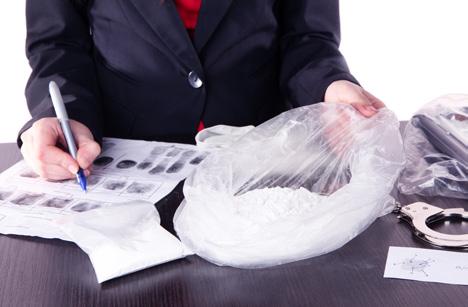
He said the investigation was ongoing and police were searching for two Asian men who may have links to the syndicate and are believed to frequent the Box Hill area in Melbourne.
The prime minister, Malcolm Turnbull, said the shipment was ‘enormous’.
30 35
‘Ice is a scourge,’ he told reporters in Tasmania. ‘It destroys lives. It destroys families and communities. We will be ruthless in our efforts to stop the smuggling and the trafficking of this drug.’
floorboard: wooden board in a floor ruthless: without compassion scourge: plague, curse seize: catch syndicate: illegal organisation
Source: www.theguardian.com
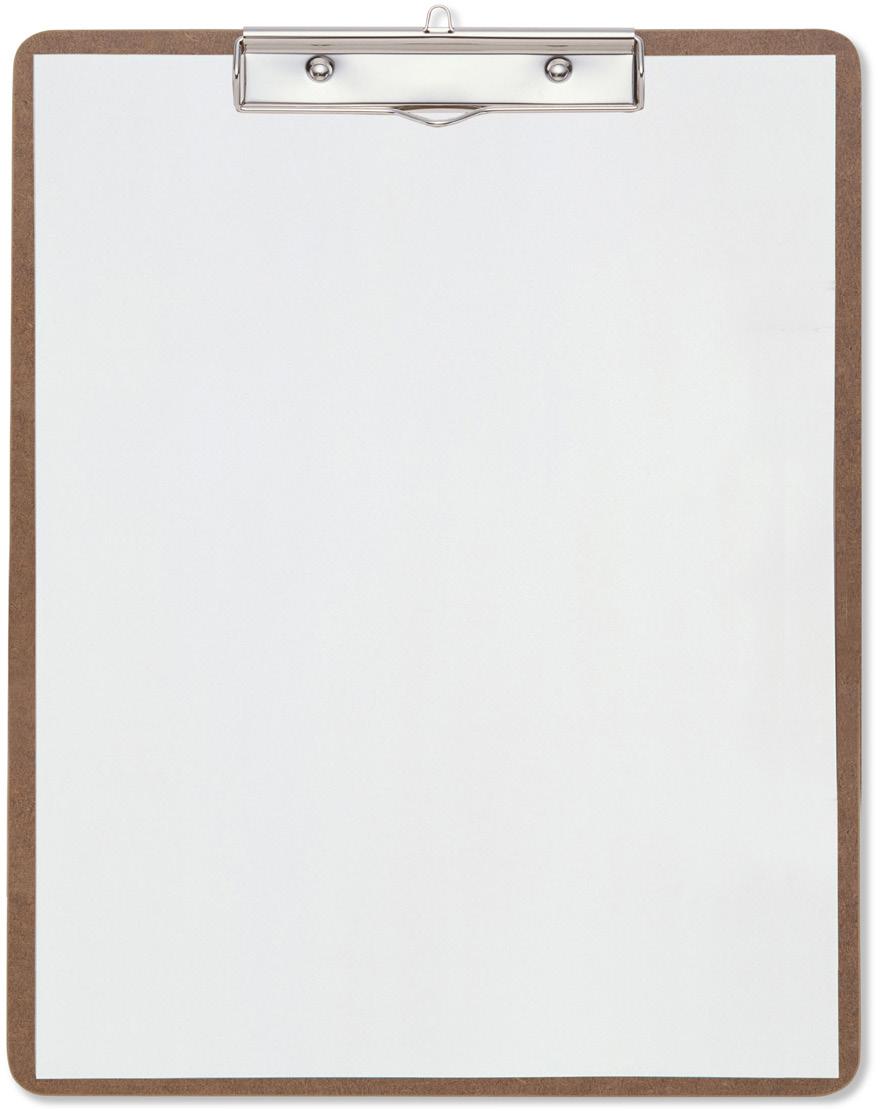
The federal justice minister, Michael Keenan, said the seizure had dealt a serious blow to organised crime.
a Complete the fact sheet with information from the article.

Location or town:
Time:
Description of crime:
Do you know who the offender is?
- Describe the offender:
Were there any weapons involved?
- Which weapons were involved?
Was a vehicle involved?
- How was it involved?
Burglarised / Driven by suspect?
- Describe the vehicle:
Date of complaint:
I hereby declare that this report is free of subjective wording and personal opinions.
Signature witness/victim:
b Write down 3 questions you would like to ask the police about this case.
Score < 5 5 – 7 > 7
Next exercise ex. 5 ex. 4
3 Complete these funny stories about crime using the past simple or past continuous. Next, ask appropriate questions about the underlined words.
Situation 1:
Police (1) (to check) the area and (2) (to find) an open door in the back of the building. An officer (3) (to go) inside and (4) (to call) out, ‘Marco.’ The man’s name (5) (not to be) Marco, detective Tim Dohr (6) (to say). Instead, ‘the officer (7) (to try) to inject some humour into the situation.’ Police
(8) (to find) the suspect after he (9) (to respond), ‘Polo’.
Situation 2:
A Lamphear Court woman said her cat
(10) (to attack) her son and (11) (now - to prevent) her from taking her son to the hospital.
Situation 3:
Officers responded to a call from the Waffle House in Bensons when a caller (12) (to say) a man and woman (13) (to hit) each other with crutches and sweet potatoes.
Source: www.smosh.com
Situation 1: an open door in the back of the building
Situation 1: Polo
Situation 2: her cat
Situation 3: crutches and sweet potatoes
Score < 12 12 - 15
Next exercise ex. 5 ex. 6
4 Write your own crime story.
> 15
Check 3, p. 115



a Preparation: read the questions below to structure your story. Make a few notes. No inspiration? Use the prompts!
Royal jewellery disappearing from inside a safe A celebrity speeding and running someone over
1 Who committed the crime?
2 What happened exactly?
3 When did it happen? Think about the time, but also the date and the season.
4 Where did it happen? Think about the place but also about the weather and atmosphere.
5 Why did it happen? Did the criminal have a motive? e.g. to raise emotional stakes: a close friend or family in danger?
6 How did it happen?
b Action: write a story of about 150 words.
c Reflection: check your text by filling in the checklist. Share your story with a partner or the entire class.
Checklist: writing a crime story Yes I think soNo
1 Content
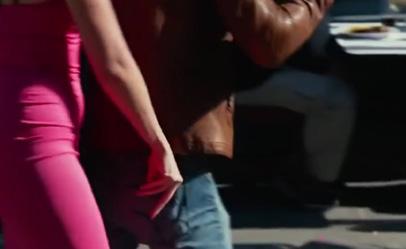
• I wrote about 150 words.
• I described the entire situation.
2 Language
• I used the past simple and past continuous correctly.
• I used correct basic grammar.
• I used correct spelling and punctuation.
Feedback
Score < 6 6 - 8 > 8
Next exercise ex. 6
Check 3, p.115
5 Watch the video clip and describe what happened. Use the pictures and make sure to use past tenses correctly. watching


Score < 6 ≥ 6
Next exercise ex. 6
6 Watch the video clips from Road Cops and answer the questions.


a Describe what happened in a few sentences.
b Write down the questions you would ask if you arrived at the crime scene. Ask at least 4 questions per video clip.
Description of what happened
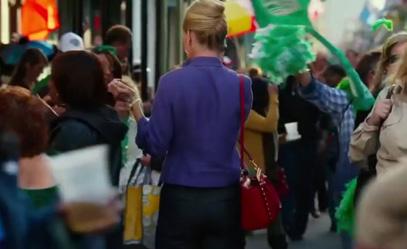
Questions you could ask

one hundred and sixteen
Score < 6 ≥ 6
Next exercise ex. 5 Check 3, p. 116
1 Work with a partner. You will get a sketch made by sketch artist, Lois Gibson. Describe the sketch to your partner and find out who it is. Next, switch roles.
speaking listening • • • •
a Write bullet points describing the suspect. Write at least three characteristics in each category.




General:
Face:
Hair:
c Check your task by filling in the checklist.
Checklist: describing a suspect
1 Content
• I covered all the necessary information: general features, face and hair.
Yes I think so No
2 Language
• We used the correct words to describe general features, face and hair.
• We used correct basic grammar.
• I paid attention to my pronunciation.
Feedback
Score < 5 6 - 8 > 8
Next exercise ex. 2 ex. 3 ex. 6
2 Solve the crossword puzzle.
ACROSS
2 If we want to say someone has thick lips, we call them … lips.

4 If you weigh too much, you are …
8
9 Dracula had a very … complexion.
12 If your eyesight isn’t perfect, you can wear … or contacts.

14 A woman with brown hair is a …
16
17 Another word for ‘red’ hear is ... hair.
18 When people get older, they get … (but Botox can fix that!)
DOWN
1 That third-degree burn left a horrible … on his hand.
3 My twin sister loves clean-shaven men, but I prefer them …
5 To make your eyes speak even more, you can get false …
6 If you are not too thin and not too fat, not too tall and not too short, and you have just the right amount of muscles, you are …
7 If you aren’t happy with your hair colour, you can always change it. There’s nothing wrong with … hair.
10 If you start losing your hair, you may get … very soon.
11 People with curls often want … hair.

13 If you have been out in the sun for too long, you will look …
15
18 If your hair isn’t completely straight, but not very curly either, it’s somewhere in between. We call it … hair.
Score < 12 12 - 15
3 Which word is the odd one out? Explain why.
1 freckles – a mole – a scar – a beauty spot
2 cheekbones – eyelashes – braids – forehead
3 a bun – bangs – a pony tail – a wrinkle
4 a moustache – sideburns – bob – a beard
5 tanned – slim – plump – shortish
Score < 2 3 - 4
Next exercise ex. 4 ex. 5
4
4 Check the twins in the picture. Note one similarity and one difference for each pair.


similar: different:
similar: different:
similar:
different:
similar: different:
5 Read the article ‘Marked Men’ and describe the two offenders as specifically as possible.


READING
On a fall 2009 evening in Carroll, IA, these two drunken burglars tried to break into an apartment. But first they needed a disguise. They quickly realized they had a marker and determined to make their own disguises. Unfortunately, it was their impromptu ‘masks’ that ultimately caused their downfall. When they were pulled over not far

from the crime scene, officers didn’t have a hard time figuring out they’d caught the right guysthey had marker all over their faces.
‘I’ve been chief here almost 25 years, been with the department 28-and-a-half years and I’ve seen a lot of things that make me laugh and weird things,’ Carroll Police Chief Jeff Caylor told CNN, ‘but this was probably the best combination of the two – strangely weird and hilariously funny, all at the same time.’ 15
Source: CNN
• Left offender:
• Right offender:
Score < 2
3 - 4
Next exercise ex. 4 ex. 5
> 4
All done!
6 Play the game ‘Guess who?’ with a partner to find out your partner’s mystery identity.

a Think of at least five celebrities.
b Ask each other questions, such as ‘Does he have a big nose?’, ‘Is he wearing a hat?’ or ‘Does he wear glasses?’ to find out the mystery identity from your partner.
Score
Next exercise ex. 4
All done!
You have been the victim of a crime or you have witnessed a crime. You will fill in the (online) declaration form, in which you will have to give personal information and describe the crime. Then, you will have to report the crime to a police officer. Before you start, make sure you read through the checklist in the reflection.
1 You will watch a video about criminals caught on camera. Choose a number from 1 to 5. Make sure you don’t have the same number as your partner.
2 Read the information about the video clip you have chosen to figure out who you are in this situation.
3 Watch your video clip and make some notes in the table below on your crime.
a What is the situation or crime?
b Where did it happen?
c Describe the offender as specifically as possible.
d Were weapons involved?
watching
©VANIN
4 Report the crime using the Crime Reporting Form.
5 You are at the police station to report the crime. Role-play the situation with a partner.
6 What punishment do you think the criminal in your situation deserves to get? Give at least two reasons why you think so.
7 Reflect on your work by filling in the appropriate checklist.
Checklist: filling in a form
1 Content
• I filled in the complete form.
• My story is logical.
• I described the offender in detail.
2 Language
• I used the past simple and past continuous correctly.
• I used correct basic grammar.
• I used correct spelling and punctuation.
Feedback
Checklist: reporting a crime
1 Content
• I described the situation in a logical and structured way.
• I described the criminal correctly.
• I described the offender in detail.
• I answered the questions correctly.
2 Language
• I used the past simple and past continuous correctly.
• I used the correct vocabulary to describe the crime and what the criminal looked like.
• I used correct basic grammar.
• I paid attention to my pronunciation.
Feedback
Trace your steps on diddit.
check in
Step 1: revising past tenses
Step 3: using the relative clause
music
trace your steps
check out: presenting an upcoming band
 Step 2: talking about
Step 2: talking about
1 Listen to the questions your teacher will ask you. Write your answers in the grid below.
2 Try to reconstruct the questions your teacher asked, using your answers as prompts.


1 Look at the photos taken from a video about ‘That Time’ by Regina Spektor. Listen to the song and combine the lyrics (A to L) you will get, with the correct picture 1 – 12.






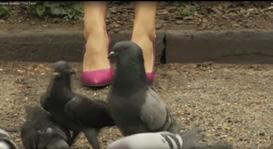


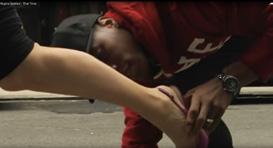
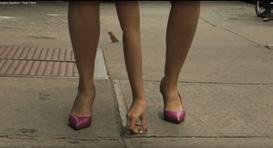
2 Listen to the song again. Fill in the past simple form of the verb in the text below. Use the verbs in the box. Careful: some have to be used more than once.
to be – to bum – to decide – to eat – to find – to get – to hallucinate – to have to – to OD –to see – to think – to try
Hey remember the time when I a human tooth down on Delancey
Hey remember that time we to kiss anywhere except the mouth
Hey remember that time when my favourite colours was pink and green
Hey remember that month when I only boxes of tangerines
So sweet and juicy, tangerines
Hey remember that time when I would only read Shakespeare
Hey remember that other time when I would only read the backs of cereal boxes
Hey remember that time I to save a pigeon with a broken wing
A street cat him by morning
and I bury pieces of his body in my building’s playground
I I was going to be sick
Hey remember that time when I would only smoke Parliaments
Hey remember that time when I would only smoke Marlboros
Hey remember that time when I would only smoke Camels
Hey remember that time when I broke
I didn’t care I just from my friends
Bum, bum, bum, bum, bum...
Hey remember that time when you
Hey remember that other time when you for the second time
Well in the waiting room while waiting for news of you I
I could read your mind
And I on a lot of shit too but what I , man, I tell you it freaky.
3 Here are some sentences from the song lyrics. A few words have been underlined. Answer the questions about these words. How do you know what they mean? Highlight the context clue in the text in exercise 2.

1 Hey remember the time when I found a human tooth down on Delancey. Delancey (line 1) is the name of I know this because of these words:
2 Hey remember that month when I only ate boxes of tangerines. So sweet and juicy, tangerines. A tangerine is a type of I know this because of these words:
3 Hey remember that other time when I would only read the backs of cereal boxes. Cereal is a type of you eat in the I know this because of these words:
4 Hey remember that time I tried to save a pigeon with a broken wing. A pigeon is a type of I know this because of these words:
5 Hey remember that time when I was broke. I didn’t care I just bummed from my friends. ‘to bum’ probably means I know this because of these words:
4 Divide the verbs you filled in into regular and irregular forms.

5 Do you remember how to form the past simple? Use the text and fill in the grid about the form of the past simple. Complete each row from left to right.
Form of the past simple SubjectPositive (+) Negative (-) Questions (?)
1st p. sing.I talked to him yesterday.
2nd p. sing.
3rd p. sing.
1st p. plur. We talked to him yesterday.
2nd p. plur
3rd p. plur.
Rule: R: IR:
You didn’t see her.
Did she tell him the truth?
You didn’t see her.
Did they tell him the truth?
6 Have another look at the pictures on page 126. Find a partner and discuss the things Regina remembers from her past. Use the past simple correctly. Take turns.
7 What about your past?
a Write down 5 things you still remember from your past.
I still remember that I
When I was years old, I
I also remember that I I
b Form groups of 3 or 4 and tell each other about your past.
8 Review when the past simple is used and fill in the sentences in the grammar box.
Past simple
– We use the past simple when we talk about an action that happened in the and which is completely . There is often a specific time indication: three years ago, last week, last January, when…
e.g. She tried to save a pigeon with a broken wing last week
We also use the past simple for past habits and routines. In this case we can also use ‘used to + base form of the verb’ or ‘would + base form of the verb’: e.g. As a teenager she would smoke Camels. / She used to smoke Camels.
See p. 154
1 Read the Wikipedia profile of Tupac Shakur on p. 132. Use the Strategy of Unit 4 (p. 208) on 'How to deal with difficult words in a text' and also check the Strategy on 'How to read a text more effectively' on p. 163.

a Are the statements about Tupac true or false? Highlight proof in the text.
b Correct the false statements. First make the sentence negative and then add the corrected statement. Make sure you use the past simple correctly.
e.g. He died in 1997. He didn’t die in 1997, but he died in 1996.
– look at the pictures and read the title(s)
try to answer the WH-questions: who, what, where, how, why and when?
– look for context clues
look for keywords, synonyms or related words
– look for numbers
– use a highlighter to mark the information you need
See p. 163
1 His songs were often about violence, racism and other social problems.
2 His mother and father were active members of the White Power Movement.
3 He was killed in a car accident in 1996.
4 He studied rap music at the Baltimore School for the Arts.
5 He began his career in the music business as a tour manager for other rappers.
6 He worked as a light technician in Shakespeare plays.
7 His mother was convicted of conspiracy against the US government.
8 He was considered to be the best rapper in his school.
9 In 1986 the family moved to New York.
10 During the last years of his life he had a conflict with Kanye West.
Tupac Amaru Shakur (born Lesane Parish Crooks; June 16, 1971 – September 13, 1996), also known by his stage names 2Pac and Makaveli, was an American rapper, record producer and actor. Shakur sold over 75 million records worldwide.

Shakur was born on June 16, 1971, in the East Harlem section of Manhattan in New York City. His mother had just been released from jail a few weeks before his birth. His mother, Afeni Shakur (born Alice Faye Williams), and his father, Billy Garland, were active members of the Black Panther Party in New York in the late 1960s and early 1970s. The infant was born a month after his mother was acquitted of more than 150 charges of ‘Conspiracy against the United States government and New York landmarks’ in the New York Panther 21 court case.
At the age of twelve, Shakur enrolled in Harlem’s 127th Street Repertory Ensemble and was cast as the Travis Younger character in the play A Raisin in the Sun, which was performed at the Apollo Theatre. In 1986, the family relocated to Baltimore, Maryland. After completing his second year at Paul Laurence Dunbar High School, he transferred to the Baltimore School for the Arts, where he studied acting, poetry, jazz, and ballet. He performed in Shakespeare plays, and in the role of the Mouse King in the ballet The Nutcracker Shakur, accompanied by one of his friends, Dana ‘Mouse’ Smith, as his beatbox, won many rap competitions and was considered to be the best rapper in his school. He was remembered as one of the most popular kids in his school because of his sense of humour, superior rapping skills, and ability to mix with all crowds.
Shakur began his career in the music business as a roadie, backup dancer, and MC for the alternative hip hop group Digital Underground, eventually branching off as a solo artist at the age of 20. The themes of most of Shakur’s songs revolved around the violence and hardship in inner cities, racism, and other social problems. Both of his parents and several other people in his family were members of the Black Panther Party, whose ideals were reflected in his songs. He also acted in movies like Poetic Justice (1993) and Above the Rim (1994). In 1994 Tupac got severely injured during an armed robbery. He survived 5 bullets, two of which in the head.
During the latter part of his career, Shakur was a vocal participant during the East Coast–West Coast hip hop rivalry, becoming involved in conflicts with other rappers, producers, and record-label staff members, most notably The Notorious B.I.G. and the label Bad Boy Records
On September 7, 1996, Shakur was fatally shot in a drive-by shooting at the intersection of Flamingo Road and Koval Lane in Las Vegas, Nevada. He was taken to the University Medical Center of Southern Nevada, where he died six days later.
Source: en.wikipedia.org

Born Lesane Parish Crooks
June 16, 1971
East Harlem, New York, USA
Died September 13, 1996 (aged 25)
Las Vegas, Nevada, USA
Cause of death Ballistic trauma
Other names 2Pac, Pac, Makaveli
Years active 1987–1996
Musical career
Genres Hip hop
Occupation(s) Rapper, activist, poet, actor, record producer, song writer
Instruments Vocals
Labels Interscope (1991–95) Death Row (1995–96) Makaveli (1996)
Associated acts Outlawz . Thug Life, Danny Boy, Digital Underground, Dr. Dre, Ice T, Suge Knight, Johnny ‘J’ K-Ci & JoJo, Tha Dogg Pound, E-40, Ice Cube, Nate Dogg, The Notorious B.I.G., Snoop Dogg, Stretch, Goodie Mob, Scarface, Richie Rich, Boot Camp Clik, Spice 1, MC Hammer Website www.2pac.com
2 Put these events of Tupac’s life on the timeline. Put the sentences in the past simple.
- He decides to go solo.
- He wins many rap competitions at school.
- He performs in the play A Raisin in the Sun at the Apollo Theatre.
- He plays in the movie Poetic Justice
- He dies in a drive-by shooting.
- He begins his music career as a roadie and MC for the alternative hip hop group Digital Underground.
- The family moves to Baltimore, Maryland.
- Tupac plays the role of the Mouse King in the ballet The Nutcracker
- Tupac is born in East Harlem (New York).
- Tupac gets severely injured during an armed robbery.
- Tupac’s mother spends several months of her pregnancy in jail.
- He often argues with other rappers.
- Tupac’s parents are members of the Black Panthers.
3 Have a closer look at the verb forms in the following sentences. a Indicate the verb forms. Which event comes first? Which one is next?
e.g. After he had decided to go solo, he played in several movies.
b Rephrase the sentence using ‘after’ and ‘before’.
– Tupac’s mother had spent several months in jail before he was born on June 16, 1971 in East Harlem.
had decided played After
4 The new tense used in the sentences in exercise 3 is the past perfect (simple). Fill in the grammar box below.
Past perfect (simple)
We use tense to talk about something that happened in the past something else in the past happened.
e.g. Before Tupac won rap competitions at school, his family had moved to Baltimore. past simple past perfect
After he had won rap competitions at school, he decided to start a musical career. past perfect past simple
See p. 154
©VANIN
a Complete the grid from left to right with your own examples. Then complete the rule on how to form the past perfect.
Form of the past perfect simple SubjectPositive (+) Negative (-) Questions (?)
1st p. sing.
I hadn’t talked to her before her wedding.
2nd p. sing. Had you done something wrong?
3rd p. sing. The week before Debby got married, she had been in an accident.
Rule:
b Do you remember how to form the past participle? Write the verbs from exercise 2 in the correct column and write the past participle next to them.
Regular verbs
Form of the past participle
Irregular verbs
to die died
Rule: Study by heart! See the list on pages 93-95.
5 Complete the sentences with the verb in the past perfect simple tense.
1 When Rihanna was born (1988), Madonna (already – to release) 3 albums.
2 When Taylor Swift released her first album (2006), Britney Spears (already – to be married) twice.
3 Before Drake released his first album (2010), (already – to appear) in Degrassi: The Next Generation
4 When Adele performed ‘Skyfall’ (2012), Daniel Craig (already – to play) James Bond in 2 movies.
5 Before Selena Gomez got together with The Weeknd in 2017, she (already – to break up) with Justin Bieber a couple of times.
6 Follow the format of the sentences in exercise 3 using ‘before’ or ‘after’ and write some sentences using the past simple and the past perfect simple.
1 He performs in the play A Raisin in the Sun at the Apollo Theatre. / The family moves to Baltimore, Maryland.
Before
2 The family moves to Baltimore, Maryland. / Tupac plays the role of the Mouse King in the ballet The Nutcracker
After
3 He decides to go solo. / He plays in the movie Poetic Justice
After
4 He plays in the movie Poetic Justice. / Tupac gets severely injured during an armed robbery.

after
5 He often argues with other rappers. / He dies in a drive-by shooting. Before
7 Tell the story of your life!
a Write down 5 events in your (fictitious) life / (music) career. Then tell a partner about it. Use the past simple and the past perfect when you talk to your partner.
YearEvent
b Listen to your partner life story. Reconstruct the events in their life. Write down prompts on this timeline.
YearEvent
CHECK 1, p. 164
1 Do you still remember the musical genres your peers described at the beginning of this unit? Write them down here.
2 Do you know any other genres? Watch the clip and write down in which genres Ellie Goulding and James Corden perform ‘Love me like you do’. Add which objects they use to get into each particular style. Choose from the list below.
bandana – choir – congas – gold chain – gospel dress – guitar (3x) – hat (2x)– headband –hoodie – leather jacket – mandolin – sunglasses – T-shirt – waistcoat
watching
with fluorescent print,
woolly in yellow, red and green,
3 Below are the lyrics of the song ‘I wanna be yours’ by Arctic Monkeys.
a Match the sentences to complete the lyrics (one sentence has to be used twice). Choose from:
That you’ll get cold without
– Hold your hair in deep devotion (how deep?)
And I’ll never run out
I won’t ever rust
– Breathing in your dust
Let me be your coffee pot
– Are harder to hide than I thought
b Highlight the context clue.
c Then listen to check your answer.
I Wanna Be Yours – Arctic Monkeys
I wanna be your vacuum cleaner
Let me be your ‘leccy meter
watching
I wanna be your Ford Cortina
And let me be the portable heater
If you like your coffee hot
I wanna be your setting lotion (I wanna be)
You call the shots babe
I just wanna be yours
Secrets I have held in my heart
At least as deep as the Pacific Ocean
I wanna be yours
Secrets I have held in my heart
Maybe I just wanna be yours
I wanna be yours, I wanna be yours
Wanna be yours, wanna be yours, wanna be yours
Maybe I just wanna be yours
I wanna be yours, I wanna be yours
Wanna be yours, wanna be yours, wanna be yours
4 Listen to a live version of Arctic Monkeys’ ‘R U Mine’.


a Indicate which instruments in the list below you can hear in the song.
a violin
an electric guitar
a bass guitar

a trumpet
a flute
a sax(ophone)
a trombone
a horn vocals keyboards drums

a piano
b Watch the video of the same song. Which instruments from the list can you see on the stage? Underline them in a.
listening watching
5 Fill in each band member’s instrument(s). Choose from the words below. Not all words are used and some have to be used more than once.
backing vocals - bass guitar - drums - guitar - keyboards - lead vocals – piano - sax(ophone) –trumpet - violin
piano/keyboards,
If you play an instrument, you usually use the definite article. e. g. I play the guitar. She plays the piano.
6 This band appeared on America’s Got Talent in 2017.
a What do you think is special about them?
b Look at this picture of The Willis Clan at America’s Got Talent. Who plays which instrument? Choose from the following:
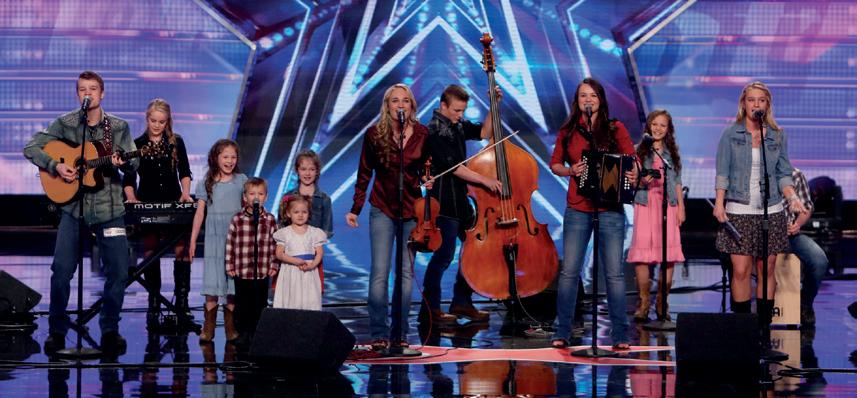
accordion – backing vocals - double bass – drums – flute – (acoustic) guitar – keyboards –lead vocals – tambourine – violin
At their audition, the group consisted of:
1 Jessica (21), who plays the and sings
2 Jeremiah (20), who plays the and sings
3 Jennifer (19), who plays the and sings
4 Jeanette (17), who plays the and sings
5 Jackson (15), who plays the
6 Jedi (14), who plays the
7 Jasmine (12), who plays the
8 Juliette (10), who plays the and sings
9 Jamie (9), Joy (7), Jaeger (4) and Jada (3), who sing
7 Use the correct word to fill the gaps in the text below. Look at the words in exercise 5 to choose from.
1 Alex Turner is the Arctic Monkeys’ guitar player/guitarist. He plays
2 Ringo Star was The Beatles’ drummer. He played
3 Ron Wood is the bass player of the Rolling Stones. He plays
4 Before he went solo, Pharrell Williams was the vocalist / singer with The Neptunes and NERD. He did
5 A lot of the band members don’t only play an instrument, but they are also backing vocalists. They do / sing
6 Jay Watson is Tame Impala’s keyboard player / keyboardist. He plays
7 Not many rock bands have a trumpeter or a saxophonist, because rock music doesn’t really need the sound of a or
8 Folk bands often have a violinist, because a produces a typically ‘folkie’ sound.
8 If you were in a band, which instrument would you play and why? Or if you had to form a band with some of your classmates, who would you pick for your band, and why? What kind of music would you make?
1 Where do you listen to music?
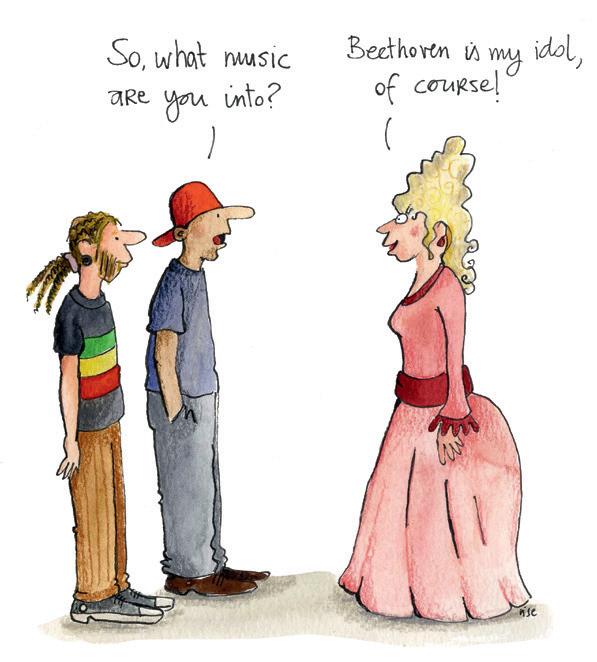
a Check every place that applies to you. in a car at home outdoors (while walking / running / …)
at work at the gym at music venues
READING
INTERACTION
b Look at the graphic below and fill in the table.
Where do they listen to music most often?
Generation Z (8-24)
Millennials (25-34)
35 and older
c Which place is most appropriate to listen to …? There are more possibilities. Explain why!
1classical
2 A lot of people go to festivals to fully enjoy their favourite music. One of the most famous festivals in music history is Woodstock. Answer the following questions.
a What do you know about this festival?
b Watch the trailer of a documentary about Woodstock ’69. Fill out ‘atmosphere’ and ‘problems’ in the table below. watching
c Watch the trailer of a Netflix documentary series on Woodstock ’99, a festival organised to celebrate the 30th anniversary of Woodstock ’69. Fill out ‘atmosphere’ and ‘problems’ in the table below.
Woodstock ‘69 Woodstock ‘99
watching
location
performances
audience
weather atmosphere problems
3 Work with a partner. Each of you will get a text. Decide who is student A and who is student B. Answer the questions about your text below.
a How is it said in each of the texts?
Text A Text B
1 It was written on the billboard as ‘Three Days of Peace & Music’: it was ‘Three Days of Peace & Music’.
2 They call it Woodstock: as Woodstock.
3 To be popular with a large audience:
1 There were more or less 220,000 attendees:
2 It earned the well-known negative title of ‘the day the nineties died’:
READING
©VANIN
4 To play music on stage:
5 It rained now and then: there was rain.
6 To be seen as an important moment in music history: to be an important moment in music history
4 The food was too expensive:
5 Not enough showers and toilets:
6 The festival site was burnt:
7 A very important or critical moment:
8 Problems which nobody could predict: problems
9 There were too many cars on one road: there was
10 Dirty roads covered in mud:
11 To install showers and toilets:
12 To fight against hunger: hunger
7 A lot of women were victims of sexual harassment:
b Can you see similarities and differences between the original Woodstock festival in ’69 and its 30th anniversary version? Look at the table in exercise 2 to see which information you should focus on, and then complete the table with the missing information.
4 One of the most famous festivals in today’s USA is the Coachella Valley Arts and Music Festival in Indio, California. Look at the festival map. Fill in the grid below. Use the correct preposition.
Find a spot to …
… pitch your tent.
… buy a T-shirt of your favourite band.
… watch the head liner. in front of
… report a problem with your wristband.
… find a food truck that serves vegetarian food.
… play the guitar by the campfire. near
… interview Saturday’s headliner for your radio show.
… shelter from the sun.
… fill your water bottle.
… buy some sunscreen.
5 Read the text ‘9 fun things to bring to a music festival’.
a First match the words with the pictures of the gadgets.
b Fill the gaps in the texts with these words. Choose from the following words: drink cooler – fanny pack – inflatable sofa - one-man tent – portable hammock –rain poncho (2x) – solar power bank – waterproof portable Bluetooth speaker – wellies

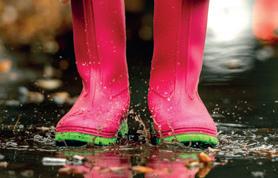



1
2
If you haven’t already invested in one, we highly suggest getting your hands on one before festival season! Most are lightweight, easy to travel with, and can hang up securely on trees and other stable outdoor structures. You can pack one in your bag for a great place to chill, nap, or just listen to the live music in total relaxation. Bring your sleeping bag if you want to use your hammock as a ‘real’ bed.


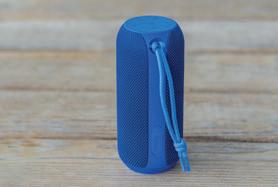
If you wonder how a can make your festival experience more fun, the simple answer is the freedom it gives you. When you wear it, you can hold all of your daily festival essentials in one place

3
without really having to hold them. Your body will be completely free to dance, wave, and carry some drinks. Plus, keeping your essentials strapped in front of you will rid the worry of losing items & having them stolen.
It’s not easy to find a place to lounge at an outdoor music festival, but an makes it much easier. These popular loungers are perfect for festival comfort when you need them most. While you can’t bring your leather couch from home to the campsite, these are made from lightweight parachute material perfect for travel. They come in convenient carrying cases and don’t even require an air pump – how simple is that?
4
Imagine not having to tediously pitch your tent, carry your equipment around or queue for hours to find a suitable campsite. With the , you won’t sleep on cloud nine, but at least you can sleep it off anywhere - all you have to do is slip in.
5
Music festivals can get pretty hot, and a great way to stay cool is with a . Keep your booze, water, and other necessities for chilling out nice & cold. When the heat spikes, you won’t want to drink a lukewarm beer or water – you want a chilled drink to keep you cool.
6 When it rains at a music festival, it always feels like it’s pouring. Don’t get caught in a mini rainstorm without a to protect you! While you could always rely on the plastic bag style , they might ruin your look and only provide minimal waterproof protection. Luckily, the real ones are stylish and roll up into handy carrying cases, so you can stay dry and still look cool.
7 Boots are made for walking, alright, but these have a built-in jukebox, so walking across the muddy campsite is twice as much fun.
8
Speaking of good music, there is a good alternative if you don’t feel like walking around in those ‘musical boots’: a will do the job. It’s small and it clips to your clothes, belt loop, or backpack, getting you ready for the next party everywhere at any time!
9 A decent is the best way to keep the music playing without running out of power! It’s a great battery backup for use in all kinds of outdoor activities. Additionally, some can be used as a flashlight and are waterproof. Perfect for your next festival to charge up your equipment. Highly recommended for every festival packing list.
6 Idioms that will sound like music to your ears!
a Match the idioms of the left column with the correct explanation in the right column.
1 This is music to my ears! Areminds you / me of something
2 With all the bells and whistles. Breport an illegal or unacceptable activity
3 He sounds like a broken record. CSounds good!
4 It’s not over until the fat lady sings. Dwith non-essential, but attractive features
5 That rings a bell Ekeeps saying the same thing over and over again
6 He’s going to blow the whistle FYou don’t know the outcome of an event which is still in progress.
b Use the correct idioms in these sentences.
a Yes, I want to throw a really memorable birthday party, with a DJ, foodtrucks and
b Just because the tickets for that concert are sold out, you shouldn’t give up. Maybe they will release some more tickets in a competition. Or maybe they will plan an extra concert. You never know.
c Do you have to bring that up again? Really? You’re starting to
d When she said she had won free tickets for Roskilde Festival in Denmark and she wanted to take me, it was !
e - Isn’t that the boy who saved you from the mosh pit on Rock am Ring 3 years ago? Joey … something? - Yeah, that name
1 There are some festivals around the world worth travelling to. Watch the video and say whether these statements are true or false. Correct the false statements. watching
1 The Bonnaroo Music and Arts festival aims to attract people who like all kinds of music. (eclectic music)
2 Splendour in the grass is an Australian festival that was sold out in half an hour in 2020.
3 Festival Internacional de Benicàssim is a festival that is held in a village where the music stops at 4 a.m.
4 Mawazine is held on a stage where you will only see artists who are famous in Africa.
5 Fuji Rock Festival is a Japanese festival which is situated at the base of a ski resort where you will find a children’s play area.
6 Lolapalooza is a wild festival which is organised in the UK, and which is famous for its comfortable accommodation.
7 The reason that Rock in Rio is more popular every second year is because then it is held in the city of Rio de Janeiro.
8 Tomorrow Land mainly attracts metalheads who want to enjoy the latest trash and death metal bands.
9 At Coachella you may spot celebrities whose names were put on the festival’s guestlist.
10 Glastonbury Festival is a UK-based festival that lasts 8 days.
2 In the sentences in exercise 1, several phrases are combined to form longer sentences. Answer these questions about the sentences.
a Which words have been underlined? What are they called?
b What are these words used for?
c Highlight the words that they refer to.
d What is special about ‘whose’?
3 Look at the sentences below. Underline the relative pronouns and the relative clauses. Then mark the word(s) that the relative pronouns refer to (=antecedent). Look at the example.
e.g. Elevator music is instrumental music that is played in public places.
1 People who were looking for an escape from the heat, the riots and the overpriced water were out of luck.
2 Virtually every hotel room in upstate New York was booked months before Woodstock ’99 — but not by festivalgoers whose parents were worried they wouldn’t get any decent sleep in a tent.
3 Instead, rooms were filled by attendees of the Baseball Hall of Fame ceremony in nearby Cooperstown, which took place the same weekend.
4 According to one account, a motel in Rome, New York was forced to turn away Alanis Morissette, who had tried to book a room there.
5 The stage where upcoming bands performed was called the ‘Emerging Artists Stage’.
6 It was one of the places that was frequently packed during the festival (6 a), if only because the airport hangar, which served as the venue, (6 b) was one of the rare places where you could shelter from the burning sun. (6 c)
Source: Rolling Stone Magazine
4 What do the pronouns in exercise 3 refer to? Also, indicate whether this is a person and / or a thing.
5 Do we need the information in the relative clauses to understand who or what we are talking about in the sentences in exercise 3?
6 Fill in the grammar box with the information from the previous exercises.
Relative clauses are used to give additional information about something (= the antecedent) without adding another sentence. Texts become more fluent, and you avoid repeating words. There are 2 types:
Defining relative clauses
– the information in the relative clause is to know who or what the antecedent actually is.
– usually no commas.
– relative pronouns and can be used.
Even though you can use both ‘that’ and ‘which’ in defining relative clauses, ‘that’ is the preferred option!
Keep in mind:
Non-defining relative clauses
– the information in the relative clause gives information about the antecedent.
– usually there are commas.
– relative pronouns and can be used.
– REASON: That’s the reason / I don’t go to festivals.
PLACE: That’s the place I go to relax.
7 Fill in the missing pronoun. Choose from the list.
that – which – who - whose
This is just one thing went wrong at the Woodstock ’99 festival. It was very hot on the tarmac of the festival so festivalgoers water bottles were empty after a few hours had to buy water bottles were priced at $ 4 per bottle. When they hit the free fountains, they found lines resembled a Disneyland ride. Some fountains were smashed, caused minor flooding in the area. The situation was so bad that there were several festivalgoers threatened to sue the organisers for negligence.
8 Fill in the missing relative pronoun.
a Unfortunately, many music festivals have restrictions on bags because of dangers regarding shootings or other safety issues. Usually, you can bring a bigger bag if it’s clear. Make sure to check the website of the festival you’re attending to understand their bag criteria. It might be a better idea to bring a fanny pack / bum bag or something you can keep secure to your body as you’re dancing and moving around.
b Long lines and hours on your feet are a norm at music festivals, so be prepared to stand. Not only that, but you will be dancing and moving your body too. This means comfortable shoes are essential. Dr. Martens boots are a great choice for something is sturdy and covers your toes.
c Let’s face it, public restrooms can be gross and sometimes run out of toilet paper or soap. That’s the main reason cleansing wipes are a must. Not only can you use them to wipe off dirt or germs, but you can also use some on your shoes or utensils. If you are going to a music festival like Coachella there is a lot of dust, you’ll be so happy you brought some wipes to cleanse your arms and legs once they get dirty.
d Pack snacks and food items can survive different temperatures. Granola bars, nuts, and dried fruit are all good choices and easy on-the-go snacks.
e Temperatures can fluctuate greatly from day to night. Bring clothes are easy to layer, such as flannels, shackets, tank tops, and hoodies.
Source: Fault Magazine
9 Make a complex sentence using the 2 sentences given. First highlight what the 2 sentences have in common. This is the part you will replace by a relative pronoun. Make sure you use a correct relative pronoun.
1 At the campsite we saw a group of girls. The girls were singing famous rock songs a cappella.
2 We parked our camper van at a campsite. I don’t remember the number of our campsite.
3 I hope I don’t run into that boy. We ‘borrowed’ that boy’s sleeping bag.
10 Join these sentences together using a relative pronoun.
1 At the beer barn we met a Chinese girl. Her boyfriend was injured in the mosh pit.
2 At the entrance of the backstage area there was a security officer. The security officer checked our wrist bands. We had received our wristbands at the main entrance.
3 The security officer at the main entrance got really angry at a girl. The girl tried to get in with a forged entrance ticket. She had bought the ticket from a classmate.
11 Guess who? Play this game with a partner or with a group.
- Think of a famous singer / band and list all his / her / their characteristics: what kind of music they play, which country they are from, what their biggest hit was, etc.
- Now make only one sentence in which you put all the information. Don’t mention the singer’s name.
- Read your sentence to the others. Can they guess who you’re talking about?
- The student with the longest (correct) sentence wins.
e.g. 1 She’s an R ‘n’ B singer who first performed in a girls’ band, but later went solo, who has three children, and whose husband is a famous music producer who made Rihanna a star.
2 It’s a Swedish band whose name consists of the first letter of each band member’s first name, which became famous when they won the 1974 European Song Contest.
CHECK 3, p. 174
2004
Kanye recorded his first album.
2012 He met Kim Kardashian.
1st p. sing. 2nd p. sing. 3rd p. sing.
1st p. plur.
2nd p. plur. 3rd p. plur.
2014
When his daughter North was born, he hadn’t gotten married to Kim yet.
Past simple and past perfect simple
I talked to him. You talked to him. She talked to him.
We talked to him. You talked to him. They talked to him.
I didn’t talk to him. You didn’t talk to him. He didn’t talk to him. We didn’t talk to him. You didn’t talk to him. They didn’t talk to him.
2021 Kim filed for divorce only a few months after Kanye had declared he wanted to run for president.

Now
Did we talk to him?
Did you talk to him?
Did they talk to him? Rule:
* Irregular verbs!
Mind the irregular verbs in the positive form:
e.g. I saw, you drew, she did, we drank USE
- to talk about an action which happened in the past and that is completely over There is often a specific time indication; three years ago, last week, last January, when…!
- to talk about habits and routines in the past. In this case we can also use ‘used to + verb’ or ‘would + verb’! e.g. They used to get drunk during concerts all the time.
1st p. sing.
2nd p. sing.
3rd p. sing.
I had talked to him. You had talked to him. She had talked to him.
I hadn’t talked to him. You hadn’t talked to him. He hadn’t talked to him.
Had I talked to him?
Had you talked to him?
Had he talked to him?
1st p. plur.
2nd p. plur.
3rd p. plur.
We had talked to him.
You had talked to him.
They had talked to him.
Rule: Subject + had + past participle*
* Irregular verbs!
We hadn’t talked to him. You hadn’t talked to him. They hadn’t talked to him.
Subject + hadn’t / had not + past participle
Irregular verbs have an irregular past participle: e.g. seen, draw, done, drunk ...
Had we talked to him?
Had you talked to him?
Had they talked to him?
Had + subject + past participle?
- to talk about something that happened in the past before another event that also took place in the past.
e.g. Before they arrived at the concert, they had already drunk a couple of beers.
arrived past simple Now Past
©VANIN
Relative pronouns and relative clauses
Relative pronouns
Function Person Thing subject who / that1 which / that² object who(m) / that / سwhich / that / Ø4 possessionwhose5 whose / of which6 [Ø = relative pronoun can be left out]
1 The man who / that you saw on television is a famous singer.
2 The documentary which / that was made about Sinéad O’Connor was a real eye opener.
3 The singer [who / that / whom] Graham Norton interviewed first, wore a dress by a Belgian designer.
4 The revenge song [which / that] Shakira made is actually about her ex.
5 The singer whose songs are parodies of existing songs has won five Grammys.
6 The building whose line-up / of which the line-up was a mixture of rock and EDM sold out in 30 minutes.
Keep in mind:
- In defining relative clauses that is the preferred option when referring to things (not which).
- You use that / why when referring to a reason:
e.g. That’s the reason that / why he doesn’t go to any festivals this summer.
- You use where to refer to a place:
e.g. That is the place where I relax.
They give necessary information to know who or what the antecedent actually is.
– There are usually no commas.
Function Person Thing subject who1 which² object who(m)³ which4 possessionwhose5 whose / of which6
Relative pronouns can never be left out!
1 Bono, who is the singer of U2, is also known for his charity work.
2 The song ‘Do they know it’s Christmas’, which we traditionally hear around Christmas, was originally recorded in 1984 to raise money for the famine in Ethiopia.
3 ALT-J, who / whom I like very much, hasn’t performed in Belgium for a long time.
4 Joaquin Phoenix and Reese Witherspoon both sing in the movie ‘Walk the Line’, which we saw in music class a few years ago.
5 Weird Al Yankovic, whose songs are parodies of famous songs, has made a fake documentary about his own musical career.
6 Seattle, whose grunge music scene was booming in the 90’s, was home to bands like Nirvana and Pearl Jam. USE
They give extra information to know who or what the antecedent actually is.
They usually have commas.
accordion

acoustic guitar
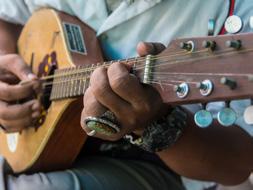

backing vocals

bass guitar

congas

double bass

drums

electric guitar

flute

horn
lead vocals

mandolin
piano

sax(ophone)


tambourine

trombone


vocals / voice

bandana

felt hat
sunglasses
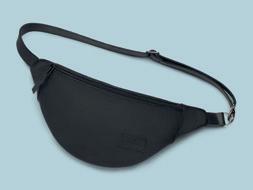

cowboy hat


violin

fanny pack
gold chain

trumpet wellies
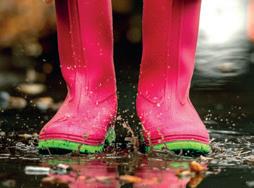
headband

woolly hat











waterproof portable


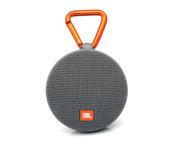
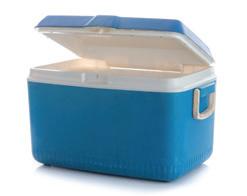
Idiom Translation
That rings a bell. Dat doet een belletje rinkelen. With all the bells and whistlesmet toeters en bellen
My notes
He’s going to blow the whistle. Hij gaat de alarmbel luiden./ Hij gaat het naar buiten brengen.
He sounds like a broken record. Hij klinkt als een plaat die blijft hangen.
It’s not over until the fat lady sings. Niet te vroeg victorie kraaien!
This is music to my ears! Dat klinkt als muziek in de oren.
Word Translation
My notes PLACES
the backstage area de backstage ruimte
a campsite kampeerterrein
a concert hall concertzaal
a firepit plaats voor kampvuur
a food market markt / zone met eetstalletjes
a general store supermarkt
the main entrance hoofdingang
the main stage
hoofdpodium
a merchandise market markt / zone met festivalmerchandise
a music venue concertzaal, evenementenzaal
a shaded area schaduwplek
a stadium / an arena stadion, arena
a water refill point
drankfontein
to attract aantrekken to bill as aankondigen als … the line-up lijst van optredende artiesten muddy roads modderige wegen overpriced veel te duur geprijsd to perform optreden
The basics
Look at the picture(s). Read the title(s) first.
Who wrote this? Who is the text meant for?
Why did he / she write it?
What do you need to do with the text?
Why do you have to read it? What type of questions will you get?
1 While
If possible, reread difficult passages.
Have you understood the main points?
What would you do differently next time?
Global reading
Try to answer the WH-questions: who / what / where / how / why / when?
Look for context clues
Look for numbers if a year, an amount or a date is asked for.
2 3
Look for keywords, synonyms or related words.
Use a highlighter or a pencil to flag up the information you need.
Have you completed the task?
1 Read Lia Ices’ Wikipedia profile and answer the questions.
a Using the prompts below, make a timeline about Lia Ices’ life. Put these words in the correct chronological order.
first piano lesson – Grown Unknown – Necima – Tisch School of Arts – Vermont
b Write sentences in the past simple using the prompts above.
1 At the age of five Lia
2 She experimental theatre at
3 She her first album in 2008.
4 She She stayed there for six months before recording.
5 In 2011 she
c Join the two sentences using ‘before’, and putting the verbs in the past simple or the past perfect simple tense.
1 to spend six months in Vermont writing songs / to record her second album
Before she recorded her second album, she
2 to be with the Rare Book Room Records label / to sign a contract with the Jagjaguwar label
Before she
3 to study theatre at the High School Wallnut Hill for the Arts / go to the Tisch School of Arts in New York
Before she
From Wikipedia, the free encyclopedia

Lia Ices is a singer-songwriter from Westport, Connecticut, currently living in Northern California While she has been performing and recording for several years, Ices gained prominence when her song ‘Love is Won’, from her second studio album Grown Unknown, was played over the closing credits of the second-to-last episode of season one of HBO’s Girls on June 10, 2012.
Her mother is a photographer and book binder, and Ices says that her father has been a source of musical inspiration throughout her life, encouraging her to write her own songs from an early age. She began playing the piano at age 5, studied theatre at the preparatory high school Walnut Hill School for the Arts and went on to explore the worlds of dance and theatre at the Experimental Theatre Wing of New York University’s Tisch School of the Arts and by studying Shakespeare at the Royal Academy of Dramatic Art in London. Kessel’s brother, Eliot, is also a musician, and a collaborator in her music.
Birth name Lia Kessel
Born Chicago, Illinois
Instruments Vocals, keyboards
Years active 2008–present
Labels
Associated acts
Jagjaguwar
The Marina (band member), Wild Cries (band member)

Website www.liaices.com
In 2008, her first full-length album, Necima, was released in September of that year, produced by Nicolas Vernhes at Rare Book Room Studios in Brooklyn, NY. The music webzine Pitchfork wrote of the album: ‘When Ices and Vernhes find a creative symbiosis, usually on the record’s shorter, pop-leaning tracks, the results are spectacular.’ Critics compared her singing favourably to that of Kate Bush, and more contemporary artists like Feist and Bat For Lashes, as well as Tori Amos and Cat Power
In early 2011, Ices released her sophomore album, Grown Unknown, which was again mixed at the Rare Book Room Studios in Brooklyn, but released through her new label, Jagjaguwar Records. She spent six months in Vermont writing most of the album, and recorded the album at The Clubhouse in Rhinebeck, NY. The album’s second track, ‘Daphne’, features a duet with Bon Iver frontman, Justin Vernon. Critics found her voice more relaxed than on her debut album.
On April 3, 2012, Jagjaguwar Records released a 7” single of Ices covering Pink Floyd’s ‘Wish You Were Here,’ taken from Mojo Magazine’s Pink Floyd October 2011 special edition, The B-side was another cover, of Syd Barret’s Late Night. Her album, Ices, followed in September 2014. After a spell concentrating on her growing family, Ices released her latest offering, Family Album, in January 2021.
Source: www.en.wikipedia.org
2 Fill in the verbs in the past simple form in this biography about the early life of Beyoncé Knowles.
Beyoncé (1) (to be) born in Houston in 1981. Her mother
(2) (to work) as a hairdresser and her father was a sales manager. Beyoncé
(3) (to attend) St. Mary’s Montessori School in Houston, where she
(4) (to enroll) in dance classes. Her dance instructor Darlette Johnson
(5) (to discover) her as a singer when she (6) (to begin) humming a song and Beyoncé (7) (to finish) it. At the age of seven Beyoncé
(8) (to sing) John Lennon’s ‘Imagine’ in a school contest and
(9) (to win).
When she was eight, she and childhood friend Kelly Rowland
(10) (to meet) LaTavia Roberson at an audition for an all-girl entertainment group. They (11) (to be) placed into a group with three other girls as Girl’s Tyme, and (12) (to rap) and (13) (to dance) on the talent show circuit in Houston. In California they (14) (to participate) in Star Search, the largest talent show on national TV at the time. Girl’s Tyme
(15) (not to win) the contest, but they
(16) (to become) famous anyway.
In 1995 Beyoncé’s father (17) (to cut) the original line-up to four and the group (18) (to continue) performing. In 1996, the girls
(19) (to record) their debut album under an agreement with Sony Music, and later
(20) (to get) a contract with Columbia Records.
Score < 14 ≥ 14
Next exercise ex. 3
3 Make sentences in the past perfect simple tense about the career of The Divine Comedy using the prompts. Start each sentence with ‘Something strange happened after …’.
1 Neil Hannon / to start / the band / in 1989
Something strange happened after
2 the band / to release / their first album / in July 1990
Something strange happened after
3 two band members / to leave
Something strange happened after
4 The Divine Comedy / to achieve / its greatest commercial success / in the years 1996-99
Something strange happened after
5 Neil Hannon / to choose / his suit to perform on stage for the first time

Something strange happened after
6 Neil Hannon / to sing backing vocals / on ‘No Regrets’ by Robbie Williams
Something strange happened after
7 Neil Hannon / to work together / with Tom Jones
Something strange happened after
8 Neil Hannon / to write a few songs / for the movies Amélie Poulain and The Hitchhiker’s Guide to the Galaxy
Something strange happened after
Score < 5 ≥ 5
Next exercise Check 2, p. 169
4 Imagine you are a rock star and you are interviewed by a journalist of Rolling Stone, a very famous music magazine.
a Preparation: think about your crazy rock star life. What important life events have happened to you? Use the time line to chronicle your life.
1985 born first live performance
2005
end up in hospital after …
2015 Taylor Swift
b Action: use your written preparation (your own events and the prompts given) to tell the journalist (your partner) all about your life. Make sure you use the correct (past) tenses.

c Reflection: after you have told your life story to your partner, use the checklist to reflect on your interview.
Checklist: interview Yes I think soNo
1 Content
• I used the timeline to prepare what I was going to say.
• I said all the items of my timeline.
2 Language
• I used the past simple and past perfect correctly.
• I tried to speak fluently.
• I minded my pronunciation.
Feedback
Score
Next exercise ex. 3
Check 2, p. 169
5 You are going to interview Lia Ices. Complete the questions you are going to ask. Use the prompts and the correct verbs from the box. Make sure you use the correct verb tense.
to ask – can – to come out – to discover – to move – to react – to start – to study – to take
1 Age / play the piano?
2 When / have / a special talent?
3 Where / music?
4 When / first album?
5 Why / Vermont / write second album?
6 How long / record new album?
7 People from the TV series Girls / use your song ‘Love is won’ in an episode?
Score < 5 ≥ 5
Next exercise ex. 3 Check 2, p. 169
1 Ready for the festival season?
a You are going to a music festival next summer. Now is the perfect time to start thinking about your festival outfit. Describe what you are going to wear. Choose at least five items (clothes or accessories).
b You are going to meet your friend from Ireland at the festival. Think of three places where you two could arrange to meet and explain why these places are good meeting points. Also think of two places that are far from ideal to meet and explain why.
Three perfect meeting points:
Two not so perfect meeting points:
c Look at these festival gadgets. Make a list that indicates how useful these items are at a festival. Write the most useful item next to number 1. Explain why you would or wouldn’t take the item to a festival.

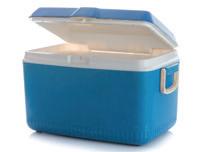



d Look at the pictures below. Then think of a concert or event you could organise at each of these locations.



Score < 12 12 - 16 > 16
Next exercise ex. 2 ex. 4 ex. 5
2 Write these words in the correct categories in the table below. Choose from:
backstage area – double bass – felt hat – food market – hammock – headband – horn –lead vocalist – leather jacket – main entrance – sleeping bag – solar power bank – violin –waistcoat – water refill point – wristband

Festival locations
Clothes
one hundred and seventy-one
3 Fill in this crossword puzzle.
ACROSS
4 The area behind the stage is called the … area.
6 Rock fans often wear black … jackets.
8 If someone is going to reveal an illegal situation, he’s going to blow the …
10 You don’t need electricity if you’re playing the … guitar.
11 T-shirts and gadgets sold to fans of a particular band or artist.
14 A small bag you wear around your waist is a … pack.
15 Rubber boots you will need if the festival grounds are muddy.
1 too expensive; … festival tickets
2 the full word for sax
3 Other band members often sing … vocals to support the lead vocalist.
5 A kind of bracelet you get in exchange for your entrance ticket.
7 Somebody who keeps whining about the same thing over and over again, sounds like a broken …
9 A type of bed, used especially outside, consisting of a long piece of strong cloth you tie between two trees.
4 Which word is the odd one out? Explain why.
a a horn – an accordion – a trumpet – a flute
b a firepit – a music venue – the main stage – a concert hall
c a rain poncho – wellies – a leather jacket – a waistcoat
d a gold chain – a wristband – sunglasses – a woolly hat
e a drink cooler – an inflatable sofa – a fanny pack / bumbag – a one-man tent
Score < 3 ≥ 3
Next exercise Check 3, p.174
5 You want to go to a festival with 3 of your best friends. You are staying at a campsite where you can also park your car / van. Make a list of things you will have to pack. Write at least 3 items in each box.
• Start your list with the items you can bring.
• Then decide which other necessary items friend 1 and 2 have to bring.
• Friend 3 is responsible for fun and entertainment, so put the necessary items on his list last. (You can find inspiration on the internet.)
• Add the items that each of you needs to bring for him / herself.
• Explain your choices to a classmate.
speaking
©VANIN
Items each person has to bring for themselves
Score
Next exercise ex. 4
Check 3, p. 174.
1 Join the sentences together using the correct relative pronouns.
a If you want to work in the music festival industry, there are plenty of jobs to choose from. Check the jobs in exercise b. Match the jobs with the right meaning from the box below.
creates advertisements, signage and promotional items
is responsible for maintaining the safety of everyone at an event
operates the sound and video equipment at a festival
oversees all of the festival's social media accounts are used by the bands shoots and edits footage of an event
b Now write a sentence to explain what that person’s job is.
A A social media manager is
B An event security officer is
C A graphic designer
D A videographer
E An audio-visual technician
F Before the event takes place, the AV technician rehearses light and video displays
Score < 4 4 - 5
> 5
Next exercise ex. 2 ex. 4 ex. 5
2 Fill in the correct relative pronoun in the text. Choose from: who – that – which.
Most people don’t like doing boring, practical things such as ‘reading the instructions’ and ‘bringing extra tent pegs’. If that’s you, then I suggest bringing a sensible friend can take the lead. Maybe you are that sensible friend: good for you!
These are a few things happened to my tent at previous festivals: the roof inverted itself and filled up with ten inches of rainwater came down on us in the middle of the night; I accidentally set up the tent so that our door was parallel and very, very close to the tent door of the unknown man had set up his tent next to us, meaning I had essentially given us ‘adjoining’ tents we could zip into each other; the entire tent blew away on day two of the event because it wasn’t secured properly.
Yes, these things sound funny when they come up in the stories you tell your friends at the pub, but it wasn’t funny when we discovered that the tent we had set up in the afternoon was gone and we had to spend the night at a communal emergency tent some friendly campers had set up. It was packed with snoring festival goers kept us awake all night, and in the morning, we suddenly stood eye-to-eye with the guy whose sleeping bag we had ‘borrowed’ for the night.
Adapted from: www.vice.com
3 Fill in the correct relative pronoun in the text.

Have a look at the festival timings list and make a list of the performances you want to see. Also note the times the performances start and the location. Having a rough idea of the bands you want to watch before you go will help you and your friends get the maximum entertainment out of the festival.
Take a tent ’s a size up. The space you get for the extra person will allow space for your kit too. A self-inflating air bed and inflatable pillow gives you a better chance of a comfortable night’s sleep once the partying is done.
Earplugs and eye masks are two things you definitely need to pack if you want to get some decent sleep.
Think about the place you pitch your tent. For example, if it rains heavily, you will regret setting up camp at the bottom of a hill it gets waterlogged. Similarly, being too close to the toilets might not prove a smart move after a couple of days.
My cousin managed to pitch his tent on one of the paths, meant they got trodden on and most of their stuff got trashed – not clever!
Camping chairs are brilliant for resting after a long day’s walking, standing and dancing. Choose a lightweight chair comes with a carry sleeve as they are convenient.
Pick an SOS meeting place you can regroup at designated times during the day so that if you lose your friends AND your phone runs out of juice, you can be reunited. Stick to this plan. Ensure you are all linked into Find Friends too. Ideally, take a solar powered charger for your phone.
Carry your essentials, are your festival wristband, credit card and ID you may need for drinking, on you in a bum bag, money belt or cross-body bag. A padlock on your tent can act as an invitation and won’t be secure. Don’t leave anything valuable in your tent.
Choose shoes stay waterproof for a long time. Actually, wellies are the footwear of festivals. They may hamper your fancy footwork on the dance floor, but they will keep your feet warm and dry, even when conditions underfoot resemble a bog. However, despite their attributes, many chiropodists see festival-goers feet are permanently damaged because they have worn inappropriate socks with wellies, and failing to dry and clean their feet when they have become hot and sweaty. Consequently, they have developed a modern-day equivalent to trench foot!
If you are wearing hot pants or shorts, then over-the-knee socks should prevent your wellies rubbing.
Take a hoodie and warm base layers for cold weather and the nights. Remember even when it’s sunny and warm in the daytime the temperature will drop at night!
Wet wipes will keep you fresh (as well as wiping muddy wellies and dirty pans). Take deodorant, mouthwash and chewing gum.
There is fresh and there’s festival fresh… Loo roll and hand sanitizer are two essentials will help you stay socially acceptable.
Source: onlinefirstaid.com
Score < 11 ≥ 11
Next exercise ex. 4
4 Sean went to Glastonbury festival last week. He made a lot of new friends on the camp site. Now Sean’s telling his brother about his new friends. Use a relative pronoun.

I want to stay awake for three days in a row.
b On the second day of the festival my tent went up in flames.
c
I lost my wrist band.
A I met a girl
B I met somebody
C I met somebody
D I met somebody
E I met a boy
F I met somebody
I’m studying to become a doctor.
My parents met each other at Glastonbury 22 years ago.
My brother is a safety officer in the backstage area.
Score < 4 ≥ 4
Next exercise
All done!
5 Taking the relative clause and relative pronouns one step further.
a Make relative clauses. Look at the examples first.
e.g. Amelia is listening to a song – do you know it?
Do you know the song [that] Amelia is listening to?
e.g. Farid is talking to a man – do you know him?
Do you know the man [that / who] Farid is talking to?
1 I saw you were looking for a band in the festival line-up.
Did you find ?
2 You told me about a festival.
What’s the name of ?
3 You went to a death metal concert.
Do you have any pictures of ?
4 My friend danced with the same girl all night.
Who’s the girl ?
5 You look up to a famous guitar player.
Who is that ?
b Use your imagination to complete these sentences. Think of music festivals and concerts.
1 I can’t meet you on Friday. That’s the day
2 The reason
3 I’ll never forget the year
4 It started raining heavily the moment
5 was the year
is that I don’t have any money.
6 The reason is that I got lost on the campsite.
c Do you use who or whom? Complete the sentences. Look at grammar table first.
Who or whom?
In a sentence, who is used as a subject
e.g. Who would like to go to a music festival? Who made these awesome quesadillas?
In a sentence, whom is used as the object of a verb or preposition e.g. To whom was the letter addressed?
Whom do you like better: Rihanna or Beyoncé?
I do not know with whom I will go to the festival this year.
If you can replace the word with ‘he’ or ‘she’, use who If you can replace it with ‘him’ or ‘her’, use whom See p. 156
1 He was especially kind to the guests I had brought.
2 Is he the person wrote that beautiful love song?
3 I just want to know made that awful music.
4 Do you know the singer is standing there at the bar?
5 My niece, we hired as our social media manager, opened a new Instagram account that went viral straightaway.
6 He is the kind of band leader for family is very important and he considers his band as family.
7 was the one received the highest score at the Eurovision Song Contest last year?
8 The sound engineer I asked for help turned out to be a groupie!
Score < 14 ≥ 14
Next exercise ex. 4 All done!
You and your classmates are going to pitch an upcoming band to a group of people who organise festivals.
1 Look up information on an upcoming or not very well-established band or artist. Take notes and make sure you find / invent an answer to these questions:
- How did you discover the band / artist?
- What kind of music do they make?
- Who are the band members? / What’s the singer’s real name?
- Where are they from? (Where is that? Insert a map!)
How long have they been in this band? / How long have they been into music?
- How did it all start for them?
- Do they have a single / album / video out? - Do you like them? Why (not)?
- What are they doing right now?
- Which festival(s) are they playing in the near future? - Fun facts / trivia about the band / artist.
2 Prepare a visual presentation. Your oral presentation will last at least 2 minutes. That does not include video material which can take max. 2 x 30 sec. or 3 x 20 sec.
3 Your visual presentation (e.g. PowerPoint) may only contain pictures. There shouldn’t be any text, except for the names of people and dates.
4 Present ‘your’ upcoming band to your classmates. Make sure you use the correct tense. Look for the verb forms in the questions. That will give you a hint about which tense to use.
5 You are organising a festival for starting bands. Make a line-up with 5 bands you hear about in your classmates’ presentations. Write an explanation for each of your choices. Band
Why would you choose them?
speaking listening
6 Reflect on your task by filling in the checklist.
Checklist: presenting an upcoming musician / band
1 Preparation
• I looked up information on an upcoming band / musician.
• I wrote down the answer to the questions with key words.
• I made a visual presentation with pictures only, no text (only names and dates).
2 Content
I spoke about these items:
• How did you discover the band / artist?
• What kind of music do they make?
• Who are the band members? / What’s the singer’s real name?
• Where are they from? (Where is that? Insert a map!)
• How long have they been in this band? / How long have they been into music?
• How did it all start for them?
• Do they have a single / album / video out?
• Do you like them? Why (not)?
• What are they doing right now?
• Which festival(s) are they playing in the near future?
• Fun facts / trivia about the band / artist.
3 Language use
• I used the past simple and past perfect correctly when talking about past events.
• I used correct relative clauses.
• I used the correct vocabulary to talk about the musician(s).
Feedback
Trace your steps on diddit.

check in
Step 1: describing the environment
Step 3: selecting information from a text
Step 2: using the first conditional
trace your steps
check out: promoting an environmental action
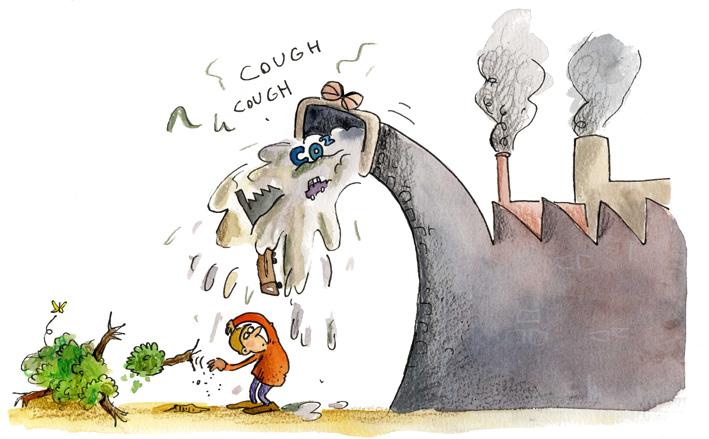
1 Watch the video of man’s relationship with the earth.
a What is man doing? Close your book and try to memorise as much as you can without taking notes.
b Read through the possibilities below. Underline the words you don’t understand.
c Try to find their meaning by using these tricks:
Do you recognise the word from a different language?
– Do you know the parts of the word?
– Does your neighbour know the word?
Use an online dictionary to help you.
d Indicate what man is doing in the video. dumping waste in landfills dumping nuclear waste in the ocean starting a war fishing the ocean empty killing snakes to make boots building polluting cars shooting birds for fun cutting trees to waste paper beating the seal to death for a coat building huge cities with lots of traffic killing the elephant for its ivory drilling for oil killing a cow to make a carpet using animals for testing planting new trees piling up mountains of waste
e What is the message of this video?
2 Discuss the following questions with one person first, then discuss with the entire group.
a Which of man’s acts in the video has struck you the most? Explain what you mean.
b Which of the acts do you consider acceptable or normal? Why?
1 / How green are you?
1 Are you a tree hugger or more of an environmental disaster? Take the quiz and find out! Count your scores and indicate your result.
result:
> 10 You are a born tree hugger. You love nature and would do anything to keep it safe for others!
5 - 10 You are concerned about nature but you put yourself in the number 1 spot.
< 5 Hey you, big spender! You waste energy and natural resources as if they were mud! It is time you became more eco-aware!
2 Can you go for zero waste? New Yorker Lauren Singer has produced very little waste in the last two years.
a Read through the questions and make sure you understand everything before watching the video.
b Write down two things you would like to know about Lauren. Check if your questions are answered in the video.
c Watch the extract and fill in the missing words.
1 The average American produces a day.
2 We could go off the trash grid and minimise thousands of pounds of into just a single
3 This is everything basically that I couldn’t or couldn’t or figure out what to do with.
4 Where did you get the idea to become ?
5 After class I went home to make dinner and I my fridge and I that everything in there was
6 We’re supposed to and here you are making all of this trash.
7 I feel like it’s really important to live your and my values are having a really low
8 It was just like seeing that I didn’t have to do that much to produce very little waste and by and I essentially 80% of my waste.
d List the food that Lauren buys using her own containers.
e Which environmentally friendly alternative does Lauren use for:
1 toothbrushes
2 sponges
3 paper towels
4 cotton balls
5 shampoo
6 make-up
7 feminine products
8 gift wrap
f What tips does Lauren have for someone who wants to reduce waste?
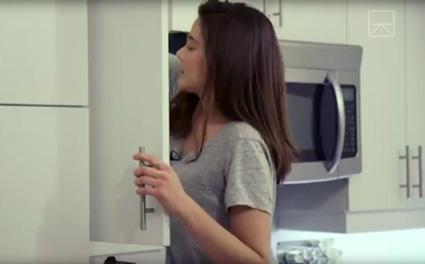
Tip 1:
Tip 2:
– Tip 3:
3 Discuss these questions with a partner.
a What do you think of Lauren’s way of life? Do you agree with her? Why (not)?
b Have you learned something new? What?
c Will you put some of her advice into practice in your own life? Explain.
4 Do you know how to make a mind map? Check the strategy box.
a Collect all the words related to the environment from the opening fragment, Man, and from the Lauren Singer section onto a draft sheet.
b Group these words according to their subject or main idea.
A mind map is a way to organise important information
– You start from a central keyword and you draw lines and arrows to link it up with related words, which are separate ‘main ideas’. Use keywords only.
1 Meet Jack Harries, an English actor, comedian, vlogger and since recently, a sustainable influencer. Watch the introduction of his Seat at the Table series and answer the questions.
watching
a While you are watching, write down the words you hear that are related to the environment.

b What is COP26 and why is it special?
c Why does one of the speakers call it a gross injustice?
2 Now watch the video Harries made that was shown to world leaders at COP26 in Glasgow.
a Highlight the words you hear.
acid rain
afforestation
avalanche
carbon dioxide
climate refugee
concentration
coral bleaching
deforestation
devastation
disasters droughts
fuels
b Which terms are used in the video to describe these phenomena?
• A worldwide phenomenon:
• Complete destruction:
• Beyond the turning point:
watching
glaciers
habitat pollution priority species
wars
c Watch the video again and fill in the table below.
Which disaster did they survive?
What is their biggest fear?
Hopeful for the future?






d Discuss these questions with a partner.
• Which of the witnesses can you relate to?
• Which testimony has struck you most? Why?
3 Combine the words to create compound nouns.
1renewable Acaps
2 ice Beffect
3heat Cfootprint
4greenhouse Denergy
5global Eemission
6carbon Fwaves
7fossil Gfuel
8zero Hwarming
4 Use the vocabulary from the previous exercises in the sentences below.
1 The energy prices are so high that it is becoming worthwhile to invest in
2 Scientists claim that these natural disasters are the result of
3 Petroleum and coal are two well-known
4 Buying locally will tremendously reduce the of a product.
5 In many countries, means a decline in soil fertility, a reduction in vegetation cover, especially grass cover, and loss of
6 Since 2021 the EU has forbidden single-use plastic, e.g., plastic straws are now replaced by alternatives.
5 Use an online dictionary to expand your vocabulary range by finding the corresponding nouns or verbs.
6 Fill in the crossword puzzle. All the words you need were mentioned in Step 1.
ACROSS
3 that can be made into compost
6 a category of biological classification
7 the process of making air, water, soil, etc. dirty
8 the process of something becoming a desert
11 a situation in which a plant or animal stops existing
12 the place where a particular type of animal or plant is normally found
DOWN
1 the act of cutting down trees in an area
2 involving the use of natural products in a way that doesn't harm the environment
4 substance that pollutes something
5 capable of being broken down by the action of living things, such as micro-organisms
9 produced without using artificial chemicals
10 the regular pattern of weather conditions
7 Group the new vocabulary in a logical way. Use a separate sheet of paper to make a mind map of the climate terms that you have learned in Step 1.
CHECK 1, p. 210
Step
Using the first conditional
1 Are you an ecological bigfoot? Watch the video by WWF about Earth Overshoot Day and summarise the video in the table below. watching
EARTH OVERSHOOT DAY =
How do we exhaust the planet? •
Sustainable future? • •
2 Now read the text below and answer the questions.
a How is Earth Overshoot Day defined in the text?
READING
©VANIN
c Compare the situation in Belgium to the rest of the world.
d What are the expectations for the future like? Which term is used to indicate this?
5 April
Today is Earth Overshoot Day for the Benelux countries: if the whole world were to live as they do in Belgium, Luxembourg and the Netherlands, all the raw materials that the earth can provide this year would already be depleted. Every day we grow our debt with our planet, and the IPCC (the UN’s climate panel) warns that we are on the brink of a climate catastrophe.

If everyone lived the way they do in the Benelux countries, we would need four planet Earths. That is the meaning of today as Earth Overshoot Day, a date calculated each year based on each country’s ecological footprint. Today is the day on which the Benelux nations have already finished their piece of the cake: our consumption exceeds the planet’s capacity.
The earth gets a bit of a break only because so many developing countries consume far less and compensate for the West: in 2021, 29 July marked the exhaustion date for the entire world. From that date onwards, humanity used more natural resources than the earth could regenerate during that year.
Earth Overshoot Day also falls earlier every year: for Belgium, it took place on 26 March this year, one week earlier than last year. Luxembourg already crossed the threshold on Valentine’s Day, 14 February. The Dutch have until 12 April, but by then, they will also be living above their means.
Just this week, the climate panel of the United Nations issued the third and final part of its chilling climate report. Its warnings are unmistakable: we are heading for climate disaster. The chances of keeping global warming below 1.5 degrees are getting smaller with each passing day. If we fail to do so, the consequences will be disastrous: plant and animal species will disappear, agriculture will become impossible in some places, and people will have to flee from the vengeful climate. It is now or never, the UN states unequivocally.
Not only are we heading towards a climate catastrophe, but also a world of scarcity, Jorg Snoeck, founder of RetailDetail Snoeck, believes. “The solution is not to stop consuming or ‘consume less’, but to consume more consciously. Let’s start thinking about our waste: we cannot afford to waste today and tomorrow. Waste is becoming too expensive.” After all, food comes at a cost to people and the environment. Food being sold at dumping prices is a thing of the past. “If we want to make sure that the next generations still have food, we have to take a different approach.”
So what should we do? In terms of distribution, Snoeck thinks we should move towards food tailored to the consumer. Think, for example, of meal-kit services like HelloFresh, where every ingredient gets delivered in exact quantities. That way, there is less waste. But such solutions should also be available for people living by themselves (one in three households in the EU already consists of one person) and for the elderly. After all, a quarter of Belgians today are over 65, and the ageing population is only increasing.
to be on the brink of: to be almost in a new (usually bad) situation depleted: used up scarcity: in short supply, a lack of something unequivocally: clearly, in a way that leaves no doubt vengeful: desiring to hurt someone
4 Look back at your answers to question 2 d and complete the grammar box below.
Conditional sentences
A condition is something that must be fulfilled before something else can or will happen. A condition mostly starts with ‘if’. e.g. If we fail to do so, the consequences will be disastrous. if-clause main clause (= condition) (= possible result)
Conditional sentences that express something or are called first conditionals See p. 205
5 Highlight the if-clause and main clause in 2 different colours in the sentences below.
1 If I bring my lunch in a reusable lunchbox, I will reduce the use of plastic. ,
2 If I use scrubs with microplastics, I will pollute the seas. ,
3 We will be able to reduce the damaging effects if we all drink water straight from the tap.
6 Complete the grid with the tenses used in a first conditional sentence. Clause Tense if-clause main clause
7 Fill in the correct form of the verb in brackets in these conditional sentences.
1 It is estimated that within 100 years there (to be) no rainforests left if deforestation (to continue) at the same pace as today.
2 Saudi Arabia (to freeze) its oil production if other major producers (to do) so.
3 There (to be) no going back from the climate chaos if we (not to change) the system.
4 If your solar panels (to generate) more power than you need, your electricity company (to look) at what you’ve produced over a full year.
5 If overfishing (to continue), all seafood (to run out) in 2050.
8 Match the parts of the sentences. Make correct conditional sentences.
1If we don’t act now
2Tourists will go elsewhere
A if the bleaching of the Great Barrier Reef continues.
Bit will end up in a landfill with garbage.
3What will happen to the environmentCif we all work together.
4If you don’t recycle plastic
5 Chemicals leaking from batteries will leach into the soil
6 We will be able to protect the environment better
7 If there are too many toxic metals in the water
8 If the glaciers in Peru continue to melt at their current rate
9If the prototype is successful
10The effects will be far-reaching
Dif a nuclear accident happens.
E the environment will change drastically in the next 50 years.
F a 100-kilometre-long barrier will be strung out in the Pacific Ocean to collect some 68 million kilograms of floating trash.
G all aquatic organisms living within it will die.
H if people keep on consuming as many natural resources as they do now?
Ithey will be gone by 2100.
Jif they are not properly recycled.
12345678910
9 Make first conditional sentences with the prompts.
e.g. We / to throw / plastic into the ocean / the fish / to be poisoned. If we throw plastic into the ocean, the fish will be poisoned.
1 None of us / to fight / against cutting down the forests / we / never to be able / to stop climate change.
2 We / to keep wasting / electricity / we / never to be able to stop / nuclear energy.
3 We / to use / environmentally friendly cars / to produce / less acid rain.
4 The sea level / to rise / we / not to protect / the melting ice caps.
5 More tornadoes / to be / not to stop / climate change.
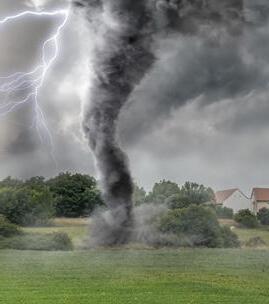
6 Theo / to reduce / the emission of carbon dioxide / to go to school / by bus.
10 Sit together with a partner. Give them some advice for the future containing a first conditional. Then take turns.
CHECK 2, p. 214
Richard Williams, better known by his stage name Prince Ea, is an American rapper, spoken word artist, and civil rights activist from St Louis, MO. Prince Ea is a familiar face for anyone with a newsfeed: he has accumulated over one billion views on Facebook and YouTube. His messages of compassion, in the form of content-heavy spoken word poetry, have earned him global recognition as a social influencer on peace and civil rights, with a focus on education.
Source: Forbes
1 Discuss these questions before watching the video by Prince Ea.
a What do you think the video will be about?
b If the Earth’s lifespan were condensed into 24 hours, how long do you think mankind has existed?
2 What is the answer to question 1b? watching
3 Are these statements true or false? Correct the false statements.
1 Planet earth is 4.5 million years old.
2 We have increased the extinction of animals by 1,000 times the normal rate.
3 Prince Ea thinks it’s too late.

4 List some of the achievements of mankind and explain how these achievements have turned against us.
5 Is mankind wise? Why (not)?
6 What is the real crisis according to Prince Ea?
7 How can we deal with this situation?
How do we create a future in which both people and nature can thrive?
How did we get to this point?
years ago:-
Learned how
Now?
New Age: =
Problem? loss of e.g.- instead: Solution?
8 We must take action! Fill in the outline of the WWF video. watching Plan?
Four goals: - -
9 Discuss these questions.
a Although the videos by Prince Ea and the WWF are quite different, they deal with the same topic. Which one did you find the most interesting to watch? Why?
b Which video did you find most striking?
c Was there any information in the videos that you didn’t know or realise yet?
d Do you think watching these videos will change your perspective?
10 Read the text below about climate change. Use the Strategy on How to deal with difficult words in a text if necessary (p. 208).
a Highlight the topic sentence in each paragraph in blue.

Though we often think about human-induced climate change as something that will happen in the future, it is an ongoing process. Ecosystems and communities in the United States and around the world are being impacted today.
Global temperatures rose about 1.98°F (1.1°C) from 1901 to 2020, but climate change refers to more than an increase in temperature. It also includes sea level rise, changes in weather patterns like drought and flooding, and much more. Things that we depend upon and value – water, energy, transportation, wildlife, agriculture, ecosystems, and human health – are experiencing the effects of a changing climate.
The impacts of climate change on different sectors of society are interrelated. Drought can harm food production and human health. Flooding can lead to the spread of disease and damages to ecosystems and infrastructure. Human health issues can increase mortality, impact food availability, and limit worker productivity. Climate change impacts are seen throughout every aspect of the world we live in. However, climate change impacts are uneven across the country and the world – even within a single community, climate change impacts can differ between neighborhoods or individuals. Long-standing socioeconomic inequities can make underserved groups, who often have the highest exposure to hazards and the fewest resources to respond, more vulnerable.
The projections of a climate change-impacted future are not inevitable. Many of the problems and solutions are known to us now, and ongoing research continues to provide new ones. Experts believe there is still time to avoid the most negative of outcomes by limiting warming and reducing emissions to zero as quickly as possible. Reducing our emissions of greenhouse gases will require investment in new technology and infrastructure, which will spur job growth. Additionally,

lowering emissions will lessen harmful impacts to human health, saving countless lives and billions of dollars in health-related expenses.
We see climate change affecting our planet from pole to pole. NOAA monitors global climate data and here are some of the changes NOAA has recorded.
• Global temperatures rose about 1.8°F (1°C) from 1901 to 2020.
• Sea level rise has accelerated from 1.7 mm/year throughout most of the 20th century to 3.2 mm/year since 1993.
• Glaciers are shrinking: average thickness of 30 well-studied glaciers has decreased more than 60 feet since 1980.
• The area covered by sea ice in the Arctic at the end of summer has shrunk by about 40% since 1979.
• The amount of carbon dioxide in the atmosphere has risen by 25% since 1958, and by about 40% since the Industrial Revolution.
• Snow is melting earlier compared to long-term averages.
Changes to water resources can have a big impact on our world and our lives.
Flooding is an increasing issue. Compared to the beginning of the 20th century, there are both stronger and more frequent abnormally heavy precipitation events across most of the United States.
On the other hand, drought is also becoming more common, particularly in the Western United States. Humans are using more water, especially for agriculture. Much like we sweat more when it is hot out, higher air temperatures cause plants to lose, or transpire, more water, meaning farmers must give them more water. Both highlight the need for more water in places where supplies are dwindling.
Snowpack is an important source of freshwater for many people. As the snow melts, freshwater becomes available for use, especially in regions like the Western United States where there is not much precipitation in warmer months. But as temperatures warm, there is less snow overall and snow begins to melt earlier in the year, meaning snowpack may not be a reliable source of water for the entire warm and dry seasons.
Our food supply depends on climate and weather conditions. Although farmers and researchers may be able to adapt some agricultural techniques and technologies or develop new ones, some changes will be difficult to manage. Increased temperatures, drought and water stress, diseases, and weather extremes create challenges for the farmers and ranchers who put food on our tables.
Human farm workers can suffer from heat-related health issues, like exhaustion, heatstroke, and heart attacks. Rising temperatures and heat stress can also harm livestock.
100
Climate change is already impacting human health. Changes in weather and climate patterns can put lives at risk. Heat is one of the most deadly weather phenomena. As ocean temperatures rise, hurricanes are getting stronger and wetter, which can cause direct and indirect deaths. Dry conditions lead to more wildfires. More flooding can lead to the spread of waterborne diseases, injuries, and chemical hazards. As geographic ranges of mosquitoes and ticks expand, they can carry diseases to new locations.
The most vulnerable groups, including children, the elderly, people with preexisting health conditions, outdoor workers, are at an even higher risk because of the compounding factors from climate change. But public health groups can work with local communities to help people understand and build resilience to climate change health impacts.
Climate change will continue to have a significant impact on ecosystems and organisms, though they are not impacted equally. The Arctic is one of the ecosystems that is the most vulnerable, as it is warming at least twice the rate of the global average and melting land ice sheets and glaciers contribute dramatically to sea level rise around the globe.
Some living things can respond to climate change; some plants are blooming earlier and some species may expand their geographic range. But these changes are happening too fast for many other plants and animals. Some invasive or nuisance species, like lionfish and ticks, may thrive in even more places because of climate change.
Changes are also occurring in the ocean. The ocean absorbs about 30% of the carbon dioxide that is released into the atmosphere from the burning of fossil fuels. As a result, the water is becoming more acidic, affecting marine life. Sea levels are rising due to thermal expansion, in addition to melting ice sheets and glaciers, putting coastal areas at greater risk of erosion and storm surge.
The compounding effects of climate change are leading to many changes in ecosystems. Coral reefs are vulnerable to many effects of climate change: warming waters can lead to coral bleaching, stronger hurricanes can destroy reefs, and sea level rise can cause corals to be smothered by sediment. Coral reef ecosystems are home to thousands of species, which rely on healthy coral reefs to survive.
dwindling > to dwindle: shrink, decrease nuisance: something that is annoying or unpleasant precipitation: rain, snow, sleet, or hail that falls to the ground to spur: to encourage a tick: a very small animal that bites humans and might transmit Lyme disease
Source: www.noaa.gov
105
As future leaders who will make decisions about the issues they face in their communities, the Museum of Science and Industry positioned high school-aged teens to act as advocates for building the city’s resilience to the impacts and consequences of global climate change.
b Use the information from the text to fill in the outline below the article. The topic sentences will guide you.
Facts and figures (4 examples)
HUMAN IMPACT
Human health
vulnerable group:
Water
, flooding
Food

The Arctic –
Plants
Oceans
Too fast for many plants and animals
c Look for keywords related to climate change in each paragraph and use a separate sheet of paper to organise them in a logical way.
A caption is a short but powerful sentence describing what you see in a picture. It is often used in newspapers or on Instagram.
1 Look at these pictures and captions. Which caption belongs to which picture?
A coal-fired power station. ‘Massive CO2 extraction’ costing trillions is needed in order to avoid runaway temperature rises.’

‘We opened the door and we saw the debris everywhere. Every half-second you see something.’
The scale of warming in the ocean is ‘truly staggering’, the report warns.


Clair platform production has been shut down for the time being.

2 Look at these 3 pictures. Use the given keywords to write a good caption.



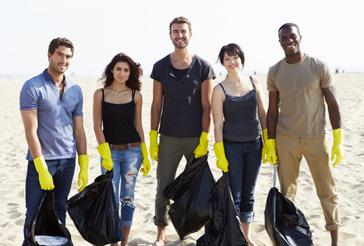



3 Look at these pictures and think of a good caption for each of them.
CHECK 3, p. 217
If you heat water to 100 °C, it boils.

If I drink coffee at night, If she doesn’t drink coffee. If you heat water to 100°C,
present simple
If it rains, If you don’t hurry, If you study hard, If you hurry,
present simple
Keep in mind:
I don’t sleep well. she is in a bad mood all day. it boils
present simple
we will cancel the trip. you will miss the train. you won’t fail the test. you will not miss the train.
future simple = will/won’t + base form of the verb
– In a zero conditional, ‘if’ = ‘when’.
e.g. If you drop an egg, it breaks.
= When you drop an egg, it breaks.
= every time you do this
‘If not’ can be replaced by ‘unless’.
e.g. I will go to the pool if it doesn’t rain.
= I will go to the pool unless it rains.
You can start or end a sentence with the if-clause. Add a comma if you put the if-clause first.
e.g. If I buy local products, I will reduce my carbon footprint.
= I will reduce my carbon footprint if I buy local products.
If we don’t do anything now, the ice caps will melt completely.

Zero and first conditional sentences FORM
Zero conditional to talk about things that are always generally true or scientific facts
First conditional to talk about a real or possible situation and its result (now or in the future)
– Use a present continuous in the if-clause of a first conditional if you are referring to a present action or future arrangement.
e.g. If you’re looking for Before the Flood, you’ll find it in the documentary section.















Word Translation
My notes to accelerate versnellen
bulk buying in grote hoeveelheid kopen of als losse koopwaar
carbon footprint CO2-voetafdruk
climate refugee klimaatvluchteling to compost composteren devastation verwoesting disaster ramp to dispose weggooien to emit uitstoten
to encourage naturede natuur aanmoedigen
environmental impactimpact op de natuur to extinct uitsterven
fossil fuels fossiele brandstoffen
geographic range geografische verspreiding
injustice ongelijkheid
irreversible onomkeerbaar
landfill stort, dumpingplaats
to manage the oceansde oceanen beheren to pollute vervuilen to radiate stralen
to recycle recycleren
to reduce waste afval beperken
renewable energy hernieuwbare energie to rise stijgen
rubbish afval
to shrink inkrimpen species soort
starvation hongersnood
sustainable duurzaam to testify getuigen
trash afval
vulnerable kwetsbaar
zero waste zonder afval
Do you really need the word to understand the sentence?
Yes, I do !
Do you recognise the word from another language you know?
e.g. exploit g French ‘exploiter’
e.g. accomplish g French ‘accomplir’
e.g. buoy g Dutch ‘boei’
No, I don’t.
Look for:
- a definition
e.g. Some celestial bodies, such as the planets and stars, can be seen with the naked eye.
- a description
e.g. The team was elated when they won the trophy.
- a synonym or paraphrase
e.g. It was an idyllic day; sunny, warm and perfect for a walk in the park.
- a comparison or contrast
e.g. Cold weather soon replaced the sweltering heat of summer.
I need more information.
I get it!
No, I don’t.
Look for a part of the word you know:
- a compound word
e.g. land + fill = landfill
- a prefix
e.g. im-, il-, un-, pre- ...
- a suffix
e.g. -ion, -ful, -able ...
I still don’t understand.
Look up the word.
Read on!
Ask a peer or your teacher.
1st time: skim the text.
• who, what, where, when?
2nd time: read in detail
• Take notes.
• Highlight main ideas in general and by section.
• Look for topic sentences = the most important sentence of a paragraph = often the first sentence or last sentence. The rest of the paragraph is a further explanation and/or example.
1st draft: reconstruct the text in your own words
• Start with the topic sentences.
• Add the most important facts or examples.
2nd draft: check these aspects of your text:
• Check your language.
• Check the type of work, title, author, main point.
• Did you summarise as a whole?
• Does your summary follow the logic of the original article?
• Is your summary neutral? (Don’t give your opinion!)
• Is your text not too long (about ¼ of the original)?
Let someone else read the summary. Can they understand the sense of the text?
Hand in your summary.

1 Write a paragraph about climate change. a Preparation: look at the pictures below and write down the climate issue you see.


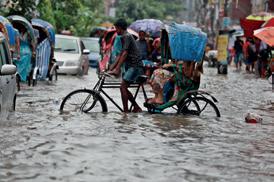




Subtotal / 9

b Action: write a paragraph (about 50 words) about the effects of climate change. Make sure you use the vocabulary from at least four pictures in your text. Formulate a plausible solution for the climate change issues.
Subtotal / 15
c Reflection: use the checklist below to reflect on your task.
Checklist: describing climate change Yes I think so No
1 Preparation and content
• I named the climate change issue in each of the pictures.


• I wrote a text describing climate change, using the information from the pictures.

2 Language
• I used the correct vocabulary.
• I used correct grammar.
• I paid attention to the structure of my sentences.
• I used correct spelling and punctuation.
Feedback
Score < 16 16-20
> 20
Next exercise ex. 3 ex. 2 ex. 4
2 What do you see in these pictures?
Score < 6 6 – 8
Next exercise ex. 4
> 8
Check 2, p. 214
3 Match these words with their explanation. Try to derive the meaning of the word from the context sentence. Use an online dictionary if you need help.
Word and context sentence
1 biodegradable
More and more supermarkets have decided to pack their food in biodegradable packaging.

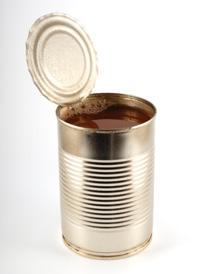
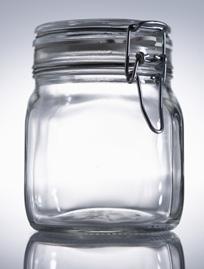
2 biodiversity Thousands of interconnected species make up a vital web of biodiversity within the ecosystems.
conservation
3
WWF’s focus is on the conservation of threatened animals and endangered species.
4 desertification
The photo series shows the process of desertification over a 100-year period.
habitat
5
Koalas are found in a range of habitats, from coastal islands and tall eucalypt forests to low woodlands inland.
6 litter Marine wildlife gets entangled in litter and accidentally ingests it.
Explanation
A the protection of the natural environment

B
fuel such as coal or oil, that was formed over millions of years from the remains of animals or plants

C
to add dirty or harmful substances to land, air, water, etc. so that it is no longer pleasant or safe to use


D
the existence of a large number of different kinds of animals and plants which make a balanced environment
E
capable of being broken down into small parts by natural processes and bacteria
F
small pieces of rubbish such as paper, cans and bottles, that people have left lying in a public place
7 the ozone
The hole in the Antarctic ozone layer is beginning to close, scientists have discovered.
8 pollute
G the place where a particular type of animal or plant is normally found
9
Life expectancy north of the Huai River is 5.5 years lower than in the south due to companies that pollute.
fossil fuel
The world is expected to reduce its reliance on fossil fuels in favour of cleaner sources of energy.
toxic waste
10
The mafia ran a profitable business dumping toxic (even nuclear) waste in rural areas.
H
a layer high above the earth’s surface that helps to protect the earth from harmful radiation from the sun
I unwanted chemicals that are the result of manufacturing or industry and that are poisonous to living things
J the process of becoming or making something into a desert
12345678910
Score < 7 ≥ 7
Next exercise Check 2, p. 214
4 Find a partner and have a short conversation with them based on the questions below. Try to use the following words in your conversation.
biodiversity – extinction – fossil fuel – pollution – renewable energy – reuse – waste
a Is there something you can learn from nature? What?
b What should / could your city do to reduce the number of cars?
c What do you do to support the environment? Can you do anything else?
d Are you worried about the future of the planet? Explain why (not).
Score
Next exercise ex. 3 Check 2, p. 214
1 Fill in the correct form of the verb.
1 If we (not to show) more respect for our planet, there (to be) no planet left for future generations.
2 If Europe (to forbid) the use of pesticides, we (to be able) to reduce the number of cancers.
3 It has been predicted that if people (not to have) to pay for their plastic bags, and just think of them as cheap, disposable items, they (to be) using more than double the number in a few years time.
4 Five Pacific Islands have been lost and many more (to follow) if we (not to stop) the seas rising.
5 As climate change (to hit) the consequences (to be) far-reaching.
Score < 6 6-8 > 8
Next exercise ex. 3 ex. 5 ex. 4
2 Fill in the correct verb forms. Use each verb only once. Pay attention to the structure of first conditional sentences.
to be – to buy – to decide – to drop off – to generate – to get – to reduce – to replace – to save –to stimulate
1 If we face scrubs without plastic, we the amount of plastic in our oceans.
2 Households more electricity if the government solar energy.
3 Your old smartphone a new life if you at a recycle point.

4 If our country to build a whole new windfarm at sea, we less dependent on nuclear energy.
5 If you your showerhead by a more economic one, you up to 60% water.
Score < 7 ≥ 7
Next exercise Check 3, p. 217
3 Fill in the correct verb forms. Pay attention to the structure of first conditional sentences.
1 What (to happen) if you (not to recycle) plastic?
2 The economy itself (to die) if our ecosystems (to collapse).
3 Chinese firms guilty of exceeding emission limits or building plants without environmental permits (to face) tougher punishments if they (not to take) action now.
4 If the bleaching (to continue) on the Great Barrier Reef, tourists say they (to pack) their bags and go elsewhere.
5 If oil (to remain) on a beach for a while, other creatures, such as snails, clams, and terrestrial animals (to suffer).
Score < 7 ≥ 7
Next exercise ex. 2
4 Build sentences with these words. Make sure there is a correct first conditional in every sentence.
1 If / China and the USA / to reduce / gas emission / COP26 / to have / a chance of succeeding.
2 If / renewable energy / to be used / more / there / to be / less need for fossil fuels.
3 If / the Western world / to watch / its carbon foot print / better / the planet / to be / still / there / for future generations.
4 Global warming / to form / a threat / to marine life / if / we / not to take care of / it / now.
Score < 3 ≥ 3
Next exercise ex. 5 Check 3, p. 217
5 Read the blog post below. Fill in the correct verb form.
For those of you who
(1) (currently/to sit) at a desk chewing on their plastic pen (or other plastic object). Stop. Think carefully about what you (2) (to do) (I have to remind myself about this on a daily basis).
You
(3) (potentially/currently to break off) teeny tiny pieces of plastics which, if you
(4) (to be) unlucky,
(5) (to find) their way into your mouth, and end up in your stomach. You know the old fable that if you

(6) (to swallow) chewing gum it
(7) (to stay) in your stomach for several years (It’s a myth). Well the same could be said about plastic. In fact, it
(8) (probably - to exit) your body given a day or two. Let’s face it, gum and plastic pieces are small, your body can’t dissolve or utilize it, so it (9) (to try) to get rid of it. However, what if the plastic gets stuck, or you eat enough plastic to have a nasty effect on your body?
This is the basis for the theory behind microplastic ingestion in the wild. In most cases ingestion is accidental and plastic is mistaken for food, although some studies
(10) (to find) that plastics can be targeted specifically by animals (more about this later). In some extremely polluted areas, the numbers of microplastic may outweigh natural prey items.

Source: www.plastictides.wordpress.com
Score < 7 ≥ 7
Next exercise
Check 3, p. 217


1 Learn all about the Eco-Warriors.
a Watch the trailer of Rise of the Eco-Warriors and answer the questions.
1 Write down what these Eco-Warriors actually do.
2 Would you like to be part of their project? Why (not)? If yes, in what way?
b Read Paul Daley’s blog and answer the questions.

1 Highlight the topic sentence(s) in every paragraph of his text.
Three years ago I travelled for the very first time into the interior of West Kalimantan, Indonesian Borneo, with a team of young ‘Eco-Warriors’ - guided by the legendary rainforest ecologist Dr Willie Smits. The documentary is based on our project in Borneo - Rise of the Eco-Warriors – and explores the trials and tribulations of this group of young global citizens coming into a completely foreign bio-cultural landscape for the duration of 100 days.

We were on a mission to confront the devastating palm oil industry carving its way into the heart of Borneo. By putting a spotlight on community driven economic alternatives, our aim was to empower local communities resisting the invasion of industrial monoculture into their lands.
The film was finally released earlier this year and the response has been hugely positive. By and large the reaction and impact has reached people in ways that none of us expected. We’ve had everything from people offering $10,000 donations to build local high-schools in Borneo - to pro palm oil associates waging online public hate wars under false Facebook accounts. (Who was it that said, ‘If You’re Not Pissing People Off, You’re Doing It All Wrong!’) The impact in schools has been astounding - this is where the real leverage to create change is taking off.
For me personally - the project was an extremely challenging experience - on every possible level - failure, disappointment, heartbreak, dengue-inducing-hangovers... you name it. They say ‘the tree of expectation is laden with the fruits of disappointment’. Well, my tree had a bumper crop that year - thankfully all the rotten fruit made for some fabulous compost - and thus the garden keeps growing... I hate to use the old cliché ‘it changed my life’ - but it really did. It was strangely through this deeply confronting experience that I fell in love with the Indonesian archipelago and its bio-cultural extremities.
My advice to young people today would be - go out and fail, make mistakes, learn from them and keep growing. Life truly begins when you leave your comfort zone - discard society’s ridiculous guidebook (it’s horribly out of date - and was never very relevant anyway).
archipelago: a group of islands by and large: in general discard: to throw something away because it is useless gauge: to make a judgement about something monoculture: the practice of growing only one type of crop trials and tribulations: troubles and events that cause suffering
Source: www.alushforest.blogspot.be
When we look back on life years from now - I’m almost certain we’ll gauge ‘success’ and ‘achievement’ in very different terms than how we may view it right now. In fact, it may not even be something we think about at all ...
2 Fill in the grid using the information in the topic sentences.
Who?
Where?
When?
What?
Why?
Results?
1 Response:
2 For Daley:
Score < 6 6 – 8 > 8
Next exercise ex. 2 ex. 3 ex. 4
2 Read this short article about recycled plastic backpacks. a Highlight the correct answer using the information from the introduction of the article.
• What is the type of text? narrative – descriptive – directing – argumentative
• This is an advertisement – a blog entry – instructions – a newspaper article – a statement.
• Which term is used to refer to new plastic?
READING
If you are looking for a new backpack, you can’t go wrong with a recycled plastic backpack. There are so many options available that there should be no reason to buy a pack made from virgin plastic. There are lots of things to look for to ensure you buy the right backpack. One that will last the distance, has all the pockets and features you are looking for, and that’s the right size and shape. It’s also important to consider what material it’s made from.

You want to make sure it is strong and will last for a long time. The more use we get out of items that we own, the better for us and the environment. Not only is a recycled plastic backpack strong and durable, but it can usually be recycled at the end of its life. These products reduce the amount of waste material that goes to landfills, plus they help to build a stronger recycling industry. By purchasing products made from recycled fabrics, you support the companies that are making change happen. Who knows you might even encourage someone else, a friend or colleague when they see your great bag. One of the reasons I started this site was because I had no idea what sort of recycled products were available. I have found so many products, and I want to share this information with others. If you have found great recycled products, then feel free to get in touch and let us know.
Backpacks made from recycled materials are a great way to ensure you are protecting the planet along with your belongings. Just like with swimwear and activewear, there are so many recycled products available there’s no need to buy a backpack made from virgin plastic.
Here are our favourites, but don’t be afraid to explore the companies and find your favourite.
Solgaard’s mission is to help cut ocean plastic in half by 2025. To help make this happen, they have partnered with The Plastic Bank to help tackle ocean pollution. When you buy one of Solgaard’s amazing, recycled plastic backpacks, they will pull 5lb of plastic from the ocean and upcycle it into useful products.
Their designs have some other pretty cool features too. Firstly, they are made from a recycled fabric called ShoreTex™, their very own fabric made from upcycled ocean plastic.
The Lifepack has a removable solar-powered battery, anti-theft locks, TSA-approved locks, fits a laptop, and there are secret compartments for your passports and cards. Whether you’re hiking in the wilderness or getting around town, Lifepack is designed to fit your on-the-go lifestyle. Check out their luggage made with recycled content too.
Day Owl started out helping people in Haiti following the earthquake in 2010. They employed locals to collect plastic waste and help recycle it for use in their fabrics. They developed a responsible supply chain with two significant outcomes, getting people out of poverty and cleaning up waste. Day Owl showcases the first product using First Mile’s responsible supply chain and recycled and sustainable materials.
To date, First Mile™ has saved over 121 million plastic bottles, and their local entrepreneurs have generated over $700 thousand in revenue. They have partnered with Puma, Ralph Lauren, Aerie, HP, Marmot, Timberland, and Reebok.
Day Owl has created a recycled plastic backpack made from the sturdy First Mile™ waxed canvas. It’s a practical backpack that lets you carry everything you need while looking stylish. Plus, each bag they make saves 25 bottles, 700 gallons of water, and 1.2 lbs of pesticides and fertilizers compared with cotton.

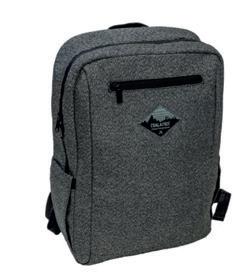
Coalatree’s lifestyle, outdoor apparel, and accessories are created with a focus on sustainability and recycling. Designing gear for passionate adventurers to urban explorers, their range includes clothing, bags and backpacks, hammocks, and blankets.
The company uses a mix of recycled materials, including coffee grounds, recycled plastic bottles, recycled nylon, and recycled cotton. Their recycled plastic backpack is made from repurposed plastic bottles. The fabric is a tough and durable, water-resistant ripstop material that is also slash-proof. They feature easy-access pockets and a hidden pocket for keeping your passport or other valuables. It’s also TSA approved size and comes with a TSA approved built-in lock.
b Use the information from the article to fill in the table about the 3 backpacks.
Solgaard
Ambition
Materials used
Pros of the backpack
Day Owl
Started in
2 outcomes of supply chain
Materials saved for each bag
Coalatree
Materials used

Pros of the backpack
c Which of the 3 is your favourite? Why? Score Next exercise ex. 3 ex. 5
3 Read the following article.
a Highlight the topic sentences.

Canada’s Environment Minister Catherine McKenna says she gets frustrated when she searches for a spot to lock up her bike on Parliament Hill.
‘I’m a huge cyclist, so it just drives me crazy that there are no bike racks out in front of Parliament Hill, because I think if you have them out there, people will see — they will be reminded — that it’s actually faster to get around by bike,’ she told her parliamentary colleagues this week. This is one of the areas where she thinks the government can start to change its own practices as it tries to convince Canadians to do the same. She believes her department, Environment and Climate Change Canada, can also contribute by zeroing in on wasted energy.
‘We have an electric vehicle charging station at Environment and Climate Change but we should have that across the board,’ McKenna told her colleagues in Parliament this week. ‘Our fleet should be electric vehicles.’ Whether it’s in the buildings where Canadians live or work, and how they travel between the two, the government believes these are ‘huge areas’ that could be targeted with new rules that support efforts to slash carbon pollution, McKenna said.
b Use the information from the topic sentences to fill in the grid below.
Who?
Where? What?
4 Write a summary of the text about e-waste. a Preparation: read the text a first time.
Highlight the important information.
Posted on October 9 by Paulie Anthony
For developing countries in areas such as West Africa, local workers often view e-waste processing as a lifeline. It’s a means to secure a meager amount of income to help keep food on the table. Often children and the elderly are used to abstract precious metals from discarded mobile phones, computers, monitors, wires and other electronic waste. However, most are unaware of the harmful effects that improper e-waste handling has on their health.
Unfortunately, these countries do not have the resources necessary to safely dispose of e-waste so the lives of these laborers are being put at risk. Primitive methods like burning or washing with hydrochloric acid are used in these regions to dismantle e-waste to recover precious metals. Research shows that these methods are extremely harmful to human health and toxic to the environment.
E-waste contains highly toxic concentrations of chemicals and heavy metals such as lead, mercury and cadmium. When these toxins accumulate in our food chain through soil and groundwater, the effects can be deadly.
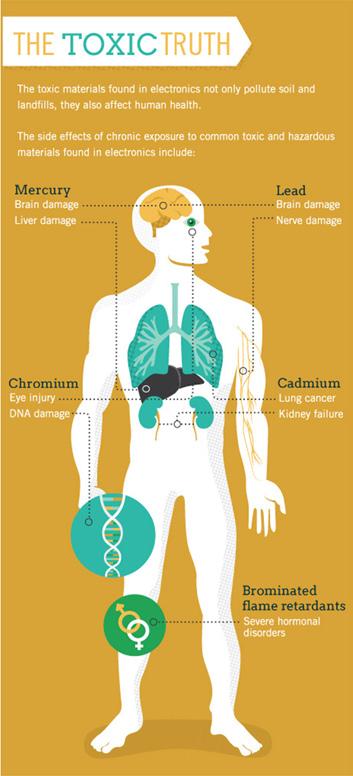
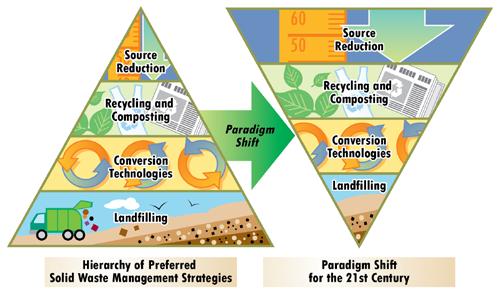
The problem is worsened by developed nations that regularly export their toxic e-waste by the tons to these developing countries who are not equipped or trained to properly handle the toxic materials. Currently, there is no legislation in the U.S. that bans such practices, but the Responsible Electronics Recycling Act has been reintroduced into Congress.
This makes it imperative to choose e-Stewards certified electronics recyclers when disposing old cell phones and other end-of-life electronic devices. e-Stewards recyclers and their downstream vendors adhere to the most stringent global standards for worker safety and environmental protection. e-Stewards certified recyclers are regularly audited to ensure no e-waste is sent to landfills or exported to developing countries. The certification also prohibits the use of slave, coerced or prison labour in the processing e-waste.
adhere: to stick firmly to something audit: to officially examine the financial accounts of a company coerced: forced by using threats stringent: very strict, what must be obeyed
Source: www.e-cycle.com
Use this information to fill in the table below.
Where?
Why?
Who?
Problem?
Methods? 1 2
Results? 1 2
Toxins? 1 2
To blame?
Solution?
b Action: use the information from the table to write a short summary on a separate piece of paper. Use your own words as much as possible.
c Reflection:
Check your text by filling in the checklist. – Then give your text to a peer who will give you some feedback. Make changes if necessary.
Finally, give your text to the teacher who will give you some feedback too.
Checklist: summary ‘e-waste’ MeClassmate
1 Preparation
• I read the text carefully and highlighted the topic sentences.
• I wrote down the main ideas from the text in the grid.
• I checked my spelling.
2 Writing
• I used the information from my preparation to summarise the text as a whole.
• I built good sentences.
• I used my own words as much as possible.
• I kept my summary to under ¼ of the original text.
3 Revising
• I let somebody else read my summary to comment on it.
• I checked my language: the grammar and vocabulary are correct.
• I used correct spelling and punctuation.
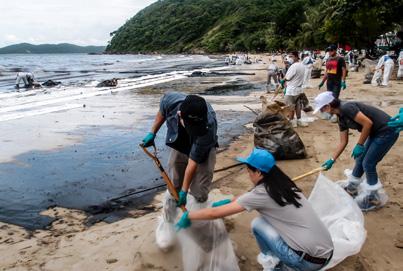



two hundred and twenty-five
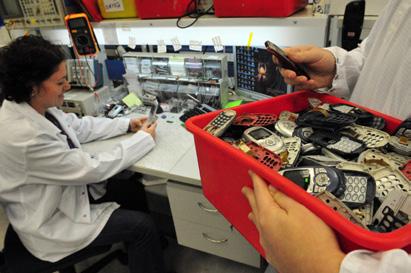
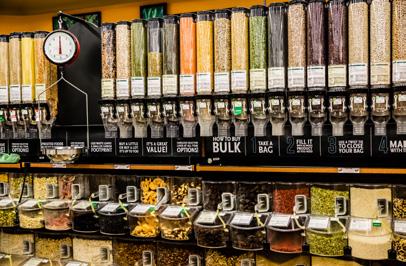
Score < 5 ≥ 5
Next exercise ex. 6
6 Watch the slam poem ‘Dear Future Generation: Sorry’ by Prince Ea.

a Indicate what he apologises for. climate change overfishing
loss of biodiversity

ozone deterioration

air pollution
melting the ice-caps
explosive population growth
deforestation
acid rain
animals’ extinction
e-waste
ocean poisoning
soil contamination
carbon footprint
palm olive plantations
energy conservation
mining
natural disasters
space debris
nuclear issues
greed
toxins
intensive farming
war
people making excuses
b Prince Ea uses powerful images by comparing nature as we know it today to what it will look like in the future. Sum up these comparisons.
c Discuss the following questions with a partner.
– How do you feel after watching the clip with the poem?
– Do you agree with Prince Ea? On which points do you agree and on which do you not?
Score Next exercise All done!
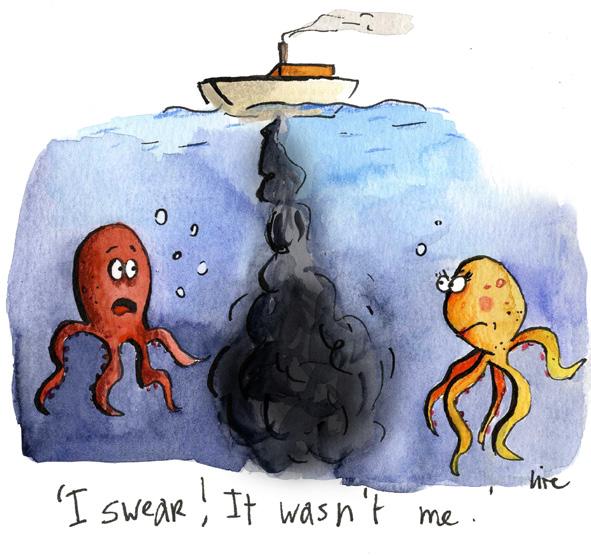
You will prepare a local environmental campaign at school, based on your beliefs and principles. You will do so by designing a poster to call for action. You will advocate for your good cause and try to convince as many people as possible.
1 Think of small, local initiatives to help the planet that you believe in.
2 Research what they stand for and how they raise money and/or awareness for the environment.
3 Write down the names of at least three local environmental initiatives below:
4 Brainstorm which local campaigns you could take part in at school that are linked to the environmental organisations of your choice. Don’t forget to hand in this brainstorm document as your plan.
5 Collect materials or ideas that you will need for your poster. Make sure that you prepare a caption for each section of your poster.
6 Organise all sections of your poster in a neat and logical way.
7 Write a caption for each of the sections.
8 Practise your speech for the gallery walk.
9 Reflect on your task by filling in the checklist.
Checklist: promoting your environmental action Yes
1 Preparation
• I read about local environmental initiatives.
• I brainstormed about which local campaigns could be held at school.
• I collected the necessary materials and ideas to make my poster.
• I rehearsed my pitch / speech several times.
2 Content
• I brought together all the different sections in a neat and logical way.
• I wrote a caption for each section.
3 Language
• I used correct and varied vocabulary.
• I used correct grammar.
• I used a first conditional to warn people.
• I used correct spelling and punctuation.
4 Presentation skills
• I spoke loudly and clearly.
• I paid attention to my pronunciation.
• I used intonation to emphasise my words.
• I used hand gestures to support my words.
• I was relaxed and confident.
Feedback
Trace your steps on diddit.
check in
main track
Step 1: discussing bias
Step
analysing infographics
Step
giving opinions about representation
trace your steps
check out: presenting the results of a survey
 2:
2:
1 Write down three things you look for in a romantic partner. Write full sentences. Then compare with a classmate.
SPOKEN
Which verb forms did you use to discuss your expectations?
2 In general, who do you feel has the highest demands? Men or women? Why? Try to find at least one good argument for your opinion.
3 Watch the video of the song ‘Lower your expectations’. What is the main idea of Bo Burnham’s song? Explain in your own words. watching
4 Watch the videos and write down the expectations for men and women.
Expectations for men
Expectations for women
watching
5 Would you change your answer to question 2? Why (not)? Discuss with a classmate and report back to the class. Pay attention to your verb forms!
SPOKEN INTERACTION
1 You will read and answer questions about an infographic.
a Before you start reading, what do you think ‘bias’ is? Try to explain in your own words.
b Now read the infographic. What is confirmation bias?
c What does ‘unconscious’ mean in this context?
d Name three strategies to reduce the effect of unconscious bias.

Influenced by 2
What is it? 1
It is the brain making judgments and decisions quickly. Sometimes called IMPLICIT BIAS.

stereotypes
socialisation culture media friends family


It happens without us being aware.
Impact 3
It IMPACTS how we value, group, treat and engage with people every day.
4
Some examples of unconscious bias

Affinity bias
= preference for people who are like me.
5
Strategies to reduce the effect of unconscious bias
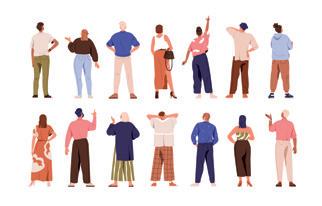



Challenge stereotypes
Confirmation bias
= more likely to look for information that confirms our own ideas. Ignore information that doesn’t.
Group think
= making decisions to keep group harmony and avoid conflict.
Notice it in others
Look for alternative points of view
Challenge assumptions
Challenge traditions
Be aware of your own unconscious bias
Spend time with people different to yourself
2 Watch the video and answer the questions.
a Describe what the people in the video have to do.
b What type of questions are being asked?
c What can you say about the people standing in the box?
3 Discuss the video.
a How does the exercise in the video help people become aware of unconscious bias and overcome it?
b Have you ever made an assumption about somebody based on their appearance only to find out it wasn’t true?
c What could be the consequences of this bias against certain people?
4 What questions do you still have regarding expectations and unconscious bias that you would like to ask your classmates? written INTERACTION
Throughout this unit you will have to formulate questions that you want to ask your fellow students. They will be about the topic that was just discussed. You will need these questions in the Check-out later! Come up with two single answer questions (multiple choice). Look at the example:
e.g. Which characteristics do you like most in a partner? honesty reliability humour
Your questions on expectations in a partner and unconscious bias:
1 What are assumptions like ‘Boys don’t cry’ called?
2 Now watch the first part of the video and answer the questions.
a Try to solve the riddle.
b Watch the answer. Did you guess correctly?
c Why do you think the people in the video didn’t get the answer right?
d What does the word gender mean? What does it involve?
3 How does this video illustrate gender bias?
a Try to formulate this in your own words using information from the previous exercises.
I think this video illustrates gender bias and I have a few reasons to think this.
First of all, Also, Moreover, For all these reasons, I feel / I’m convinced / I think / I believe that
b Share your opinion with the class. Check the Useful expressions on p. 262.
4 Read these statements and tick the box that best reflects your opinion.
Statement
1 We can never fully obtain gender equality.
2 Men are the weaker sex.
3 We are raising sexist sons and men.
4 Women should serve in the military.
5 Housewives and mothers should be paid for housework.
6 Beauty pageants for women are actually empowering and not sexist.
7 Arranged marriages are a valid way to find love.
8 A woman has the sole decision in requesting an abortion.
9 Men are more aggressive than women.
10 Men make better sportsmen.
11 Men are better at science while women are better at social sciences.
12 Female actresses / models / influencers should not use their femininity to promote themselves / their careers.
13 Working mothers hinder their children’s development.
14 Men are better in decision-making roles than women.

15 Universities need more female teachers while kindergartens need more male teachers.
16 Toys should be gender neutral (for instance dolls are for both boys and girls).
17 Women are better communicators.
18 There are ‘jobs for men’ and ‘jobs for women’.
19 Women are vainer than men.
20 Women who dress provocatively cannot complain about the extra attention they get.
5 Discuss the statements.
a Prepare your discussion:
Highlight the 3 statements you feel most strongly about.
– Think of 2 reasons for each of the statements why you think this.
– Check the useful expressions in the Summary, p. 262 on ‘How to express your opinion’ and have a discussion in your group about everyone’s highlighted statements.
b Action: follow this structure in your discussion:
1One person starts by introducing the topic of the discussion.
2Another person formulates their opinion.
3They will then provide arguments for their opinion.
- These arguments (or proofs) can be based on personal experiences or beliefs.
- Or they can quote authorities or people who are experts in the matter at hand. Expert arguments or hard data are usually considered to be more valid in a discussion.
4The other group members can then agree, disagree or partly agree. They also share their opinions, using their own arguments.
5The person who started the discussion will conclude and move on to the next statement.
c Reflect on your group discussion together with the other members of your group.
Checklist:
1 Content and structure
• We used the structure provided.
• My opinion was clear.
• I provided 2 good arguments for each statement.
• I was polite and listened to other people’s opinions.
• I had at least 5 speaking turns.
2 Content and language
• I used at different expressions to share my opinion.
• I used the correct words.
• I minded my pronunciation.
Feedback
6 Were you able to find enough valid arguments during your discussion? Let’s try that again, shall we? Watch the video on International Women’s Day history.
a Watch the clip in pairs. One of you will watch the video. Focus on the numbers below. The other will write down the answers without watching the video.
watching
b Switch during the second viewing.
century
7 Try to define the following concepts as they are explained in the video.
a Gender equality:
b Suffrage:
c Stereotype:
8 Women’s rights around the world.
a Preparation:
• Click on the interactive map for ‘Women’s rights around the world’ on diddit.
• Find a country or region in the world that violates the principles of gender equality in one or more ways. Maybe they still have laws that prove we still need International Women’s Day?

• Make sure you do your research!
b Action: collect the information you found in the table below. Discuss what you found with your classmates.
SPOKEN INTERACTION
SPOKEN INTERACTION
country
Laws that violate gender equality?
Culture / customs that violate gender equality?
Protests / actions undertaken against these violations?
Celebrity involvement / attention?
Why did you choose this country?
sources used
c Reflection: check your work by filling in the checklist.
Checklist: gender equality in different countries Yes I think so No
1 Preparation and content
• I listed at least two laws or customs.
• I provided researched information for each law / custom.
• I discussed all the information in the conversation.
• My opinion was clear.
2 Language
• I used at least 2 different expressions to share my opinion.
• I used correct and varied vocabulary.
• I used correct basic grammar.
• I paid attention my pronunciation.
Feedback
9 What questions do you still have regarding gender bias that you would like to ask your classmates? written
Throughout this unit you will have to formulate questions that you wish to ask your fellow students. They will be about the topic that was just discussed. You will need these questions in the Check-out later! Come up with three questions of which at least one uses a rating scale. Look at the example: e.g. How much do you like it that bathrooms in schools are often gender-segregated?
012345678910
Your questions on gender bias:
CHECK 1, p. 263
1 Read the blurb from the book Dear Martin written by Nic Stone. What type of book do you expect to read? READING
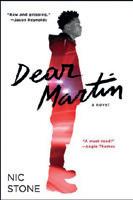
Justyce McAllister is top of his class and set for the Ivy League—but none of that matters to the police officer who just put him in handcuffs. And despite leaving his rough neighborhood behind, he can’t escape the scorn of his former peers or the ridicule of his new classmates. Justyce looks to the teachings of Dr. Martin Luther King Jr. for answers. But do they hold up anymore? He starts a journal to Dr. King to find out.
Then comes the day Justyce goes driving with his best friend, Manny, windows rolled down, music turned up—way up, sparking the fury of a white off-duty cop beside them. Words fly. Shots are fired. Justyce and Manny are caught in the crosshairs. In the media fallout, it’s Justyce who is under attack.
Source: www.goodreads.com
2 Read the extract and answer the questions.
a Who are the characters in these scenes?
b Where does this scene take place?
c Why doesn’t Justyce feel like partying?
d What about the case makes Justyce so upset?
e Justyce finally starts a fight after multiple racist incidents and remarks. List three.
f What does Justyce call Manny for not standing with him?
But Justyce doesn’t sleep. Not that night, nor the rest of the week. And it’s not just SJ.
A couple of mornings after she gives him the cold shoulder, he and the rest of the nation learn that Tavarrius Jenkins, a sixteen-year-old black kid shot by police while trying to help an older white woman in a Lexus, has died from his injuries.
[…]
He’s just managed to doze off when there’s a knock at his door, snatching him back into consciousness.
“Who is it?”
“Open the door, fool.”
Manny.
Jus forces himself out of bed and to the door. “What, dawg?” he says as he opens it.
“Hey, bruh, chill with all that attitude.” Manny pushes past him and into the room, bringing his post-basketball practice BO with him. “You sleepin’ or somethin?”
“Obviously not if I’m standin’ here talking to your stank ass. You need a shower.”
“Shut up. It’s Friday night and we got places to be. Put some clothes on and let’s go.”
Jus returns to the bed. “Sorry, dawg. I don’t really feel like goin’ nowhere tonight.”
“That wasn’t a request, Jus. Don’t think I haven’t noticed how mopey you been this week. Being alone in your current state isn’t good for your mental health, man. Blake’s birthday party is tonight, and you’re coming with me.”
“No. I’m not.”
“All right, then.” Manny pulls Jus’s desk chair over to the bed and sits down. “You wanna stay in bed? Cool. My dirty ass will be right here with you.”
“Aww, come on, Manny! Get outta here with that.” Jus pulls a pillow over his nose. Manny kicks his shoes off and tucks his hands behind his head, unleashing the full force of his funk into the room. He smirks.
Jus really can’t stand this guy sometimes. He takes a deep breath… which is a bad idea. “Damn, you stink, dawg. Fine, I’ll go.”
“Great!” Manny hops up. “I’ma go get my car from the lot. I’ll meet you downstairs in ten.”
“Yeah, all right.”
“You won’t regret it, man.” Manny walks out and leaves the door open.
Justyce really isn’t in the best headspace to be accepting the “pregame beverage” that gets shoved into his hand once they get to Manny’s basement. He’d never say it aloud, but Jus would much rather be at SJ’s watching National Geographic than here waiting for Manny to get ready. Just thinking about her is making him crazy. Before he knows it, his cup is empty and he’s reaching for the flask Manny left on the ottoman. […]
For a minute, they sit in silence, Manny doing whatever he’s doing and Jus trying to keep images of SJ out of his head. He switches gears to the other thing on his mind: “You hear about Tavarrius Jenkins?”
“The kid who got shot in Florida, right?”
“Yeah. He died yesterday.”
“Damn. That’s sad.”
“I keep thinkin’ that coulda been me. What if that cop thought I had a gun?”
“You didn’t, though.”
“Neither did Tavarrius,” Just says, feeling the anger build. “That’s exactly what I’m sayin’. Guy’s walking down the street with his boys and stops to help a lady who ran out of gas on the wrong side of town. Cops get there and tell him to put his hands up cuz they think he’s robbing her, and when he does, they open fire cuz they think his cell phone is a gun. Shit’s fucked up, man.” Jus grabs the flask again and takes a swig. “Niggas getting’ shot for carrying candy and cell phones and shit. Can you imagine what woulda happened to me if I’d had my cell phone out that night? I could be dead, dawg. And for what?” He swigs again just to feel the burn.
“Aiight, that’s enough.” Manny takes the flash back and pats Jus’s knee. “Let’s hit B’s party. You obviously need the distraction.”
Part of Justyce wants to shake Manny. Ask why he cares more about some stupid whiteboy party than he does about the unjust death of a guy who looks like him. Too bad he doesn’t have it left in him.
“Yeah, all right,” he says. “Let’s go.”
Perhaps if Justyce hadn’t downed half the liquid in Manny’s refilled flask on the way to Blake’s house, the wooden lawn jockeys with black skin and big red lips standing guard at the bottom of Blake’s porch steps wouldn’t bother him so much. There’s a good chance that if he’d “slowed down” when Manny told him to, he wouldn’t feel fury when he sees
that the wall behind the bar in Blake’s basement is lined with posters from “William H. West’s Big Minstrel Jubilee.”
But Justyce didn’t slow down. He kept drinking until Manny literally took the flask from his hand and slipped it into the driver-side door where Jus couldn’t reach it. So when the birthday boy comes running up to Manny and Justyce, Jus is ready to blow.
Manny: Happy birthday, man!
Jus: Yeah, happy birthday.
Blake: Bros! So glad y’all made it!
Manny smiles and winks at Justyce like Told you
“Yo, listen,” Blake goes on. He’s definitely been drinking too. “There’s this fine -ass black girl here from Decatur Prep, and I was thinking you guys could wingman it up for me and shit. Homegirl’s got the fattest ass I’ve ever seen, and I think if she meets my niggas, I’ll have a good chance of getting’ her upstairs. You feel me, dogs?” He nudges Jus and grins.
Manny’s smile collapses. He looks over at Justyce. Almost like he knows everything’s about to go to hell.
“Is this fool serious right now?” Jus says.
Blake looks confused.
“Jus, chill,” Manny says.
“Hell nah, I’m not ‘bouta chill. Ya boy’s got racist lawn gnomes and white people in blackface hanging on the walls, now he pulls this shit, and you want me to chill?
Blake rolls his eyes. “Dude, none of that crap is mine. My mom’s great-uncle was one of those performers, so she hung up some posters. No big deal.”
“You coming over here asking us to help you use a black girl IS a big deal, Blake. That’s not to mention you tossin’ the n-word around like you own it.”
Blake: you don’t own it any more than I do, bro. Nobody owns words. I’d think you’d know that as someone “smart enough” to get into Yale.
Manny: all right, y’all, let’s calm down before this gets outta hand.
Justyce: It’s already outta hand, Manny. Your boy Blake is a racist.
Blake: What is it with you people and the goddamn race card, huh?
Justyce: We people. You realize Manny is one of us people too, right?
Blake: Except Manny’s got some sense and doesn’t make everything about race. Why don’t you loosen the hell up?
Justyce: Too bad you weren’t around to say that to the cop who cuffed me for tryna to help my girl.
Blake: Ex-girl, you mean? Didn’t she dump your ass?
At this point, Jared and Tyler walk up, both with a red cup in one hand and a beer in the other. “Homies!” Jared says.
It just makes Justyce madder.
Jus: Man, I’m sick of y’all acting like you got all this leeway.
Jared: Wow, dude. What crawled up your ass?
Tyler: (Laughs.)
Jus: Fuck you, Jared.
Jared: Whoa, now…
Blake: Dude, don’t disrespect my bros at my party.
Manny: Jus, let’s just go.
Jus: (Points at Blake.) Watch your back, dawg.
Blake: Wait, are you threatening me?
Jared: (Laughs.) Better watch out, B. You know Justyce grew up in the hood. He’s gonna call up his gangsta homies to ride through on your ass and bust some ca—
By the time Jus is seeing colors other than red, his left hand and right jaw are throbbing, and there’s something warm running down his chin. Jared’s scrambling up from the floor with a split lip and a swelling eye, and Blake is on his hands and knees with blood pouring out of his nose and onto the carpet.
No pointed hood to stop the flow this time.
There’s a set of arms around Jus, pinning his arms to his sides. “Let me go,” he says, twisting out of the grip of whoever’s holding him.
Manny. Whose lip is bleeding too.
Tyler seems to be the only one who got away unscathed…but then Justyce sees him shake out his right hand.
Of course a crowd has gathered.
Manny: What the hell is your problem, Justyce?
Jus: Man, don’t even say nothing to me right now.
Manny draws back. “Excuse me? Don’t say nothin’ to you?”
Jus: You’re just as bad as they are.
Manny: What are you talking about? I don’t know where all this me against the world shit is comin’ from but you really need to check yourself.
Jus: These dudes disrespect you–disrespect us–all the time, and you never say anything about it. You just go along with whatever they say.
Manny: These are my friends, Jus. You’re way too sensitive, man.
Jus: Lemme guess: that’s what they said when you took offense at some racist joke, right?
Manny: Bruh, you trippin’ hard. You need to go cool off or somethin’.
Justyce shakes his head. Looks Manny over from head to toe. “You know what, Manny? You’re a sellout. Good luck at Morehouse next year.” He shoves through the crowd and makes his way to the back door with people murmuring as he goes. Just before he pulls it open, he hears, “Thanks for ruining my birthday, asshole!”
Justyce trudges up the hill. Starts walking in the direction he thinks will lead him out of Blake’s megamansion neighborhood. He’s still drunk and can’t see straight, but if he can find his way back to the main road, he can find his way back to school. He doesn’t know how long he’s been walking or how far he’s gone before a navy Range Rover pulls up beside him.
“Get in,” Manny says from inside.
“Naw, man. I’m good.”
“Jus, it’s thirty degrees and you’re going the wrong damn way. Stop being a jackass and get in the car.”
“I said no, Manny.”
“Manny’s car jerks forward and suddenly whips into Justyce’s path.
3 Read the main characters’ background. Try to match the names of the main characters to their descriptions. Choose from the box.
Blake Benson – Jared Christensen – Tyler Clepp – Justyce McAllister –Emmanuel (Manny) Rivers
is a seventeen-yearold African American boy from a ‘bad area’ in Atlanta. is an intelligent young man and a scholarship student at a prominent school called Braselton Preparatory Academy.
is a white student and one of Jared and Manny’s good friends. Unlike Jared, whose racism is often subtle (even if still hurtful), takes things extremely far, as evidenced by the fact that he wears a Ku Klux Klan outfit as a Halloween costume.
Source: LitCharts
is Justyce’s best friend, and one of the only black students at Braselton. comes from a very wealthy and successful family and, unlike Justyce, has grown up around privileged white people. He counts people like Jared among his best friends, choosing to ignore their racist comments and jokes.
is a spoiled white boy who attends Braselton. is one of Manny’s closest friends, despite the fact that he often expresses racially charged ideas and casually cracks bigoted jokes.
4 Why do you think Justyce is so mad at Manny?
is one of Jared and Manny’s white friends at Braselton. Like Blake and Jared, frequently goes along with racist jokes and ideas.
5 Read the following text and link it to the extract of Dear Martin.
a Preparation:
- Highlight words in the text that you find difficult. Only focus on the words that make it impossible for you to understand the gist of the sentence!
- Go online and look up these words. Read an example sentence.
- If you still don’t understand the word, look for a translation.
- Now go back to the text and decide which types of racism you found in the extract if you link it to the types in the text.
Racism is the form of oppression based on race. Unlike discrimination, oppression takes into account power - who is positioned to hold power and who is positioned not to hold power as a result of the ways society has been set up and functioned for generations. In other words, oppression takes into account agent and target group membership. People who identify as Black, Indigenous and People of Color are targets of racism.
INTERPERSONAL RACISMPrejudgment, bias or discrimination by a white individual toward a person of color.
INSTITUTIONAL RACISM - Policies, practices, procedures and culture of an institution or system that work better for white people and cause harm to people of color, often inadvertently or unintentionally.
STRUCTURAL RACISM - The history, culture and current reality of racism across institutions and / or systems;
when the institutional racism of multiple institutions overlaps to form a web of racism impacting people and communities of color. This includes implicit and explicit social narratives about race, such as those perpetuated by the media.
INTERNALIZED RACISM -
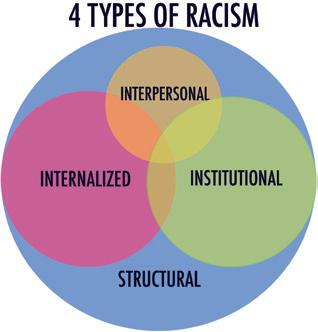
The internalization of the racist stereotypes, values, images and ideologies perpetuated by the white dominant society about oneʼs racial group (Pyke, 2010).
INTERNALIZED RACIAL INFERIORITY* - The acceptance and acting out of an inferior definition of self, rooted in the historical designation of oneʼs race. Over many generations, this process of disempowerment and disenfranchisement is expressed in self-defeating behaviors. Some examples: colorism, isolation, protectionism, addiction, self-doubt, self-hate, rage, shame, ethnocentrism, anti-Blackness, antiIndigeneity.
SUPERIORITY* - The acceptance and acting out of a superior definition of self, rooted in the historical designation of oneʼs race. Over many generations, this process of empowerment and access is expressed as unearned privileges, access to institutional power, invisible advantages and
inflated self-image based upon race. Some examples: Individualism, paternalism, comfort, control, silence, intellectualization, cognitive dissonance, anti-Blackness, antiIndigeneity.
*Definitions based on those of the Peopleʼs Institute for Survival and Beyond
Source: www.seattle.gov - © Race and Social Justice Initiative at the Seattle Office of Civil Rights
b Action: - Write down your thoughts and explain your answer using the structure below.
The first type of racism in Dear Martin is
And I have a few reasons to think this.
First of all, Also,
The second type of racism present is
The reason I believe this is
Moreover,
For all these reasons, I feel / I’m convinced / I think / I believe (choose 1 option) that
- Find a partner and share your analysis, using your text as preparation. Try not to read from the paper.
c Reflection: check your task by filling in the checklist.
Checklist: racism in Dear Martin
1 Preparation
• I looked up words I didn’t understand.
2 Content and structure
• I listed at least two forms of racism.
• I provided good arguments for my analysis.
• I didn’t read from my paper.
3 Language
• I used correct and varied vocabulary.
• I used correct basic grammar.
• I paid attention to my pronunciation.
Feedback
1 Watch the videos and answer the questions.
a What are the kids watching?
b What are the kids’ reactions?
c Why are the kids so surprised?
Yes I think so No
d What word is meant with the following phrases?
• something that shows or describes something’
• ‘ the action of speaking or acting on behalf of someone’
• an artistic likeness or image’
2 Discuss the following questions. Then report to the class.
a Do you feel you see a lot of characters on TV, in films or series that you can relate to? Why (not)? Give some examples.
b Why is it important to see characters that are relatable to you in the media?
watching
3 Watch the video about representation and answer the questions.


a Why does representation matter to these students?


StudentNameReasons representation matters to them

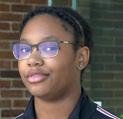



b List the characters that are mentioned or shown in the video. Do all teens consider these to be positive representation?
4 What about you? (Why) do you feel representation matters?
a Turn your thoughts on representation into a caption starting with: Representation matters because
b Spread the word.
1 Option A: When you have completed your caption turn it into an attractive poster to decorate the classroom or the school bulletin board. Add some (blank) post-its and ask other students to complete the sentence ‘Representation matters because …’ and hang the post-its on the board too.
2 Option B: Turn your caption into an Instagram or Facebook post or story and post it on the school’s page (or create a page). Ask your fellow students to complete the sentence ‘Representation matters because …’ in the comments!
5 What questions do you still have regarding representation, racial bias or colourism that you would like to ask your classmates?
Throughout this unit you will have to formulate questions that you wish to ask your fellow students. They will be about the topic that was just discussed. You will need these questions in the Check-out later! Come up with three questions of which at least one uses a so-called ‘Likert’ scale. Look at the examples:
e.g. How much impact does working for school have on your free time? no impact I no longer have free time
e.g. How often do you see people like you on television? never all the time




Your questions on racial bias and representation:

1 You will get a few infographics and one-pagers from your teacher. Answer these general questions about them.
a What are the topics of these texts?
b What goal(s) do these text have? Tick the correct box(es). To inform the reader. To tell a story to the reader. To convince the reader of something. To tell the reader to do something.
c Why is this so important? Tick the reason(s) that is / are most important in your opinion. Because very often people don’t support something or even oppose something because they don’t fully understand it.
Some people don’t want to learn anything new and that is why we use infographics to force them to inform themselves. It may scare them or confuse them. That is why informing people is the most important step towards convincing them.
d How long are the one-pagers? And what about the infographics?
2 Look at the text of the infographics and one-pagers in more detail. Indicate the correct statements. Try to correct the statements that are false.
1 Infographics and one-pagers have a lot of text.
2 The data in the infographics are the foundation of the infographic. Sources should be reliable.
3 The text on the infographic is all relevant to the topic.
4 Good infographics use a couple of power words throughout: short and punchy.
Statement
5 The structure of the infographics jumps from one thing to the next, without much cohesion.
3 Infographics and one-pagers also use several visual techniques to convince people of their cause.
a Decide if the statements and techniques are true or false by examining the infographics and one-pagers.
b Give a few examples from the infographics and one-pagers.
Statement
How do they use numbers?
1 Numbers are used as eye catchers.
2 It is more difficult to read a numeral than a fully written out number.
3 Numbers are often based on research or statistics.
4 Numbers are often presented in percentages or fractions to stress the difference between opposite parties, genders, countries …
Examples:
How do they use colours?
1 Colours make the infographic or one-pager look lively and interesting. If you don’t use colour it will get boring quickly.
2 Colour can be used to underline difference and similarities in the information.
3 The more colour you use, the clearer your one-pager will be.
4 Most good one-pagers choose a colour scheme (like in a paint store) and stick to those colours to keep it coherent.
Examples:
How do they use images, icons and pictograms?
1 It doesn’t matter what image you use.
2 When the images are relevant, readers spend more time looking at the images than they do reading the text on the page.
3 Icons and pictograms don’t have to match the text. They are 2 separate things.
4 Use many different icon styles.
5 Instead of typing out each of the names in a list or chart, you can use pictograms.
6 Replace the numbers or points in your list with pictograms to communicate more effectively.
7 You can also use icons in your headers to illustrate the main idea of your one-pager.
Examples:
How do they use lettering?
1 Use different lettering and types to separate the titles and text.
2 Bigger is always better when it comes to lettering!
3 The content is the most important part of your one-pager. Don’t overdesign!
4 Don’t use too many different lettering types or it will look messy.
Examples:
4 Use the information you gathered in questions 1 to 3 to complete these tips for writing good infographics and one-pagers.
CONTENT AND STRUCTURE
1 Length
2 Text
3 Data VISUALS
4 Numbers
5 Colours
READING
6 Imagery, icons and pictograms
5 Numbers are the most important part of the infographic. Look at the grammar box on ‘How to report data’ and complete it with the options in the box below.
1/3 – 3 quarters – 75% – 75 out of 100 – 75 per cent – almost – nearly – one in three (1 in 3) –one third – plural verb – singular verb
1/ Specific or general?
– If you want to be very specific, you can use the actual numbers of your research.
e.g. women still end up in the 5 C’s of employment.
– If you want to make your results sound more general, use fractions
e.g. In 2017 women accounted for fewer than speaking roles in the year’s top films.
One in three speaking roles were for women = of speaking roles =
= a third of 3 in 4 women end up in the 5 C’s of employment = 3/4 of all women = of women
Or you can use percentages:
e.g. 75 out of 100 women still end up in the 5 C’s of employment = of all women = of all women
Tip!
Change the way you present numbers to suit the style of your infographic or introduce variety Round off numbers:
• Only 14% of rape cases that have been reported to the police ended in an arrest.
= a little under 15%
= nearly / 15%
• Only 6% of physicians and surgeons are black Americans.
= a little over 5%
= more than 5%
• 72% of women have been cat-called on a night out.
= a little more than 70%
= more than 7 out of 10
= 3 quarters.
2/ Subject-verb agreement
Fractions (e.g. 1/3 ), percentages (%) and other parts of a whole follow normal countable / uncountable rules. The verb agrees with the preceding noun or clause that serves as the subject.
With a singular or uncountable noun, use a :
e.g. One third of the study seems irrelevant.
Fifty per cent of the article is untrue. All the information is from 2018.
None of it is the same.
With a plural noun, use a :
e.g. Six out of ten (60%) LGBT students feel unsafe at school because of their sexual orientation.
72% of the Oscar voters are male.
After a collective noun (which stands for a group of people, e.g. group, team), you can either use a singular or a plural verb, depending on whether you want to emphasise the single group or its individual members:
e.g. 25 per cent of white Americans has / have a degree. See
6 Now fill in the correct numbers in the following sentences. You will find the correct answers in the infographics. Try to rephrase or vary the numbers if you can.
1 of heterosexual women have experienced rape, physical violence and / or stalking by an intimate partner.
2 women who have started their own business know someone else who has done so.
3 of men think women shouldn’t be soldiers.
4 of homeless LGBT youth is forced out of their home by their parents.
5 of rape / sexual assault victims do not report their victimization to the police.
6 In the teaching industry, 68% of the employees are women and only are men.
7 of LGTB students hear homophobic remarks every day.
8 In 2017 of speaking characters in the top 100 films were people of color.
9 of LGBT students have reported they don’t feel safe in gym class.

10 Only of male actors get partially naked, of female actors do.
7 Read the following text. What do you need to do if you want to make it into an infographic?
a Highlight the numbers you could use in the infographic.
b Put the numbers in the table below and rewrite them in a different way.
Number Can also be written as e.g. 12% about 1 in 10 / little over 1 out of 10
c Circle the words you would use as titles or headlines.
d Underline the main ideas you would put in the infographic.
e What colour scheme would you use?
f What imagery would you chose?
LGBTQ representation on US broadcast TV has reached a record high, rising to almost 12% of characters scheduled to appear on primetime scripted shows in the upcoming season, according to a new report from media monitor GLAAD.
GLAAD’s 17th annual Where We Are On TV report was released today, covering shows which premiered or are expected to return between 1 June, 2021 and 31 May, 2022.
The report analysed the overall diversity of primetime scripted series regulars on broadcast networks and assessed the number of LGBTQ regular and recurring characters on primetime scripted cable programming and original scripted streaming series on the services Amazon Prime Video, Apple TV+, Disney+, HBO Max, Hulu, Netflix, Paramount+, and Peacock.
This year’s study found that of the 775 series regular characters scheduled to appear on scripted broadcast primetime programming for the 2021-2022 season, 92 characters (11.9%) are LGBTQ. This is an increase of 2.8% from the previous year and marks a new record high percentage of LGBTQ series regulars on broadcast.
There are an additional 49 LGBTQ recurring characters on the platform for a total of 141 LGBTQ characters on broadcast.
For the first time in the report’s history, lesbian characters represented the majority of the LGBTQ characters on broadcast at 40% (56 characters), up 6% from last year. Gay men make up 35% (49 characters), a decrease of 5% from last year. Bisexual+ representation, which had been on the decline the last two years, increased very slightly to 19% (27) of regular and recurring broadcast LGBTQ characters.
The racial diversity of LGBTQ characters was meanwhile found to be up on broadcast and streaming, but down on cable.
For a fourth year in a row, LGBTQ people of color (58%) outweighed white LGBTQ people on broadcast, continuing to meet GLAAD’s previous challenge in this area. After meeting and surpassing the challenge last year, representation of LGBTQ

people of color on cable decreased this year to 45%. Representation of LGBTQ people of color on streaming increased to 49%.
This year’s report also recorded 42 regular and recurring transgender characters tracked across all three platforms (broadcast, cable, and streaming), up from 29 last year. Of those, 20 are trans women, 14 are trans men, and eight are non-binary trans characters. These characters appear across 25 dramas and 11 comedies. There are a further 17 characters who are non-binary and not trans.
GLAAD meanwhile counted only two characters who are living with HIV. This marks a decrease from the previous year’s three characters (all of whom appeared on FX’s Pose), and a significant decrease from the nine characters tallied in the study prior to that. Both characters counted this year are recurring, Michael in Netflix’s Dear White People and Sai in NBC’s Ordinary Joe
This marks the 26th year that GLAAD has tracked the presence of LGBTQ characters on television, and the 17th edition of the Where We Are on TV report.
‘The growing state of LGBTQ representation on television is a signal that Hollywood is truly starting to recognize the power of telling LGBTQ stories that audiences around the world connect with,’ commented GLAAD president & CEO Sarah Kate Ellis. ‘At a time when anti-LGBTQ legislation and violence continues to increase, it is cultural institutions like television that take on the crucial role of changing hearts and minds through diverse and inclusive storytelling.’
‘Networks and platforms must continue to prioritize telling LGBTQ stories that have been long overlooked, with a specific focus on the trans community, LGBTQ people of color, people living with HIV, and LGBTQ people with disabilities.’
Source: Digital TV Europe
8 What questions do you still have regarding LGBTQIA+ representation that you would like to ask your classmates?
Throughout this unit you will have to formulate questions that you wish to ask your fellow students. They will be about the topic that was just discussed. You will need these questions in the Check-out later! Come up with three questions of which at least one is an open-ended question. Look at the example: e.g. How do you prepare for the exams?
Your questions on LGBTQIA+ representation:
Almost 1 in five men think women shouldn’t be soldiers.
A little over one third of heterosexual women have experienced violence by an intimate partner.
Nearly 70% of the employees in education are women.
Almost all (98.9%) of Academy Award winners for Best Actress have been white.
8 in 10 trans students have reported they feel unsafe at school.
Half of trans people have been assaulted by a romantic partner.
A mere 6% of surgeons and physicians in America are black.
If you want to be very specific, you can use the actual numbers of your research.
e.g. 75 out of 100 women still end up in the 5 C’s of employment.
– If you want to make your results sound more general, use fractions
e.g. One in three speaking roles were for women. = 1/3 of speaking roles = one third = a third of 3 in 4 women end up in the 5 C’s of employment. = 3 out of 4 = 3 quarters of women

Or you can use percentages:
e.g. 75 per cent of all women end up in the 5 C’s of employment. = 75% of all women end up in the 5 C’s of employment
Percentage
FractionIn words
10% (10 per cent)1/10 one tenth – one in ten – one out of ten
25% (25 per cent)1/4 a quarter – one quarter
33% 1/3 one in three – a third – one third
50% 1/2 (one) half (of) – five in ten
66% 2/3 two in three – two out of three – two thirds
75% 3/4 three in four – three out of four – three quarters
Fractions (e.g. 1/3 ), percentages (%) and other parts of a whole follow normal countable / uncountable rules. The verb agrees with the preceding noun or clause that serves as the subject.
– With a singular or uncountable noun, use a singular verb:
e.g. One third of the study seems irrelevant.
Fifty per cent of the article is untrue.
All the information is from 2018.
None of it is the same.
– With a plural noun, use a plural verb:
e.g. Six out of ten (60%) LGBT students feel unsafe at school because of their sexual orientation.
72% of the Oscar voters are male.
– After a collective noun (which stands for a group of people, e.g. group, team), you can either use a singular or a plural verb, depending on whether you want to emphasise the single group or its individual members:
e.g. 25 per cent of white Americans has / have a degree.
Word Translation
My notes to account for verantwoorden, verklaren to affect beïnvloeden affinity aantrekkingskracht, natuurlijke interesse assumption aanname, vooroordeel beauty pageant schoonheidswedstrijd bias vooroordeel to challenge uitdagen, aanvechten confirmation bevestiging to depict afbeelden disingenuous onoprecht, hypocriet to empower versterken, kracht geven ethnic etnisch, betrekking hebbend op een volk, erfgoedkundig
feminism beweging die ervoor vecht dat vrouwen dezelfde rechten en mogelijkheden als mannen krijgen
de kenmerken die cultureel, maatschappelijk of sociaal gezien worden als mannenmannelijkheid, of vrouwenvrouwelijkheid; in tegenstelling tot de biologische verschillen to hinder belemmeren to impact invloed hebben op included inbegrepen
gender
institutional door organisaties geregeld en beheerd
internalised deel van jezelf geworden interpersonal te maken met de onderlinge relatie tussen personen to obtain verkrijgen to oppose tegengaan
overcompensating (iets ongunstigs) overdreven aanvullen (met iets goeds) portrayal voorstelling, afbeelding
Word Translation
proportional in verhouding, evenredig verdeeld
regulate reguleren
My notes
als iets of iemand herkend kan worden in jezelf of je eigen ervaringen
relatable
representation vertegenwoordiging to request verzoeken
self-esteem eigenwaarde
sexist
iemand die discrimineert op grond van geslacht
sole enige
suffrage
kiesrecht
unconscious onbewust
vain
ijdel
to violate schenden, overtreden
1 Formulating your opinion
As far as I’m concerned, women and men have equal rights in this day and age.'
In my opinion / view ...
Generally speaking, I think ... To my mind ...




I’m quite convinced that ...
To be quite honest / frank ...
If you ask me ... The way I see it …
2 Agreeing
' I couldn’t agree more, there is hardly any difference anymore.'
You're absolutely right. Yes, I agree. That's a good point. I don't think so either.
I agree with you entirely. That's just what I was thinking.
3 Disagreeing
' I’m afraid I have to disagree with you. Lots of women in the world don’t have any rights at all.'

I don't agree with you. However …
That's not entirely true. On the contrary … I'm sorry to disagree with you, but … I'm afraid I have to disagree. I'm not so sure about that.
4 Partly agreeing
That’s partly true, but surely not in Western and most European countries!'
I agree up to a point, but ... I see your point, but ... Although you are right about …, I think … I'm not so sure about that.
5 Closing the discussion
' I think we’re going to have to agree to disagree on this matter.'
Let's just move on, shall we? Let's drop it.
and International
Subtotal / 10
b Now read the article about International Women’s Day and answer the questions.

1 When is International Women’s Day?
2 Where are the writers from?
3 Do the writers of the article really think there is no more need for an international women’s day?
READING
4 What is the type of humour the authors use to make their point?
This morning, a man named David Spencer was seen by several witnesses at Central Station at approximately 8:43 a.m., scrolling through his phone as he boarded the train. With no warning, his Facebook feed alerted him that today, the 8th of March, is international Women’s Day. Spencer was overheard scoffing in the direction of no one in particular, ‘Pfft – why the hell do we need an International Women’s Day? I’m not sexist.’
Indeed, Spencer has a ‘soft spot’ for women.
Research reveals that his mother was, and continues to be a woman. His grandmother was a female too, and Spencer liked her very much. He married a woman, who he sleeps in the same bed with every night. Spencer is a father to two daughters, who he loves more than anything in the world. As onlookers considered Spencer’s remark, the tide began to change.
One 22-year-old woman was heard muttering to herself, ‘He’s right… it’s the 21st century. I can do what I like.’ A 41-year-old man nodded vigorously in agreement, and a group of high school children started a slow clap.
You see, what we’re all so afraid to say is that; Spencer is right. Why would the world Spencer lives in, in a country where we had a female Prime Minister that one time, and in a state where women got to vote more than a century ago, still need a goddamn international women’s day?
The whole concept is as absurd as it is outdated. In the 21st century, the day is more or less about a bunch of angry feminists making a fuss. Women love making a fuss.
So, here’s to the Spencers, who find this day entirely unnecessary.
IT’S THE 21ST CENTURY AND WOMEN CAN READ AND WRITE. All except 493 million of them.
IT’S THE 21ST CENTURY AND ALL WOMEN ARE ENTITLED TO BASIC HUMAN RIGHTS. All except the 20 million trafficked women and children worldwide, 98 per cent of whom are female. In the 21st century, sex trafficking is the fastest growing criminal enterprise in the world.
IT’S THE 21ST CENTURY AND WOMEN ARE PROTECTED UNDER LAW. All except the 603 million women who live in parts of the world where domestic violence is not considered a crime.
IT’S THE 21ST CENTURY AND ARRANGED MARRIAGES ARE A THING OF THE PAST. For all except the one in five who are forced into marriage before the age of 18. That’s 60 million child brides.
IT’S THE 21ST CENTURY AND WOMEN ARE SAFE. All except the one in three women worldwide who have experienced physical or sexual violence at the hands of their partners in their lifetimes.
Women aged between 15 and 44 are more at risk from rape and domestic violence than from cancer, car accidents, war, malaria, or any other preventable health issue.
IT’S THE 21ST CENTURY AND WOMEN HAVE CONTROL OF THEIR OWN FINANCES. All except the 1.7 billion women worldwide who don’t have their own bank account.
IT’S THE 21ST CENTURY AND WOMEN RUN THE WORLD. Except that they don’t. Only one in ten world leaders are women.
IT’S THE 21ST CENTURY AND A WOMAN CAN RUN FOR PRESIDENT. She just can’t become one.
IT’S THE 21ST CENTURY AND WOMEN HAVE OWNERSHIP OF THEIR BODIES.
All except the 37 per cent of women in the world who don’t have any access, whatsoever, to contraception. Or the 20 million women who will undergo an unsafe abortion this year.
IT’S THE 21ST CENTURY AND CHILDBIRTH IS MEDICALIZED AND LOW-RISK.
All except the 250,000 maternal deaths and 1.7 million new-born deaths that could be avoided if basic family planning and health services were met.
IT’S THE 21ST CENTURY AND MEN AND WOMEN IN DEVELOPED COUNTRIES LIKE AUSTRALIA ARE ABSOLUTELY EQUAL.
Except in regards to pay, domestic and childcare duties, leadership, and political representation. Of 29 Prime Ministers throughout Australian history, we’ve had only one female.
IT’S THE 21ST CENTURY AND WOMEN IN AUSTRALIA COMPRISE ALMOST HALF THE WORKFORCE.
Except to earn the same as her male counterparts – she just has to work a little bit of overtime; 66 days or 528 hours over a year. Which is lucky, because women have lots of spare time given they do twice the housework, and twice as much childcare, as men.
IT’S THE 21ST CENTURY AND A WOMAN CAN BE A CEO.
Except in Australia she only holds 14.2 per cent of chair positions, and represents only 15.4 per cent of CEO’s.
IT’S THE 21ST CENTURY AND WOMEN ARE STRONG AND INDEPENDENT. Except the leading cause of preventable death amongst young women is domestic violence. One woman is murdered every week by her current or former partner.
IT’S THE 21ST CENTURY AND WOMEN ARE SEXUALLY LIBERATED.
Except one in five Australian women have been the victims of sexual violence – some of the highest rates of reported sexual assault in the world. According to one survey, Australia is at double the global average.
It’s the 21st century and the David Spencers of the world don’t think we need an International Women’s Day. And to them we say thank you.
Because they remind us year in and year out, why International Women’s Day is so incredibly important.
Source: www.mamamia.com.au
Subtotal / 4
approximately: almost CEO: chief executive officer, boss comprise: make up, consist of domestic: household, private entitled: hold the right to, allowed fuss: disturbance, trouble onlookers: person observing an event ownership: control, property preventable: could be avoided tide: stream, flow, current to mutter: mumble, complain to scoff: react sarcastically vigorously: energetically, actively
c Finally, write your opinion about International Women’s Day below. Use arguments from the video and the text you read in your opinion.
I think / I prefer / I (don’t) believe / in my opinion / I know I have a few arguments to support this opinion.
For all the reasons above I feel, I’m convinced, I think, I believe that
d Reflection: check your text by filling in this checklist. Give your text to a partner who will give you some feedback too.
Checklist: writing your opinion Yes I think soNo
1 Preparation
• I watched the video about 100 women and added the correct information to the numbers.
• I read the text about International Women’s Day and answered the questions correctly.
• I selected good arguments from the video and the text.
2 Content and structure
• I wrote about 75 words.
• My opinion was clear.
• I provided 4 good arguments based on real data (video, text).

‘We (don't) need International Women’s Day in the 21st century.’
3 Language
• I used at least 3 useful expressions or linking words to share my opinion (formulating, concluding, etc.).
• I used correct grammar.
• I used the correct words.
• I used correct spelling and punctuation.
Feedback
Subtotal / 10
Score < 17 ≥ 17
Next exercise ex. 2 ex. 3
2 Do we need an International Men’s Day?
a Preparation: read the text about International Men’s Day and answer the questions.
– When is International Men’s Day?
Highlight the topics that are also part of International Women’s Day.
International Men’s Day is annually held on November 19 to improve gender relations and promote unity.

International Men’s Day is a time for many people to reflect on the contributions, sacrifices and progress made by men in society. Such progress includes that of men working together with women to make educational, economic, social, and technological advances in society. Topics that may be discussed on the day may include:
• Men’s and boys’ health: Men’s health is worse than women’s in almost every part of the world. Recent World Health Organisation (WHO) data shows that, globally, male life expectancy at birth in 2015 was 69 years; for females, it was 74 years. Women on a worldwide basis live 5 years longer than men. We know that over 95% of work place fatalities are men and that 99% of combat deaths are men. We also know that in almost all the countries of the world the suicide rate is worse for men than women and averaged out, the rate of suicide for men is up to three times that of women. In Russia it is 6 men for every 1 woman.
• The importance of gender equality: Most people know that men suffer unfair discrimination in family law in most countries of the world and in western nations.
• Men and boys are dropping behind in school and university.
• Improvements towards gender relations in all societies.
• Positive male role models for younger generations.
• Men’s roles in community, family, relationships and childcare.
• Healing and forgiveness.
Men make sacrifices every day in their place of work, in their role as husbands and fathers, for their families, for their friends, for their communities and for their nation. International Men’s Day is an opportunity for people everywhere to appreciate and celebrate the men in their lives and the contribution they make to society for the greater good of all.
Adapted from: www. internationalmensday.com and www. timeanddate.com

b Action: use the information from the article, and what you know about International Women’s Day to write down your opinion about the following statement: ‘We (don’t) need an International Men’s Day.’ Write about 75 words. Make sure that you:
introduce the topic;
– formulate your opinion;
– give at least 3 arguments;
conclude your text.
I have a few arguments to support this opinion. First of all, Also, Another argument is Moreover, For all the reasons above I feel, I’m convinced, I think, I believe that
We (don't) need an International Men's Day.
I think / I prefer / I (don’t) believe / in my opinion / I know
c Reflect on your text by filling in the checklist.
Checklist: writing your opinion
1 Content and structure
• I wrote about 75 words.
• My text has a good structure.
Yes I think soNo
• My opinion was clear.
• I provided 3 good arguments.
2 Language
• I used at least 3 of the useful expressions to share my opinion (formulating, concluding, etc.).
• I used correct grammar.
• I used the correct words.
• I used correct spelling and punctuation.
Feedback
Score < 8 ≥ 8
Next exercise Check 2, p. 270
3 Watch the following interview with Leyla Hussein.
a Preparation: answer the questions about the video.
1 Who is Leyla Hussein?
2 What is ‘gudniin’?
3 How old was Leyla when she was cut?
4 What is the goal of this practice according to Leyla Hussein?
5 How does Leyla think we will end FGM?
b Action: write a letter to Leyla and tell her how you feel after watching her interview. Include at least three of the following questions in your letter:
• What did you discover in this interview? What is new knowledge to you?
• Describe a moment that you found particularly disturbing or moving. What was it about that scene that was especially compelling for you?
• If you could ask Leyla a single question, what would you want to know?
• What did you learn from this interview that you wish everyone knew? What would change if everyone knew about it?
watching written INTERACTION
©VANIN
c Reflection: reflect on your text by filling in the checklist.
Checklist: writing your opinion
1 Content and structure
• I wrote about 75 words.
• My text has a good structure.
• My opinion was clear.
• I answered at least 3 questions in my letter.
2 Language
• I used at least 3 of the useful expressions to share my opinion (formulating, concluding, etc.).
• I used correct grammar.
• I used the correct words.
• I used correct spelling and punctuation.
Feedback
Score < 11
Next exercise ex. 2
≥ 11
Check 2, p. 270
1 Watch the video about unconscious bias and answer the questions.
Yes I think soNo
watching
a How did orchestras in the US increase the female number of musicians?
b How do we avoid bias in our workplace? Discuss two techniques.
•
•
c What is meant by the expression ‘low hanging fruit’? achieving a result with little effort time to harvest the fruit achieving result with a lot of effort not being able to achieve the result
d What was the result of having 1/3 of the seats reserved for women in local governments? Discuss at least 2 results.
e How did Harvard University contribute?
f What can you do today?
Subtotal / 8
g Now it’s up to you! What about the school setting?
• Preparation: think about the following questions:
- Have you experienced bias at school?
- If so, what was this based on (check the video). If not, have you seen it happen to other people at school?
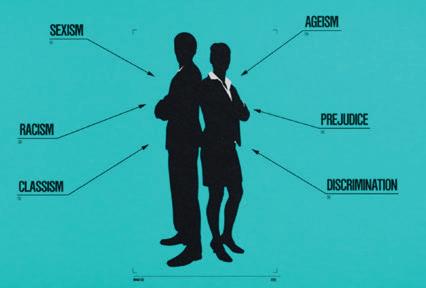
- Think of at least 3 suggestions for removing bias from the school.
• Action: write about your experience and suggestions below. Write about 75 words.
• Reflect on your text by filling in the checklist below.
Checklist: de-bias the school Yes I think soNo
1 Content and structure
• I listed at least three suggestions for removing bias from the school.
• I wrote about 75 words.
2 Language
• I used correct and varied vocabulary.
• I used correct basic grammar.
• I used correct spelling and punctuation.
Subtotal / 10
Score < 13
≥ 13
Next exercise ex. 2 ex. 3
2 Read the interview with Jason Reynolds, creator of Spider Man’s Miles Morales. Then answer the questions.
a Match the questions to the correct answers in the text.
A When you set out to write Miles Morales as a character and the overall arc of the novel, what message did you want to send to the reader?
B What strengths did you draw upon from your own life when crafting the novel?
C What is the most appealing aspect of Miles Morales the character? What is the most misunderstood aspect about him?
D We live in a world where some people don’t believe race affects a person. Do you feel the character and the novel speaks directly to African American and Hispanic communities or is his life and the novel’s message universal?
E Miles Morales is a very complicated character. Did that hinder your writing or allow for more creativity to develop?
F Is there a villain from the Marvel Universe you would love to see Miles Morales face?
G Did you write with the intent to make people understand what’s it’s like to be an African American / Puerto Rican male in America today?
H Are there any sequels planned in the future?
b Besides the racial theme of the novel / movie, there is also a universal theme that speaks to everyone. Which theme?
READING
c How does Miles represent Jason Reynolds himself?

 by Dana Abercrombie
by Dana Abercrombie
Crafted by the award-winning writer Jason Reynolds, Miles Morales: A SpiderMan Novel lets the author depict Marvel’s most exciting Spider-Man in a new light. Drawing from his experience as a person of color growing up in urban America, Reynolds was often frustrated with the lack of African American superheroes in literature, especially in young adult fiction. This is his way of creating something for young ones who are growing up in an environment similar to his own.
I’m very careful about trying to send specific messages in my work. That’s not to say they’re void of message, but I just don’t want to be too didactic. If there’s anything to take from this book, it’s that the superpowers Miles possesses as Spider-Man are nothing compared to the intrinsic superpowers he already had — will, integrity, and mental fortitude. We all have superpowers, whether you have a spider suit or not.
The most appealing part of Miles, to me, is everything outside of him being SpiderMan. His family, and neighborhood. His friendship with Ganke and Alicia. The jokes and textures. The most misunderstood aspect of him… hmmm. Good question. I guess, people will read this and think Miles doesn’t want to be Spider-Man. But he does. He just doesn’t know if he CAN be Spider-Man. And that’s less about his willingness and more about his insecurity rooted in all kinds of external factors, from family to school to society.
3
A lot of it. Much of this is me in a spidey suit. The way Miles’s parents talk. The way he relates to Ganke. The barbershop (yes… I go to the barbershop sometimes!) All that’s me. And also the idea that I’m not sure I’m cut out to be something that I am… like being a writer… that’s me, too.
4
Both. I think there are elements that speak directly to the EXPERIENCE of some folks of color, but even in that, those elements are speaking TO the larger audience. Issues around race are never about the those of us affected by it. It’s about those of us not affected, and about macro and micro levels of accountability and acknowledgment. But besides the racial undertones, there’s also the universal theme of fighting for what’s right, even when you’re uncomfortable. Even when there are consequences.
5
Not necessarily. I think more important than trying to get people to understand, I just wanted to authentically serve the story. This is who Miles is. Black, Puerto Rican, Brooklynite, with a family who has a complicated past. I didn’t make that up, Marvel did. So what I had to do was really show what all those elements mean. It would’ve been lazy and disingenuous to take the information given, and pretend it holds no bearing on who Miles is and how he maneuvers through the world.
6
Oh, it was a dream. Complexity is normal. What’s more human than messiness? All the layers of Miles gave me space to explore and really push the plot further than I could’ve if he was one-dimensional.
7 Venom. It would just be classic. Or… Magneto. 8
I have no idea. We’ll see!
Source: www.redital.com
d How is it said in the text? Choose from the underlined words in the text.
1 to not be relevant to something, or to have no influence on it
2 strength of mind; guts
3 educational
4 something that you say or do in order to show that you accept that something exists or is true
5 insincere, deceitful
6 responsibility
7 without, unoccupied, lacking
8 native, innate, natural, true
9 a series of tactical exercises usually carried out in the field by large bodies of troops in simulating the conditions of war.
10 attractive
Score < 14 ≥ 14
Next exercise Check 3, p. 277
3 Watch the video about the Model Minority Trope. Then answer the questions.
a How would you describe the Model Minority Trope in your own words? Start by looking up the following words:
Minority = Trope =
My definition =
watching
©VANIN
c Read these consequences of the model minority trope and rephrase them in your own words. Use an online dictionary if necessary. It diminishes the nuanced realities of people’s individual lives. Sets expectations that can lead to further disadvantages and discrimination.
d Highlight the most common identifiers of the model minority. admirable lacks ambition sexy classic nerds language nerd smart driven loud socially awkward exceedingly polite not family oriented stiff extrovert obstinate submissive good at math outgoing virtuous high IQs self-reliant walking textbooks
e Why are model minority characters relegated to supporting roles?
f What is yellow peril?
g How did William Peterson popularise the model minority concept further? And how was it harmful for other racial groups?
h What is a ‘bamboo ceiling’?
i Why is the model minority trope seen as progressive evidence of how far America has come from the early years of discrimination?
j What happened in August 2018?
k Why is it so important that we see the character of Devi in Never have I ever go to therapy?
l Why were actresses Aquafina and Ali Wong criticised for breaking the model minority stereotype?
m How many Asian Americans are represented on screen in leading roles? Score < 16 ≥ 16
Next exercise ex. 2 Check 3, p. 277
1 You will get 2 infographics.
a Preparation: analyse the infographics using the tips in the grid below. CONTENT AND STRUCTURE
b Action: based on your findings, which of these infographics is the most successful? Write down your opinion (about 70 words) and provide at least 3 good arguments.
c Reflect on your text by filling in the checklist.

Checklist: giving your opinion Yes I think soNo
1 Content and structure
• I wrote about 70 words.
• My opinion is clear.
• I gave 3 good arguments.
2 Language
• I used expressions to share my opinion correctly.
• I used correct grammar and vocabulary.
• I used correct spelling and punctuation.
Feedback
Score < 12
≥ 12
Next exercise ex. 2 ex. 3
2 Study the following infographic about maternal mortality. Decide if the statements are true or false. Correct the false statements.
1 Maternal mortality rate fell 2.7% since 2005.
2 Major causes of maternal deaths are abortion complications and hypertension.

3 137 countries have experienced accelerated declines in maternal mortality since 2003.
4 Only 0.4% of maternal mortality was caused by HIV in 2013.
5 7 countries are on track to meet the MDG 5 goals of one third reduction in maternal mortality.
6 Preventing malaria and reducing unsafe abortions are two ways of improving maternal health.
7 There was an annual decrease in the maternal mortality ration of 11% since 1992 in East Asian countries.
8 7.9 per cent of global maternal deaths in 2013 were caused by sepsis.

3 Look at the infographic in exercise 2. Imagine you have to present this infographic.
a First prepare your speech by writing the text in which you present your findings. Use this writing frame to structure your answer. This infographic is on the subject of
A number of facts are very interesting, for example [add your own ideas – at least 2]
In conclusion, we can see that
b Action: present your findings to your group.
c Reflect on your presentation by filling in the checklist.
Checklist: giving your opinion
1 Preparation and content
• I prepared my text in writing first.
• I checked the data in the infographic.
2 Language
• I talked fluently.
• I used structural markers in my speech.
• I minded my pronunciation.
Feedback
Score
Next exercise ex. 2 All done!
Yes I think soNo
You will create an infographic based on a survey taken by your fellow students. You will use the data you gathered and turn it into an infographic.
1 Form groups.
2 Go back through the unit and collect all the questions you wrote down in the ‘Wouldn’t you like to know?’ boxes.
- Read each other’s questions. Decide on the questions that will be in your survey. Make sure you have at least 15 questions. Add other questions or change the question type if necessary.
- Make sure to include some general questions such as: gender, age, ethnicity, … so you have a better idea about the people filling out your survey. Don’t ask for people’s names!
3 Make your survey. - What platform will you use?
- Give people enough time to fill in the survey.
4 Analyse the responses.
Concentrate on the numbers that are very high or very low. Also pay attention to the numbers that are unexpected or surprising.
- What conclusions can you draw from the answers regarding numbers?
5 Now decide on the other features of the infographic.
How will you use imagery?
How will you use icons and pictograms? – What style will you use? Simple or advanced?
How will you use colours?
What is the main colour scheme?
–
How will you use lettering?
What will the main lettering types be?
6 Make your infographic in your chosen medium (Word, Publisher, Canva, etc.).
7 Optional: present your findings to the class.
8 Reflect on your task by filling in the checklist.
Checklist: infographic
1 Preparation
• I filled out all the ‘Wouldn’t you like to know’ boxes.
Yes I think soNo
• I analysed the numbers correctly and chose the more interesting ones.
• I varied the way I presented numbers when adding my results to the infographic.
2 Content and structure

• We used numbers adequately in our infographic.
• We used imagery and pictograms adequately in our infographic.
• We used colour adequately in our infographic.
• We used lettering adequately in our infographic.
• We used the tips for infographics.
• We cited our sources.
3 Language
• We used correct grammar.
• We used the correct words.
• We used correct spelling and punctuation.
Feedback
Trace your steps on diddit.
check in
main track
Step 1: describing eating habits
on different tracks
Step 3: reading and writing restaurant reviews
Step 2: ordering from a food truck menu
trace your steps
check out: organising a food truck fest

1 Discuss these questions with a partner.
a What is the most bizarre food combination you have ever eaten? What did it smell and taste like?
b What is the most bizarre food combination you have ever heard of?
2 You are going to watch a fragment about bizarre food combinations.
a Before watching, match foods from the left with foods from the right that you think will be combined.
b Watch and check your answers.
3 Answer these questions about the fragment.
a Which food combinations were described as follows?

1‘Tastes like I ate a mouldy crayon.’
2‘Smells like Hershey’s Kisses.’
3‘It’s like a spicy sweet garbage smell.’
4‘It’s like something you see on the side of the beach.’
5‘The only taste I can describe is ‘funny’.’
6‘It’s like I’m swallowing glue.’
7‘It’s sour and vinegary. It’s gross.’
8‘The marinara sauce kills it for me.’
b Which food combination did the candidates like best even though it was weird?
c Which did they like least of all?
d Which combination would you consider trying? Which one grosses you out?
1 Answer the questions below. Then discuss them with a partner.
a How important is food in your life? Tick the box. Are you kidding? Food is life. It is very important. Quite important. Not very important. I sometimes forget to eat.
b Do you have a healthy diet or not? Why do you think so?
c What is your favourite meal?
breakfast
lunch
dinner
snacks
d What spoils your appetite?
e How do you work up an appetite?
f Which foods can you really pig out on?
g Which of these best describes your eating habits?
I usually eat like a bird.

I can often eat like a horse.
I have a healthy appetite.
I sometimes pick at my food.
h Are you a picky eater? Tick the correct option.
I think I am a picky eater.
I consider myself to be an adventurous eater.
i If you are a picky eater, which foods have you never tried / will you never try?
j If you are an adventurous eater, which foods have you already tried?
2 Watch the video about picky eaters and answer the questions.

a How do these picky eaters describe crayfish?

b Which ‘new’ foods did they try that one week?
watching
c How do these picky eaters look back on their experiences? Complete the sentences.
‘That was maybe I have ever done in my life.’
‘I think too often in life we . I wanna continue trying new foods.’
‘If I took anything away from this week, it would be that, I shouldn’t let my affect my .’
‘My advice to picky eaters: just stick to what you’re used to … .’



3 Walk around the classroom and ask at least four people about their eating habits and food preferences. Fill out the questionnaire. Add the name of the person you interviewed to each column.
1 do you have breakfast?
2 do you skip a meal?
3 do you think about food?
4 do you order take-out?
5 do you cook a meal yourself?
6 do you eat vegetables?
7 do you eat organic foods?
8 do you eat from a food stall or food truck?
9 do you have a midnight snack?
10 are you hungry?
11 do you try new foods?
4 Review the rules below of how you can say how often something happens. Fill in the missing words.
1 Adverbs of frequency
We use adverbs of frequency usually the main verb1, or the first auxiliary verb2, but they come the verb ‘to be’3
e.g. Gilly hardly ever eats breakfast.1 She doesn’t usually skip meals.2 She is always hungry. 3
2 (Prepositional) phrases of time
– We normally use (adverbial) phrases like ‘once’ / ‘twice’ / ‘3 times a ...’ , ‘every (day)’, ‘on Sundays’, ‘in the morning’, etc. at the of the sentence.
e.g. She orders take-out once in a while
– If you want to stress the time, you can put the phrase in the of your clause or sentence:
e.g. On Saturdays they eat out, and on Sundays they have a big family dinner. See
5 Describe the eating habits of your class.
a Preparation: look back at exercise 3 and try to draw some conclusions.
b Action: report your findings. Write at least 5 sentences, using the adverbs and phrases of frequency. Write both positive and negative sentences.
c Reflection: review your text by filling in the checklist.
Checklist: describing bad eating habits
1 Content and structure
• I wrote at least 5 sentences.
• I wrote positive and negative sentences.
• I used at least 5 different time expressions.
2 Language
• I used adverbs of frequency correctly in my sentences.
• I used (prepositional) phrases of time correctly in my sentences.
• I used correct spelling and punctuation.
Feedback
d Report back to the class afterwards.
Yes I think soNo


1 How much do you know about typical foods from English-speaking countries? Read the short descriptions and add the name of the dish to the corresponding picture.




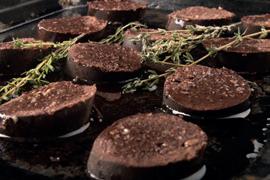







As well as being part of the most famous Sunday roast, the Yorkshire pudding can also be served separately before the main dish. Its ingredients are very simple: milk, flour and eggs. Cooking it is a little bit more complicated, but once done, it’s delicious.
Drisheen
This is a type of blood pudding with a gelatinous consistency. It is made from a mixture of cow’s, pig’s or sheep’s blood, milk, salt and fat, which is boiled and sieved and finally cooked using the main intestine of an animal (typically a pig or sheep) as the sausage skin. The sausage may be flavoured with herbs, such as tansy, or served with tansy sauce.
Hāngi
This is a traditional Maori method of cooking. A pit is dug in the ground which gets filled with stones heated by fire. The food is laid on top of this fire and the whole thing is then covered and left for several hours.
‘Ambrosia’ means ‘food of the gods’, but only those with a very particular palate agree that this dish fits the bill. A compendium of the sweetest items in anyone’s pantry, this crowd-pleaser is made of canned sweetened fruit, mini marshmallows, shredded coconut, and sour cream or Cool Whip.
The fancy French name is Pouding Chômeur, and it looks a lot better than its English translation: unemployment pudding. Legend says that it was created in Quebec during the Great Depression when women factory workers were trying to make something that was tasty and easy to make that required few ingredients. They came up with a dish they eventually named Pouding Chômeur that only called for eggs, flour, butter, and milk, with a caramel-like sauce made from brown sugar. The treat is still around today, but the brown sugar sauce has largely been replaced with authentic maple syrup
Possibly among the most visually shocking dishes, the Koolickle is a delicacy made by soaking pickles in Kool-Aid. Appearances aside, the Koolickle receives high marks from those who have tried it for its sweetand-salty combination.
Fairy bread is sliced white bread spread with butter or margarine and covered with ‘Hundreds and Thousands’, a decorative confectionery of tiny balls made with sugar and starch, traditionally an opaque white but now available in many colors. This is often served at children’s parties. It is typically cut into triangles.
Strangely rolled into the chocolate topping are coconut bits which give it a furry appearance, beneath which is a soft sponge cake which is light and fluffy to bite into! Lamingtons can also be found covered in raspberry or strawberry sauce to give a pink appearance, with a thin layer of jam or cream in the middle of the two halves. Almost every bakery or supermarket sells these weird foods, and you can find them offered as an essential mid-afternoon snack with a cup of tea. Yet you still must watch out for the desiccated coconut on your lips and the chocolate or raspberry sauce sticking to your teeth!
Classified as comfort food, this is a traditional dish made of potatoes and cabbage or kale. The dish is so common that there’s even a song about it. Some of the other ingredients include milk, butter and seasoning
Although the name might lead you to think otherwise, it is claimed to be born in the UK. Extremely popular, it is characterised by roasted pieces of chicken cooked in an orange-colored creamy sauce. Rumor has it Chicken Tikka Masala is among the most popular dishes nationwide.
It comes as a dark colored paste, which can be spread on toast or anything you want. The paste is made from yeast extract, and it is a real must down-under!
Toad in the hole is a traditional dish consisting of sausages in Yorkshire pudding batter, usually served with vegetables and onion gravy. The origin of the name ‘Toad-in-the-Hole’ is often disputed. Many suggestions are that the dish’s resemblance to a toad sticking its head out of a hole provides the dish with its somewhat unusual name.
Boxty is a potato pancake that is made of flour, potatoes, baking soda, buttermilk (and often eggs to bring the dish together).
It is most commonly associated with counties in the North Midlands and Northwest coast.
Definitely one of the most popular dishes of this country. The recipe is quite simple: a layer of French fries covered in gravy and cheese curds. Although the dish is originally from Quebec, it is nowadays quite common in the rest of the country, and also across the border in the USA.
2 Organise these traditional dishes according to the country they are most popular in. Look them up online of you have absolutely no idea.
3 Discuss with a partner.
a Which foods sound absolutely disgusting?
b Which foods don’t sound too bad?
c Have you ever tried one of these foods? What did it taste like?

4 Fill in the crossword puzzle. Choose from the words in the descriptions in ex. 1. ACROSS
3 a mixture of flour, eggs, and milk that is used in cooking
8
10 the lower part of the alimentary canal from the end of the stomach to the anus
12 salt, herbs, or spices added to food to enhance the flavour
14 bits of curdled milk formed in the process of making cheese
15 a traditional British meal that is typically served on Sunday, consisting of roasted meat, roast potatoes and accompaniments such as Yorkshire pudding, stuffing or gravy
17 something especially rare or expensive that is good to eat
19 a food flavoring made from the same yeast used to make bread and beer
1 a white substance that exists in large amounts in potatoes and particular grains such as rice
2 having had all moisture removed; dried out
4 a light cake made with egg whites, flour and sugar, sometimes leavened with baking powder
5
6 food items that are rich in sugar and carbohydrates (sweets and chocolates)
7 to bring a liquid to a temperature at which it bubbles and turns to vapour
9 a white powder used to make foods rise when they are baked

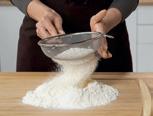
11 to alter or enhance the taste of (food or drink) by adding a particular ingredient
13 a person’s ability to distinguish between and appreciate different flavours
16 having the consistency of jelly
18 a sticky, sweet liquid produced from maple trees
21 a sauce made from the juices that come from meat when it cooks
5 You are going to describe a dish from your culture.
a Preparation: think of a typical, and preferably, weird dish. Look up the ingredients if necessary. Make a few short notes below.

Name of dish:
Origin:
Ingredients:
b Action: describe the dish and its ingredients to a classmate. Discuss origin if possible. Do not mention the name of the dish. Can your classmate guess which dish you described?
My classmate thinks this dish is called and they were right / wrong!

c Reflection: fill in the checklist to reflect on your task.
Checklist: describing a dish Yes
1 Content and structure
• I clearly described a typical (weird) dish.
• I described its ingredients (and its origin, if possible).
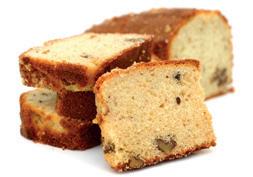
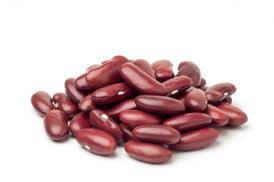


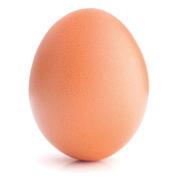
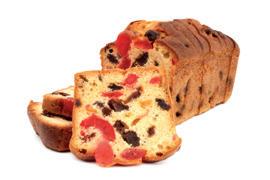

2 Language
• I used correct words.
• I used correct grammar.
• I paid attention to my pronunciation.
1 There are endless idioms connected with food. Can you figure out which food belongs where? One type of food can be used twice.
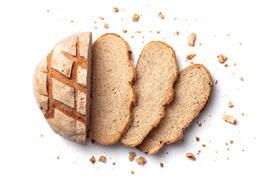




A Go
B Full of


C Cool as a
D In a
E Compare and
F Like two in a pod
G Have one’s and eat it too
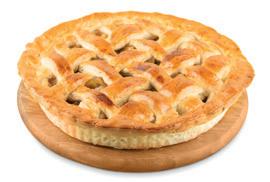

H in the sky
I Eat humble
J Best thing since sliced
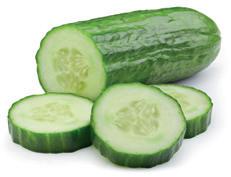
K someone up
L To have a in the oven
M A bad
N Have bigger to fry
O That’s the way the crumbles
P Be about
Q (No use) crying over spilled / spilt
R As nutty as a

2 Complete the short story below, using at least 5 of the idioms in exercise 1. WRITING
and had been friends since they were babies. They were like two peas in a pod. One day,
CHECK 1, p. 323
Ordering from a food truck menu
1 Discuss these questions.
a Have you ever tried food from a food truck?
b If so, what kind of food was it? Did you like it or not?
c If not, why haven’t you? Would you like to try food from a street vendor one day?
2 Which food trucks do you think sell these dishes? Match meal descriptions to pictures and corresponding food truck names.
The Chicago: an iconic blend of pickle, onion, tomato, banana pepper, sweet relish, celery salt and poppy seed, topped with yellow mustard

1
Cheesy tots: tater tots with Benton’s bacon bits
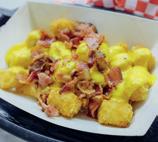
2
Kalua pork and cabbage: plate lunch with two scoops sticky rice and mac salad or tossed salad

Hummus and pita: ground chickpeas mixed with tahini, lemon, garlic and spices, served with a side of pita

Gourmet lamb: flatbread filled with feta cheese, English spinach and marinated lamb

3 Scan the menus on the next few pages. Tick the name(s) of the food truck(s).
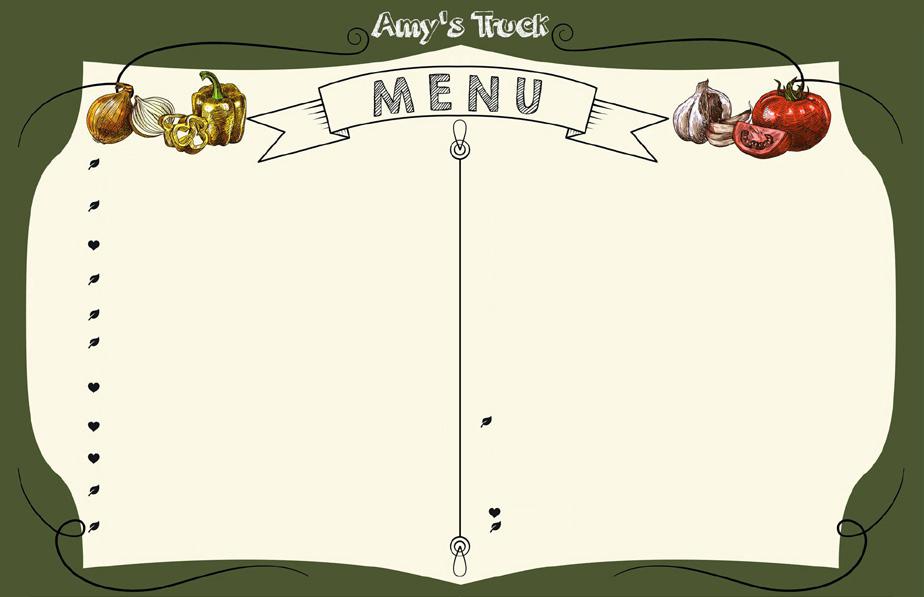
Which food truck …
2 offers vegan meals?
3 offers halal meals?
4 offers gluten-free meals?
5 has cheese in all meals?
6 sells beverages too?
7 allows you to make your own combo?
8 offers desserts?
9 also offers side dishes, such as soup or fries? 10 can be booked for events?
11 is active on social media?
Spicy Lentils, grilled Onions, Peppers & Tomatoes topped with melted Cheddar, stuffed into a Pita with Lettuce.
HUMMUS WRAP $ 5
Ground Chick Peas mixed with Tahini, Lemon, Garlic & Spices, with Lettuce, Tomato & House Dressing rolled in Flat Bread.
HUMMUS & PITA $ 4
Ground Chick Peas mixed with Tahini, Lemon, Garlic & Spices, served with a side of Pita Bread.
Falafel Sandwich $ 7
Deep-fried Falafel patties with Lettuce, Tomato, Tahini & House Dressing, rolled in a Pita.
Lentil Soup $ 3
Amy’s Famous, homemade, secretly spiced, hearty lentil soup.
BRUCE BOWL $ 4
Amy’s famous Lentil Soup topped with Onions, Hot Sauce and Cheddar Cheese.
Source: www.amysfoodtruck.com

ANNE KABOBS $ 8
Char-broiled Chicken strips, Hummus, Feta & Tomatoes, rolled in a Pita.
Margie Meal $ 8
Char-broiled Chicken strips, Fajita Fries, Tomatoes, Garlic Spread & Hot Sauce rolled in a Pita.
Dan Kabobs $ 7
Deep-fried Breaded Chicken breast, French Fries, hummus & Hot Sauce rolled in Flat Bread.
KAFTA SANDWICH $ 8
Char-broiled ground Lamb & Beef mixed with Parsley, Onion, Spices, Hummus, Lettuce, Tomato & House Dressing rolled in a Pita.
CHICKEN KABOBS $ 8
Char-broiled Chicken strips, French Fries, Tomatoes & Garlic Spread rolled in a Pita.
Chicken Souvlaki $ 8
Char-broiled Chicken strips, Lettuce, Tomato, Onion, Feta & House Dressing rolled in a Pita.
Wet Shoes $ 6
Curly-Q Fried smothered with Chili, Onions & Cheddar with a side of Sour Cream.
VEGGIE WET SHOES $ 6
Curly-Q Fries smothered with Spicy Lentils, grilled Onions, Peppers & Tomatoes, topped with Cheddar, with a side of Sour Cream.
ADDITIONAL COSTS:
Feta: $ 1… Cheddar, Provolone, Peppers, Onions or Tomatoes: 50 ¢.
= VEGAN Please Note: All of these items can be made vegetarian or vegan
= VEGETARIAN upon request (if they aren’t already!) Just remember to specify ALL PRICES INCLUDE TAX! two hundred and ninety-nine
ZAATAR & FETA $ 9
Mix of herbs and feta cheese (vegan cheese + $ 1)
SUCUK $ 11
Turkish sausages, feta cheese and egg
CLASSIC CHEESE $ 9
Our special feta cheese blend (vegan cheese + $ 1)
FETA & SPINACH $ 10
Feta cheese and English spinach (vegan cheese + $ 1)
VEGETARIAN $ 11
Feta cheese, English spinach and mushroom (add capsicum + $ 1 / vegan cheese + $ 1)
MARINATED
FETA, MUSHROOM & EGG $ 11
THE BIG BREAKFAST $ 16
Feta cheese, mushroom, egg gözleme with a side of fresh avocado, tomatoes, cucumbers and Kalamata olives (add sucuk + $ 1)
COMBINATION $ 11
Feta cheese, English spinach and traditional beef
MOJO BEEF $ 12
Feta cheese, English spinach, beef infused with our secret
‘Mojo’ sauce
THE LOT $ 12
Feta cheese, English spinach, beef and mushrooms
THE BULL FIGHTER $ 12
Feta cheese, English spinach, beef chorizo (sucuk), Spanish onion, capsicum infused with special Spanish sauce
BANANA BUZZ $ 8
Caramelised banana, warm honey topped with icing sugar (add strawberries + $ 1)
NUTELLA DREAM $ 8
Filled with Nutella, topped with icing sugar (add strawberries or bananas + $ 1)
BISCOFF $ 8
Original Biscoff spread sprinkled with original Biscoff pieces
MOJO CHICKEN $ 12
Feta cheese, English spinach, chicken breast infused with our secret ‘Mojo’ sauce
PERI PERI CHICKEN $ 12
Feta cheese, English spinach, Peri-Peri chicken and a side of peri mayo
CHICKEN & MUSHROOM $ 12
Cheese, seasoned chicken and mushroom
TANDOORI CHICKEN $ 12
Feta cheese, English spinach, Spanish onion, tandoori chicken and a side of mint yoghurt
GOURMET LAMB $ 12
Feta cheese, English spinach, marinated lamb and a side of mint yogurt
BBQ MEAT LOVERS $ 13
Feta cheese, beef, chicken, sucuk infused with BBQ sauce
MUCHO MEXICANA $ 13
Feta cheese, English spinach, beef or chicken, corn kernels, jalapeños and a side of guacamole
GOURMET GRILLED CHEESE TRUCK
Sub gluten free bread + 1
Pimento Mac & Cheese $ 8
housemade pimento cheese, cheddar, macaroni, tomato slice, benton’s bacon bits on country white bread
Buffalo South $ 8
pepper jack, pulled chicken, house buffalo sauce, bleu cheese crumble, pickled celery on country white sourdough
Spinach & Artichoke $ 8.50
swiss, roasted artichokes, housemade white wine parmesan spinach dip with leeks on rosemary garlic bread with a parmesan crust
Turkey B&B of TN $ 9.50
white cheddar, bacon, house-roasted turkey, cranberry jam on multigrain bread
* prices do not include tax
** consuming raw or undercooked eggs may increase the risk of foodborne illness
Vegan Made without gluten
Start Your Melt with Selection of Cheese & Bread for $ 5.50
1 Start with Cheese
white cheddar, colby jack, pepper jack, swiss, vegan cheese
Make it extra cheesy + $ 1
2 Pick your Bread
country white sourdough multigrain - rosemary garlic gluten-free + $ 1
3 Pile on the Extras
bacon + $ 1.50
spiced pulled chicken + $ 1.50
house roasted turkey + $ 1.50
tomatoes + $ .75
caramelized onions + $ .50
housemade pickles - free herby mustard - free smoked jalapeño relish + $ .50
fresh avocado + $ 1
bleu cheese crumble + $ 1
pairs perfectly with our melts
Tater Tots $ 2.75 with house seasoning
Cheesy Tots $ 3.75 add benton’s bacon bits + $ .50 add jalapeño relish + $ .50
Housemade Chips $ 2.50 add cheese sauce + $ 1 add French onion dip + $ 1 add ranch + $ .50
Old Fashioned Tomato Soup $ 3.50 classic tomato soup made with country ham stock + cream
Bottled Water $ 2
Bottled Soda $ 3
Canned Soda $ 2
Menu is subject to change
Source: https://franktuary.com
pick a protein:
GRILLED STEAK
GRILLED CHICKEN
GRILLED FIRM TOFU
Then make it a:
PLATE LUNCH 11.00
Two scoops sticky rice with mac salad or tossed salad.
HULA GIRL MIXED PLATE 13.00
Teriyaki beef, chicken & kalua pork with two scoops sticky rice with mac salad of tossed salad.
KALUA PORK & CABBAGE 11.00
Plate lunch with two scoops sticky rice and mac salad or tossed salad.
CHINESE BBQ PORK BELLY BAHN MI 9.00
Multi-grain hero, cucumbers, pickled daikon & carrots, cilantro, spicy mayo and pineapple-ginger habanero drizzle.
SPAM MUSUBI 3.00
Sides small or large STICKY RICE 1.50 / 2.50 PICKLED DAIKON & CARROTS
HAUPIA (Coconut Pudding) 1.00
With toasted coconut & macadamia nuts
SALAD 8.50
Greens, shredded napa cabbage, cucumber, edamame, green onions, macadamia nuts, pickled daikon & carrots with ginger-soy dressing.
SANDWICH
8.50
Multi-grain hero, cucumbers, greens, cilantro, pickled daikon & carrots with spicy mayo.
MAC 2.50 RICE 1.50 MEAT 3.00
FOUNTAIN DRINKS 2.00

Boylan’s Cane Cola, Boylan’s Diet Cane Cola, Boylan’s Black Cherry, Hawaiian Punch
WAIALUA SODA WORKS 2.50
Direct from the North Shore of O’ahu – made with pure Hawaiian cane sugar and organic ingredients – ask for flavors!
BOTTLED WATER 1.00
PRICES DO NOT INCLUDE 10 % TAX
4 Often the word used to describe the meat is different to the word used to describe the animal. Go through the menus again and complete the table below. Look up the words you cannot find in the menus above.
meat from … is called:
a chicken
a turkey
a lamb
a sheep
a pig
a calf
a cow or a bull
a deer
5 You are what you eat, right? Look at the list of words taken from the different menus. Categorise them according to the food pyramid.
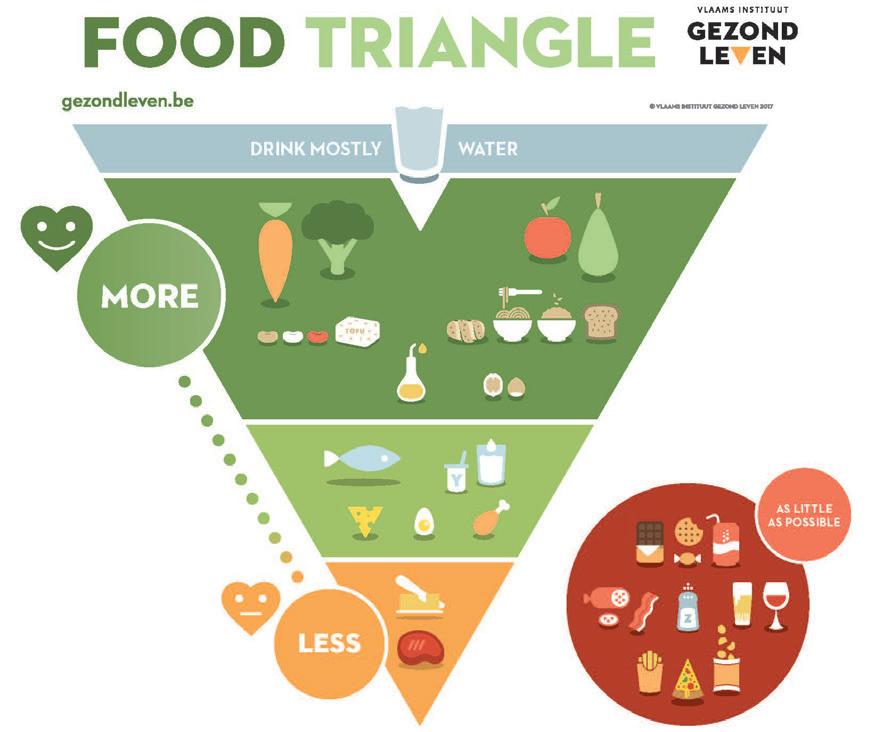
artichokes
bacon bits
ranch
beef
Biscoff spread
cabbage
capsicum
cheddar
chicken strips
chickpeas
cilantro
Colby Jack
curly Q fries
daikon
eggplant
franks
lentils
Pepper Jack
pork
sourdough
spam
tater tots
wheatberries
mac salad
7 Read the menus in more detail. Answer these questions.
a Which food truck would you prefer to visit? Why? WRITING
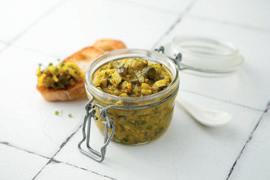





b Imagine you have $ 15 to spend on a good meal. What would you buy and where? Try to get a side dish, a drink and possibly a dessert for that $ 15 too. You can order from different food trucks.

main course: from:
side dish: from:
drink: from:
dessert: from:
c Report back to the class. speaking
CHECK 2, p. 330
Source: Darryl Brooks / Shutterstock.com
Reading and writing restaurant reviews
1 Sit with a partner and discuss these questions. Report back to the class.
a Have you ever ordered take-out? If yes, did you like it? If not, why not?
b Do you often try out new places or do you have a favourite restaurant or snack bar that you usually visit?
c Have you ever looked up the ratings for a restaurant or snack bar before you went there? If so, did you agree with its ratings?


d Do you sometimes leave a review on websites or apps after having eaten out?

e Do you know (and use) the apps below to look up ratings for restaurants or snack bars? If so, which one is your favourite?

a Fill in the information grid for your fragment.
b Afterwards share your findings with the rest of your group.
c Which dish / which food truck did Luke prefer?
Keywords (tick) little messy
I’m impressed it’s what you would have after a bad hangover wasn’t too overwhelming they did the job right toasted perfectly wow this is what ties it together
I was very surprised the star of this year
very fresh oriental flavour soft and tender chicken nothing too out of the ordinary appeals to the eye well done meat is a little tough classic nice and thick definitely enjoying it done in a unique way would come here again
would recommend really, really good pretty standard that’s so good bright and sunny a little tough less would have been more here really excellent indulgent I can see why they bring so many people to this food truck a new favourite
3 Read the reviews from Yelp below.

a Look at the underlined words and phrases used in restaurant and food truck reviews. Mark them in 3 different colours to match the three categories: positive, neutral and negative.
This food truck wins a prize... one that’s actually tough to obtain: The Worst Chinese Food I’ve ever eaten.
Slop is the only way that I can describe it. I’m not sure if the beef is meant to be ground or sliced, but it’s covered in glop. The breaded thing... I’m not sure if it’s chicken or a vegetable. In addition to the gloppiest, highest-MSG oyster sauce I’ve ever tasted, there’s some other sauce that’s salted beyond belief. Somehow even the rice has a weird off-taste. It’s cheap, but it is truly, truly terrible. Service is rude. I just am praying I don’t get food poisoning.
#1 Worst. Chinese Food. Ever.
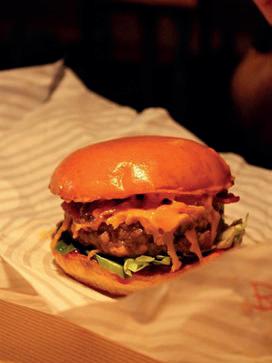
I wasn’t a huge P&B fan before trying it again during the soft launch of this place. 50% off food is hard to pass up. However, I can safely say after my last visit to P&B I won’t be returning here... ever again.
The burger was soggy, so soggy it was dripping dangerously everywhere. All I could really taste was the sauce, the bun had no flavour and was drenched. The patty itself was plain, and just covered in whatever sauce they put on it. The chips - we ordered both flavours – well, I couldn’t tell the difference between them, and they were dry and stale tasting. This is by far one of the worst burger joints I’ve tried. The only redeeming feature was the 50% off and the friendly enough staff.
Is poutine the most Canadian food invention? Probably yes. Emerging from Quebec in the late 1950s, this French fries, cheese curds and brown gravy combo has become one of the quintessential dishes of Canadian cuisine.

I visited Nom Nom Nom Poutine on a Saturday evening and was greeted at the shack by the friendly gentleman inside. He whipped up my ‘tine in about two minutes flat. The menu consists of eleven different poutines. And that’s ALL! They aren’t making anything else (which I appreciate). He’s doing everything from pretty typical Quebec versions; one with smoked meat, one with hot dog, and a galvaude with chicken and peas. And also some pretty original options like the one with fried brussels sprouts on top or the (limited time only) spicy jerk chicken poutine that screams ‘Toronto’. I decided that I wanted to go ultra-classic. Nom Nom Nom does a traditional poutine that can be made with three levels of cheese. So I ordered the Traditional Triple Cheese (Red potato fries, cheese curds, sauce from Quebec - $ 10.62). Go big or go home. Upon first glance, everything appeared to be extremely right. Including the positively heaping amount of cheese. I couldn’t wait to jam a steaming hot bite into my mouth and was incredibly pleased once I did. Crispy golden fries? Check. Squeaky cheese? Check. Silky and piping hot brown sauce? Check.
All of the boxes were ticked with flying colours. I loved the way that the fries maintained a crispiness while simultaneously becoming just the right amount of soggy. The big chunks of cheese curd totally did the desired melty/not melty thing that you want. Everything was right about this poutine, and I loved eating it. I can easily call this the best poutine that I’ve eaten in Toronto.
If you love poutine (like most Canadians do) then Nom Nom Nom Poutine is the place for you. Their shipping container shack adds a lot of fun to the experience and they’re certainly doing the dish right.
This is the best Thai curry in London. No, I’m serious. And it’s a secret, judging by the limited number of Yelp reviews on here. However, local workers know about it, and this is reflected in the long queues every lunchtime. The only place I know that does a peanut-free Massaman curry- and it’s mouth-watering. Their fried chicken wings are to die for. Not your usual KFC but marinated for 24 hours in Thai herbs and spices, and then deep fried, then drizzled with an appropriate amount of homemade sweet chilli sauce. Since I moved away from London, I’ve not been able to find an adequate replacement for these.
Also, very kind mom-and-pop store. Only minus is that they can disappear on holiday without prior notice, so you’re already salivating at the thought of your meal... and then the van isn’t there.
Highly recommended.
I do not enjoy writing bad reviews but this experience merits one. The service here is subpar. We ordered online and had to wait over 15 minutes for our order. That’s ridiculous considering we came after the expected time it would be ready. The staff were a bunch of teenagers who were giggling, laughing and very inattentive to the customers. Appalling service.
The bagel we ordered was rock hard and the açaí bowl was absolutely horrible. The fruit was old and mushy. I took one bit and the whole thing went in the trash. What a waste of money!
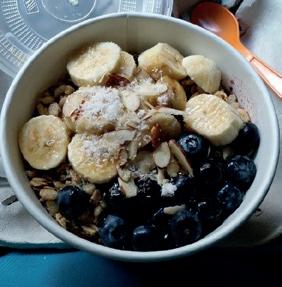
The food offerings at Camden Market are overwhelming and can stifle or at least complicate any decision. What if, out of all these options, you order something and then see something a minute later that looks better? Or worse, what if you don’t like what you chose? It’s quite a daunting effort but I can help. Arepazo is awesome, you should try it, and you won’t be disappointed.
They offer a sandwich – or is it a taco – I’m really not sure, but here are the facts. Baking on the grill are amazing homemade gluten-free corn bread pastries. Upon ordering they are wrapped in paper, cut in half and filled with a sizzling concoction of meat, cheese, avocado, fried plantain, beans and pico. Lactose free sauces await at your discretion. Venezuelan street food that is as unique as it is delicious

I stopped here for lunch with a couple of friends and my girlfriend on the weekend driving along the coast of Oahu. We were extremely hungry and feeling something filling and satisfying - we had heard good things about Keneke’s and decided to give it a try. I ended up getting a 3-item combo which consisted of Beef Kalbi (short ribs), Pork Adobo, and Kalua Pork. The Adobo was nice and tender and reminded me of eating Adobo at my friend’s Filipino household - however the other 2 items were unfortunately really overcooked. The Kalua Pork was stringy with a pool of oil beneath it, and the Kalbi was also pretty chewy, although the flavor was good. The main thing going for the meal was that the portion was HUGE, with 2 enormous scoops of mac salad and rice that were also part of the combo.
In the end, my experience with the meal was just alright - aside from the Adobo and the mac salad, everything else was a bit overdone and dried out, and I had to wash it down with the icecold water that I had. However, the portions were huge and if you’re just looking for some average food to fill you up for most likely 2 meals, then this is definitely one of the best options in the area!

I will never come to NY again without stopping by this street cart. It’s that good!
Get the Combo Platter (beef gyro & chicken). It comes with their exquisite, fluffy yellow rice and you can substitute the salad for extra pita. Make sure you put lots of white sauce and dab the red sauce (it really is spicy and a little goes a long way!). My boyfriend also likes it with a splash of barbecue sauce which was actually pretty good too. I just wish they cut the pita into smaller pieces.
The guys at this cart are super welcoming and offer a speedy service no matter what time of night. As we were placing our order on a Friday night around 2 AM, one of them was like ‘for Ms. Kareena Kapoor here’ (Bollywood actress reference) which put a smile on my starving face, haha.
I believe this is the main / original location but they have a lot more throughout (and in different states now).
My boyfriend, being a local, isn’t a big fan of this one and says there are better carts out there.... but I still love it.
Swift service, great food, low prices. I will definitely be back!
Oh em gee.
This is vegetarian food. This is how it is meant to taste. I’ve been fairly disappointed with the vegetarian offerings around Sydney - it’s expensive and bland. Your choices are limited to sushi or Asian stir fry. And I love both those things, but sometimes you just want a burger.
Both burgers sounded amazing to me, so I let my lunch partner pick, as we were going halves. She picked the vegan burger. Packed full of flavour, these burgers are incredible. Like, I can’t put into words how surprising the combination of ingredients and flavours are. The sweet potato chips with basil mayo are just as incredible, addictive but rich. I usually split a burger and a serve of chips with my lunch partner.
And the soft drinks are amazing: fresh, heavenly flavours, definitely give them a try (especially the grapefruit) if they happen to be offered that day.
The staff are usually pretty busy (especially in the CBD) but ultra organised, but sometimes there is a wait. The guy working the counter was helpful and cheerful
This is how vegan and vegetarian food is meant to taste, so everyone needs to take note.
Seriously, I cheerfully follow the Veggie Patch van around Sydney like a crazed groupie.
Had their frito taco thing last Saturday night, as well as some of my sister’s burrito and some of my niece’s fried pickles with the special sauce. All of it was super yummy, kinda addicting. I look forward to the next time they come around! PS: Fast service, nice people and reasonable pricing. They have fried Oreos and Twinkies, which aren’t really my thing but I know other weirdos that like them, so I thought I’d mention it :) Thanks Kelsea!
Source: www.yelp.com
bun: small bread roll
CBD: the Sydney Central Business District a concoction: a mixture of various ingredients or elements a patty: a little pie or a small flat cake of chopped food (e.g. a hamburger patty) plantain: a tropical fruit similar to a banana with green skin pico: (or pico de gallo): a relish made of raw, chopped tomatoes, onions, hot chili peppers, and cilantro with lime juice, used in Latin American cuisine a soft launch: the release of a new product or service to a restricted audience or market in advance of a full launch
b Taste or texture? Highlight the adjectives that refer to taste in yellow and the ones that refer to texture in green.

c In order to avoid describing food as simply ‘good’ or ‘bad’, try using other ways to say something similar. Which other adjectives could you use to describe ‘good’ food? Look up at least 10 alternatives in the reviews and list them here:
Don’t say the food was ‘good’, but say it was …
d Which alternatives for ‘bad’ or ‘not so good’ are used in the reviews?
e Reviews also often discuss service, staff, pricing and portion sizes. Which words or phrases that were underlined in the reviews can you list here? Look at the examples to get you started!
Staff Service Pricing Portion sizes
friendly enough rude
50% off The food offerings are overwhelming.
f How many stars would you give to the restaurants from the reviews on the previous pages? Give a rating to each of them by colouring in the stars. Look at the legend below.

Poor food or service. Not worth the time in line.
Mediocre food or service. Nothing to write home about.
Very good cooking or service in this category.
Excellent food and service. This food truck is worth a detour. Exceptional cuisine and service, worth of a special journey to track this food truck down.
4 Match a word or phrase from the left-hand column to a word or phrase in the right-hand column to form collocations.
1 only A recommended
2 I have not been able to find B full of flavour
3 It is C an adequate replacement.
4 highly D to die for.
5 They are certainly E doing the dish right.
6 It is hard F really my thing.
7 I will definitely G to the next time they come around!
8 These aren’t H minus
9 I look forward I be back.
10 packed J to pass up.
12345678910
5 Which word is the odd one out? Underline the word that does not fit the list. Explain why. aoff stale fillingplain
binattentivewelcomingcheerfuloverwhelming
cuniquereasonableexpensive low dsilkygloppyexquisitesatisfying
efluffycrispysoggybland
6 Read the sentences below. Fill in the words from the list. Watch out: three words cannot be filled in.
bland – drenched – filling – huge – mushy – off – plain – sizzling – soggy – spicy – stale –subpar – tender – yummy
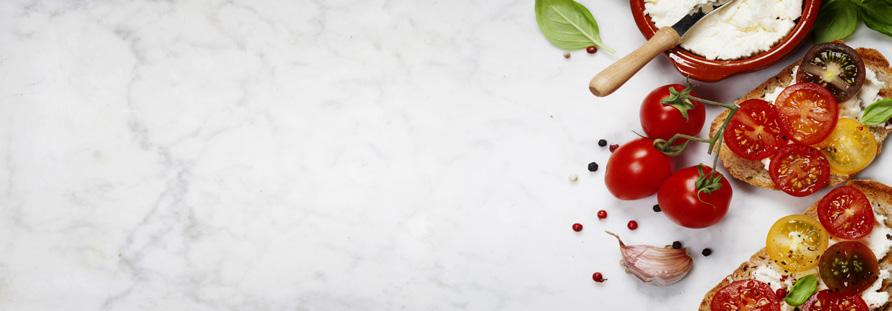
a English food is too for my taste. I prefer food, like Indian curry or a jalapeño chicken casserole.
b The service there was . Very unfriendly and slow.
c That chocolate cake you served last night was so ! Finger-licking good!
d Food truck designs should really jump out, a design will not attract many new customers.
e There’s nothing better than waking up in the morning to the smell of fried eggs and bacon in the pan.
f My pancakes this morning were in syrup. Next time I’ll try not to be so greedy.
g I left my cereal in milk to answer the doorbell and now my Frosties are all Yuck!

h bread is only fit for toasting.
i This carton of milk smells funny. I think it is
! Why didn’t I check the expiry date before gulping it down yesterday?
j The cooking instructions said: ‘Cook for an hour or until the meat is .’
7 Now make a sentence with the three words you could not fill in.
Adverbs of frequency and (prepositional) phrases of time
I'm always so hungry that I usually order the same when I'm at this restaurant. Steak and fries!
I have never been here, what should I order?
frequency
Not me! It's Friday, and I always eat fish on Fridays.
I sometimes order take-out.
always usually/normally often/regularly sometimes occasionally hardly ever/rarely never
100% 0%
I don’t usually skip meals. I might never have tried this burger if you hadn’t convinced me.
I am always hungry.
= before the main verb
= after the first auxiliary verb

= after the verb 'to be'
– on Mondays (= every Monday)
– twice a month – every day
She orders take-out on Mondays. ✔ On Saturdays we eat out, and on ✔ Sundays we have a big family dinner.
I go shopping twice a month. ✔ Twice a month I go shopping. ✔
I don’t have breakfast every day. ✔
Every day, I don’t have breakfast. ✘
At the end of the sentence. Used for stress at the beginning of the sentence.
At the end of the sentence. Used for stress at the beginning of the sentence.
At the end of a sentence is always correct.
My notes (no use) crying over spilled/spilt milk
Word or phrase Translation
gedane zaken nemen geen keer
a bad egg
een rotte appel
as nutty as a fruitcake zo gek als een achterdeur; knettergek
best thing since sliced bread het beste wat je ooit is overkomen; beste uitvinding ooit
compare apples and oranges appelen met peren vergelijken
cool as a cucumberzo koel als een kikker
full of beans vol energie
in a pickle in de penarie; in de knoei
like two peas in a pod als twee handen op één buik; als twee druppels water
pie in the sky een luchtkasteel
that’s the way the cookie crumbles zo gaan de dingen nu eenmaal
to be nuts about gek zijn van to butter someone upvleien, paaien
to eat humble pie een toontje lager zingen; moeten inbinden
to eat like a bird eten als een vogeltje (erg weinig eten)
to eat like a horse eten als een paard (erg veel eten)
to go bananas uit je dak gaan
to have a bun in the ovenin verwachting zijn
to have a healthy appetite een gezonde eetlust hebben
to have bigger fish to fry andere katten te geselen hebben; grotere problemen hebben
to have one’s cake and eat it too van twee walletjes eten; alles willen hebben
to pick at your food niet veel eetlust hebben; weinig eten; spelen met je eten
to pig out (on food)schrokken, volvreten
to spoil your appetiteje eetlust bederven
to work up an appetiteje eetlust opwekken
Word Translation
DIFFERENT MEATS
beef rundvlees
My notes
chicken kip
lamb lamsvlees
mutton schapenvlees
pork varkenvlees
turkey kalkoen
veal kalfsvlees
venison hertenvlees
GENERAL WORDS
artichokes artisjokken
bacon bits spekjes
baking soda bakpoeder, zuiveringszout
batter deeg
Biscoff spread speculoospasta
to boil koken
cabbage kool
cane sugar rietsuiker
capsicum paprika
cheddar cheddar(kaas)
cheese curds kaaswrongel
chicken strips kippenreepjes
chickpeas kikkererwten
cilantro koriander
confectionery snoepwaren, suikergoed
curly fries krulfrietjes
daikon Japanse radijs
a delicacy een delicatesse
desiccated uitgedroogd
eggplant aubergine
to flavour kruiden
franks knakworstjes
gelatinous geleiachtig
Word Translation
gravy jus, (vlees)saus
intestine darm
kale boerenkool
My notes
lentils linzen
mac salad macaronisalade
macadamia nuts macadamianoten
maple syrup ahornsiroop
a melt een tosti met kaas
palate smaakpalet
ranch saus op basis van karnemelk en kruiden, gemengd met mayonaise of zure room
relish saus met fijngehakte groenten of fruit, azijn en suiker
sauerkraut zuurkool
seasoning kruiding, smaakmaker
a sieve een zeef
sourdough zuurdesem
spam ingeblikt gekookt varkensvlees
sponge cake sponsgebak
starch zetmeel
stock bouillon
Sunday roast zondagsgebraad
tater tots aardappelkoekjes, aardappelkroketjes
wheatberries tarwebessen
yeast extract gistextract
Word Translation My notes
1 STAFF cheerful vrolijk
friendly enough vriendelijk genoeg
helpful behulpzaam
inattentive onoplettend, achteloos
nice leuk, vriendelijk
organised georganiseerd
rude onbeleefd, onbeschoft
very kind heel vriendelijk
welcoming gastvrij
2 SERVICE
there’s a wait je moet even wachten
fast snel
speedy (razend)snel
swift snel, vlot
to whip up a dish in two minutes flat een gerecht bereiden binnen de twee minuten
3 PRICING
50% off 50 % korting
cheap goedkoop
expensive duur
low prices lage prijzen
reasonable pricingeerlijke prijs
What a waste of money!Wat een geldverspilling!
4 PORTION SIZES
enormous scoops gigantische scheppen (ijs)
huge gigantisch
overwhelming overweldigend (groot)
5 TASTE
bland smaakloos, flauw
fresh vers
off vreemd, bedorven, slecht
old oud
Word Translation
piping hot gloeiend heet, zeer warm
plain smaakloos, flauw, gewoontjes
rich rijk
My notes
salted beyond beliefongelooflijk gezouten
spicy pittig, kruidig, pikant
stale oudbakken
steaming hot dampend heet, zeer warm
6 TEXTURE
chewy taai
crispy krokant, knapperig
dry droog
dried out uitgedroogd
fluffy luchtig
gloppy blubberig, dik
mushy papperig, klef
overcooked te gaar
overdone te gaar
rock hard steenhard
silky fluweelzacht, glad
soggy klef, vochtig
squeaky krakend
stringy draderig, vezelig
tender mals, zacht
7 GENERAL an adequate replacement een evenwaardige vervanging to be back terugkomen to do the dish right
het gerecht goed klaarmaken; het gerecht alle eer aandoen
full of flavour boordevol smaak
Highly recommended!Aanrader! only minus enige minpuntje to pass up afslaan; laten schieten
8 ALTERNATIVES FOR THE WORD ‘GOOD’
addicting verslavend
addictive verslavend
amazing geweldig
awesome geweldig, indrukwekkend
delicious heerlijk
to die for verrukkelijk
exquisite voortreffelijk, uniek
filling vullend, zwaar
heavenly hemels
homemade huisgemaakt
incredible ongelooflijk
mouth-watering overheerlijk, verrukkelijk
original origineel
satisfying bevredigend, voldoening gevend
sizzling zeer heet
surprising verrassend
unique uniek
yummy lekker
9 ALTERNATIVES FOR THE WORD ‘BAD’ OR ‘NOT SO GOOD’
appalling verschrikkelijk, vreselijk
average middelmatig
just alright gewoon goed
horrible vreselijk, verschrikkelijk
subpar ondermaats, onvoldoende
terrible vreselijk, verschrikkelijk


Hi, how can I help you? Hello, how may I help you?
Today’s special is … . I can really recommend … It’s so good!
It’s a … (e.g. dish made with French fries, cheese curds topped with a light brown gravy.)
Yes, we do. I’m sorry, we don’t have … (e.g. gluten-free dishes)
Hi! I’ll have …, please. Can I get … ? I would like to get …
What do you recommend?
What exactly is in … ? (e.g. this Poutine dish?)
That (…) sounds excellent. Yes, I’ll take that.
Do you have … ? (e.g. gluten-free wraps too?)
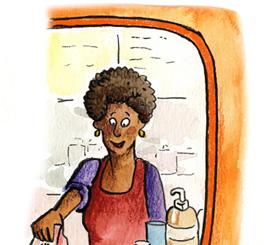

4 Finishing the conversation
Will that be all? Would you like side/dessert/drink too?
Your order will be ready in a few minutes. What is your name? I will call your name when your order is ready.

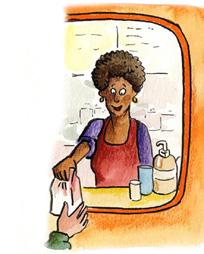


5 Paying and saying goodbye
That will be $ / € …, please.
I’m sorry. Cash only. Sure, you can, please enter your card.
Sure, no problem.
Thank you very much. Have a nice day.
That’ll be all, thanks.
How much is that?
How much is it?
Can I pay by card?
Do you have change for a ... (e.g. 50) ?
Here you go. Here you are.
Thanks. Bye. Thank you. Goodbye.
1 Read the text ‘Breaking bad eating habits’.
a What is the purpose of this text?
b Describe (bad) eating habits you, your parents, friends etc. have.
– Preparation: underline the (bad) eating habits you, your parents, your friends, etc. have.
Action: write 5 positive and 5 negative sentences. Use at least 5 different adverbs of frequency and (prepositional) phrases of time in your sentences.
E.g. I can’t usually put down a bag of crisps while watching TV.
– Reflection: fill in the checklist afterwards.
Checklist: describing bad eating habits
1 Content and structure
• I wrote 5 positive and 5 negative sentences.
• I used at least 5 different time expressions.
2 Language
• I used adverbs of frequency correctly in my sentences.
• I used (prepositional) phrases of time correctly in my sentences.
• I used correct spelling and punctuation.
Feedback
Yes I think soNo
HABIT 1
Mindless Eating
Continuing to eat even though you know you’re full? Can’t put down that bag of crisps while watching TV?
HABIT 3
Skipping Breakfast
You’re in a rush trying to get out the door so you head through the drivethrough at the coffee shop for your liquid breakfast or skip it altogether.
HABIT 5
Drinking Wine Every Night
Red wine is often associated as having health benefits. But the amount of wine can add up to extra calories. A 5-ounce glass contains 125 calories.

HABIT 7
Drinking Water is a Challenge
Water is often not the first choice for refreshment but the effects of even the slightest dehydration on our health, attitude and appearance make it worth grabbing an extra glass.
HABIT 9
Calories Don’t Count on the Weekend
It’s easy to get into a routine during the work week but when the weekend arrives, it can be a slippery slope when you think it’s ‘ok’ to take a couple of days off.
The Fix Eat from smaller dishes. Swap out a dinner plate for a salad plate. Never eat straight from the container!
HABIT 2
The Fix
The Fix Have ready healthy breakfast foods you can consume on the run such as whole fruit, yoghurt, homemade cereal bars, and smoothies.
The Fix
Buy smaller glasses, the smaller the glass, the less wine you drink.
Nighttime Munching
Often find yourself heading for the fridge well after the sun goes down? Eating before bed can greatly impair weight loss.
HABIT 4
Eating Too Quickly
Always in a hurry. Rush, rush, rush. Your brain doesn’t signal that you’re full until about 15 to 20 minutes after you’ve started eating. If you don’t pace yourself, it’s easy to end up with more food (and calories) than you need.


HABIT 6
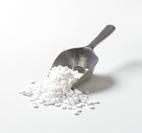
After dinner, teach yourself to think of the kitchen as being closed for the night, and brush your teeth – you’ll want to eat less with a newly cleaned mouth.
The Fix
To slow down your eating, physically put your fork down between bites, take smaller bites, and be sure to chew each bite thoroughly. Also, drinking water throughout your meal will help you slow down and feel fuller as you go.
The Fix
The Fix
Getting in eight or more glasses a day is easier if you drink every time you eat and when you work out. You need about half your body weight in ounces of fluid, for example, a 140-pound person needs about 70 ounces of fluid.
The Fix Instead of going hog wild, splurge on one portion-controlled treat, such as a small pastry from a local bakery.

Just because you don’t use sugar doesn’t mean you’re free from the health concerns. Artificially sweetened products are still linked to obesity, type 2 diabetes, and metabolic syndrome.

HABIT 8
Saving Calories for Something Sweet
Skipping meals to save calories so you can indulge in something tasty can often backfire and cause you to overeat.
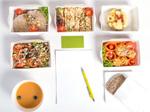



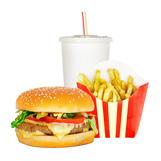
HABIT 10

Multitasking while Eating
It’s easy to lose track of how much you’re eating when you’re too busy focusing on something else.
Try using one less packet each time you flavour your coffee, oatmeal, etc., and gradually substitute it with honey or agave nectar.
The Fix
Stick to your regular eating schedule. You can still indulge but will be less likely to overdo it.
HABIT 11
Meal Planning is for the Birds
If you’re always deciding what you want to eat when you’re hungry, you’ll never achieve a healthy eating plan. Relying on willpower is dangerous when you get home after a long day of work.
Source: Consolidated Foodservice
The Fix
Plan your meals for the week on Sunday. Keeping a well-stocked kitchen is the first step toward developing healthy eating habits.
The Fix Instead of snacking while standing in the kitchen or when watching TV, prepare a healthy snack and then sit down.

2 Rewrite the sentences using the adverb of frequency or phrase of time between brackets.
1 I am in a hurry. (always)
2 I don’t skip breakfast. (usually)
3 Do you find yourself heading for the fridge for some nighttime munching? (often)
4 I give my brain the time to signal my body that I’m full. (never)
5 My parents don’t drink wine. (every night)
6 Water is not the first choice of refreshment. (often)
7 I count calories in the weekend. (hardly ever)
8 I plan my meals for the week. (on Sundays)
9 Do you save calories for something sweet? (always)
10 I use artificial sweeteners. (rarely)
Score < 6 ≥ 6
Next exercise ex. 3 ex. 4
3 Find one or two partners. Play the adverbs of frequency boardgame. SPOKEN INTERACTION
Score
Next exercise + ex. 4 ex. 4
4 Which idiom is being described here? Fill in the missing words or idiom.
1 I tried to to my father by doing the dishes and cleaning my room before I asked to borrow the car.
2 Practicing meditation has helped me to be in times of trouble.
3 You're having a baby shower for Patricia today? Wow, I didn't even know she had
4 The kids are always when they've had something sugary to eat.
5 I know you really wanted that job, but you weren't hired, so it's now.
6 We're now because the hotel gave our room away. What are we going to do?
7 I think I'm right, but if I'm wrong, I'll , I promise.
8 Don't buy a car if you want to walk and stay healthy. You can't
9 This waterproof jacket is the . I don't have to worry about getting soaked!
10 I really wanted Carlos to help me with this project, but he claimed he had , so I asked Gia instead.
Score < 7 ≥ 7
Next exercise ex. 5 ex. 6
5 Some of these idioms have been jumbled up. Give the correct idiom.
1 She met somebody else and left me. That’s the way the fish is fried, I suppose.
2 Their plans to set up their own business are just egg in the sky.
3 My mom and my mother-in-law are two peas and oranges. They should not be left alone in the same room for too long!
4 Boy, am I in a pod—I accidentally made plans to meet with two different clients today.
5 The kids are going to go beans when we tell them about the trip.
6 I had to eat sliced bread when Harry, who I said would never have any success, won first prize.
7 I know some of my students think I’m nuts about fruitcakes because of my weird methods.
8 You’re never going to save enough money to buy a house if you keep buying expensive appliances and cars. You can’t have your bread and slice it too.
9 We were pretty disappointed to have lost the championship game, but there’s no use crying over bad eggs. We just have to train harder for next season!
10 I was petrified to go on stage, but Alice was as humble as a pie.
Score < 7 ≥ 7
Next exercise
Check 2, p. 330
6 Read the following paragraphs explaining the origin of certain idioms. a Fill in the missing idiom that is being described. Also fill in the corresponding base words.
The idiom allegedly traces back to a customary religious act in ancient India included throwing butter balls at the statues of gods to seek good fortune and their favour.
The term has been traced to a novel published in 1951, Cruel Sea by Nicholas Monsarrat. Interestingly, a woman’s womb has been referred to as an since the late 1600s, though it took nearly three hundred years for the imagery of a baking in that to become established.
The phrase is first seen in a poem by John Gay in the mid-1700s. In fact, the inside of a in the garden may be as much as twenty degrees cooler than the ambient temperature. The idiom is a play on two meanings of the word : a temperature trending toward the cold side and a state of being calm.
READING
The phrase seems to have come into popular use in the mid-1800s and is attributed to a practice of feeding to horses as fodder. Supposedly, horses that were fed were more energetic and lively. were a staple in the diet of many Americans in the mid-1800s.
In the 1300s, umble or numble was a dish made from the offal of deer or other game, it was eaten by servants or other people of low rank. In the early 1800s the term came into use, probably as a convenient rhyme from umble
The phrase was coined by Joe Hill in 1911, in a parody of a Salvation Army hymn. Hill was an adherent of a radical labor organisation, the Wobblies. His lyrics in the parody hymn The Preacher and the Slave criticised the Salvation Army’s concern with saving souls rather than feeding hungry people. The term became popular during the Great Depression of the 1930s, to describe a happy future or something good happening in the future that was unlikely to come to pass.
going crazy, becoming insane. It may also mean to go wild with anger, or to erupt with enthusiasm with accompanying cheering. The term is not as old as one may think, it has its roots on American college campuses in the 1960s. It is believed that the term evolved from the idiom going ape, which also means to go crazy, to explode with anger or to erupt with enthusiasm. The close association of apes and monkeys with in the Western imagination probably gave rise to the term
The origin of the phrase seems to stem from two different places. First, there is the sixteenth century Dutch phrase in de pekel zitten which literally translates as sitting in the , meaning to be drunk. Second, there is the Shakespeare play The Tempest, in which Alonso asks ‘How camest thou in this ?’ and Trinculo answers ‘I have been in such a since I saw you last that, I fear me, will never out of my bones…’ In this case the phrase also refers to being drunk, in time it came to mean to be in a difficult situation or in a quandry.
You can’t means you must make a choice, you cannot have it both ways. Literally, if someone wants to retain possession of a he cannot it, these two choices are mutually exclusive. The same sentiment of the necessity of making a choice may be found in the Albanian proverb that says you cannot take a swim and not get wet, or the German saying that states you cannot dance at two weddings at the same time. The oldest known use of the proverb was in a letter from Thomas, Duke of Norfolk to Thomas Cromwell in 1538.
Sources: Grammarist & Grammarly
Subtotal / 14
b You are going to write your own etymology entry for a language website.
• Preparation: choose one of these idioms: ‘as nutty as a fruitcake; ‘pie in the sky’ or ‘no use crying over spilt milk’. Think of a funny, yet plausible explanation as to where the idiom comes from.
• Action: write at least 50 words. Go nuts!
• Reflection: check your writing in the checklist. Ask your teacher for some feedback.
Checklist: writing an etymology entry Yes I think so No
1 Content and structure
• I wrote at least 50 words.
• I thought of a funny, plausible explanation.
2 Language
• I used correct words.
• I used correct basic grammar.
• I used correct spelling and punctuation.
Subtotal / 10
Score > 16
≥ 16
Next exercise ex. 5 Check 2, p. 330
1 Order from a food truck menu.
a Preparation: find a partner and read the menu you will get. One of you will be a street vendor (A) and the other will be the customer (B).
b Action: act out a scene in which B asks questions about the menu and places an order.
c Reflection: check the criteria in the checklist. Present the dialogue to your teacher, who will give you some feedback.
Checklist: ordering food from a food truck menu

1 Content and structure
• We greeted each other in a friendly and correct way.
• I was able to order food and ask questions about the menu OR
• I was able to answer questions about the menu. (recommendations, special requests, other orders –desserts or sides)
• We talked about prices and payment methods.
• Our conversation sounded natural and was logically structured.
• We ended the conversation appropriately.
2 Language
• I used (typical) words correctly.
• I used correct grammar.
• I spoke fluently.
• I minded my pronunciation. Feedback
Wild Boar Sausage $ 8.00
House made wild boar sausage topped with sweet Danish pickled red cabbage & melted Brie
Ukrainian Poutine (V option) $ 9.00
Crispy Fries topped with cheese curds, house gravy, garlic sausage, perogies, sour cream, bacon bits & chives.
Korean Poutine (V option) $ 9.00
Crispy fries, cheese curds, crispy fried chicken, Bulgogi Korean sauce, nori, ginger & a drizzle of honey.
Mexican Poutine (V option) $ 9.00
Crispy fries, cheese curds, cheese sauce, Mexican beef, lettuce, tomatoes, onions, salsa, chipotle cream & avocado sauce.
Trailer Trash Dog (V option) $ 5.00
Macaronalishus
side mac & cheese bites $ 3
Jamaican
spring rolls
side dish $ 3
Bacon
cheeseburger
spring rolls
side dish $ 3
Apple pie wontons
$ 1 a piece Question Answer
Local butcher all beef dog, topped with creamy mac & cheese, more cheese & bacon.
1Excuse me, but what is this ‘poutine’ dish?
2What do you recommend?
AYou should definitely try the Trailer Trash Dog.
BThey’re $ 1 a piece.
3Do you also serve vegan food?CPhilippe. Like the French spelling.
4What’s your name?
DSorry, my cheeses are not dairy-free. I can leave out the cheese if you want.
5What does the V option stand for?ESure. No problem.
6Can I pay by card?
7Would you like a side too?
8Hi. How may I help you?
FThat’ll be all. Thanks.
GIt means I can leave out the meat.
HI'll have the Ukranian Poutine. Hold the cheese curds.
9How much are the apple pie wontons?INo, it’s actually quite sweet.
10Is that Bulgogi sauce very hot?JOh, it’s a popular Canadian dish, made with French fries and cheese curds. Very yummy. We are serving it up with special toppings.
Score < 7 ≥ 7
Next exercise + ex. 6 ex. 4
3 Order from Soner's Döner.
a Preparation: find a partner and check the menu on the next page. One of you will be a street vendor (A). The other will be the customer (B).
b Action: have a conversation. Use the grid. B orders from the menu and asks questions about it. A answers them. Present your dialogue to another pair of students or the teacher.
Food truck vendor (Student A) Customer (Student B)
1 Greet your customer. Ask them or her what they would like to order.


3 Recommend the döner salad.
2 Greet the vendor.
Ask if the vendor can recommend something from the menu.
4 State your order.
5 Ask which sauce the customer would like.6 Say which sauce you would like.
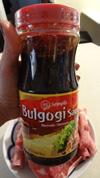
7 Ask if they would like anything else.8 Order the dessert too.
9 State the price.
11 State payment methods.
13 Say that you have change for a $ 50.
Ask for the customer’s name and tell the customer when the order will be ready.
10 Ask about payment methods.
12 Ask if he has change for $ 50.
Döner – Beef döner served in a pita with lettuce, tomato and onion with your choice of sweet or tzatziki homemade sauce. Add fresh fries on top at request. Add cheese for $ 1.00. – $ 9.00
Döner Poutine – Fresh cut fries with vegetarian gravy and mozzarella cheese with sliced beef döner meat and sweet sauce on top. – $ 10.00
Döner Salad – Lettuce, tomato, onion, cucumber, pickles, banana peppers and cheese mixed with beef döner meat. Your choice of sweet, lemon or tzatziki sauce. – $ 8.00
Dolma (V, GF) – Cooked rice and herbs wrapped in grape leaves. Served with tzatziki sauce. 6 pieces. – $ 5.00
Deep Fried Oreos – 3 Oreos deep-fried in cake batter, drizzled with chocolate syrup, whipped cream and powdered sugar. – $ 5.00
c Reflection: check your conversation by filling in the checklist on the next page. Does the other pair of students (or the teacher) agree with your evaluation?
Checklist:
1 Content and structure

• We greeted each other in a friendly and correct way.
• I was able to order food and ask questions about the menu OR I was able to answer questions about the menu. (recommendations, special requests, other orders –desserts or sides)
• We talked about prices and payment methods.
• Our conversation sounded natural and was logically structured.
• We ended the conversation appropriately.
2 Language
• I used (typical) words correctly.
• I used correct grammar.
• I spoke fluently.
• I minded my pronunciation.
4 Complete the dialogue between vendor (A) and customer (B) on the next page. Base your sentences on the menu.
Garlic & Ginger BBQ Pulled Pork & Slaw (GF Option)
Seasoned pulled pork topped with a tangy fresh slaw served on a bun. GF: pulled pork atop fries, topped with cheese – $ 8.00
Sweet & Spicy Chicken & Rice (GF)
Sweet and spicy cubes of chicken served atop a bed of rice infused with coconut, all topped with green onion and mango salsa bits – $ 8.00
Mexican Caviar & Chips
Blend of fresh chopped vegetables, beans, corn, lentils in a tangy fresh marinate served with chips – $ 5.00
Fries
$ 3 side / $ 5 small / $ 8 large
Sweet Potato Fries with Sweet Thai Coconut Aoli
$ 4 side / $ 6 small / $ 9 large
Slaw
$ 3

Seasoned tender chicken, lettuce, apple, celery, red onion, and smoked Gouda. –$ 6.00

Chicken Wrap with Apple & Smoked Gouda Merlot Beef Melt
Tender seasoned roast beef smothered in a rich berry Merlot sauce topped with sautéed onions & Monterey Jack cheese – $ 9.00
AHi! How may I help you?
Dessert
Chef’s special $ 4
Drinks
Juice, water & pop $ 2
AWell, plenty of choices, sir, but the Merlot Beef Melt is really excellent.
B Hm. I’m not so keen on beef, I’m afraid. I think
AGreat choice. Mind you, some people do find the chicken a bit spicy.
BGreat! I love spicy!
BThat’ll be all, thanks. Or, wait. I’ll have the fries too.
BJust a side, please. And eh, what's the Chef’s special dessert?
AToday’s dessert is Apple Delight: cinnamon sugar mini doughnuts topped with apple topping caramel sauce, and real whipped cream. A real winner!
BExcellent. I’ll have that too then.
ASorry, sir. Cash only, I’m afraid. My POS has been out of service all day.
A Sure, no problem.
BMy name’s Leon.
A Okay, Leon,
B Okay.
Score < 7 ≥ 7
Next exercise + ex. 6 ex. 6
5 Read the (parts of) recipes. Fill in the gaps with a suitable word.
Mandazi
Try these pillowy pockets of cardamom and coconut. A cultural for Omanis and Zanzibaris, enjoy as they are or try with curries to mop up sauces.
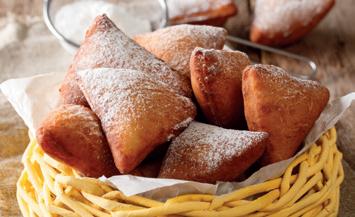
Pot roast

(…) Rub the meat with 1 tsp of the oil and plenty of . Heat a large flameproof casserole dish and brown the meat all over for about 10 mins. Meanwhile, add 2 tsp oil to a frying pan and fry the carrots and celery for 10 mins until turning golden.
Lift the onto a plate, splash the wine into the hot casserole and for 2 mins. (…) Whisk the floury onions into the beefy juices in the casserole, to make a thick onion

Heat a non-stick frying pan over a medium-high heat. Melt a knob of butter, then drop in tbsps of the mixture to make pancakes about 10cm across. Cook for 2-3 mins until bubbles appear on the surface, then flip over and cook for 1 min more. Keep each batch warm while you use up the rest of the . Stack up the pancakes and serve with for real American-style pancakes.
• 1lb 5oz (600 g) large potatoes, peeled and chopped into large chunks
• 14oz (400 g) swede (known as turnip in Scotland), peeled and chopped into large chunks
• 2¾oz (75 g) butter
• 9oz (250 g) savoy cabbage or , finely sliced
• salt and freshly ground black pepper
• 1oz (25 g)
, grated (very popular, creamy yellow hard cheese)

Irish soda bread
Want a simple bread recipe? This soda bread requires no kneading or proving, is -free and takes mere minutes to prepare. Above all, it’s delicious.

Source: www.bbcgoodfood.com
Score < 7 ≥ 7
Next exercise ex. 6 ex. 7
6 Look at the menu. Some words are missing. Fill in the gaps to complete the dishes. Choose from the following: (watch out: not all words can be used!)
cabbage – cheddar – curly fries – eggplant – frank – gravy – lentil – pork – ranch – relish –sauerkraut – tater tots – veal

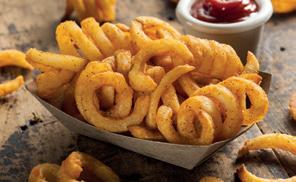
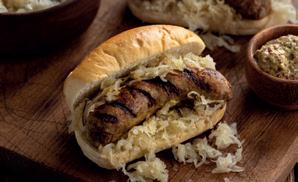
The Chicago $ 4 ,50 an all-beef Vienna topped with a pile of pungent garnishes: mustard, onions, tomatoes, dill pickles, sport peppers, and glowing green
The German $ 3,00 German Bratwurst topped with mustard, pickles, and fried onions
Creamy vegan soup $ 4 ,50
Creamy vegan soup loaded with protein and fiber-rich legumes and the most flavorful golden broth

Stuffed veggies
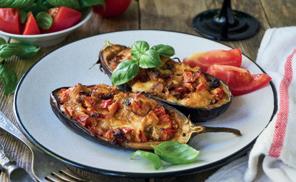
$ 4 ,50 Stuffed loaded with veggie goodness and vegan cheese

Sides
$ 3,00
$ 3,00 extra seasoning (+ $ 0,50)
Score < 7
≥ 7
Next exercise Check 3, p. 339
7 You are going to write your own made-up recipe or menu item.
a Preparation: pick at least 5 words from the list below. Think of an original way to mash them up into a recipe or menu item of your own imagination. Don’t copy from an existing one!
cheese curds – kale – capsicum – boil – eggplant – batter – franks – cilantro – ranch – Colby Jack – chickpeas – lentils
b Action: write (part) of a recipe or a menu item, using all the chosen words. Write at least 50 words.
c Reflect on your writing by filling in the checklist. Ask your teacher for some feedback.
Checklist: writing (part of) a made-up recipe Yes I think so No
1 Content and structure
• I wrote at least 50 words.
• My recipe / menu item is original.
• I correctly used all 5 words in my recipe / menu item.
2 Language
• I used correct words.
• I used correct basic grammar.
• I used correct spelling and punctuation.
Feedback
Score < 7 ≥ 7
Next exercise ex. 6 Check 3, p. 339
1 Rate your visit to the Grilled Cheeserie in Nashville.

a Preparation: read the information on the notepad you will get about your visit to the Grilled Cheeserie. Imagine you have just ordered a dish from that food truck. Choose one of the two grilled cheese sandwiches in the pictures below.
Turkey Di Parma (cheddar, turkey, sun-cured tomatoes on parmesan-crusted rosemary garlic bread) ($ 10.80) and Cheesy Tots ($ 4.20)
b Action: write your own review.
Spinach and artichoke melt ($ 9.60), Tomato soup ($ 4.20)

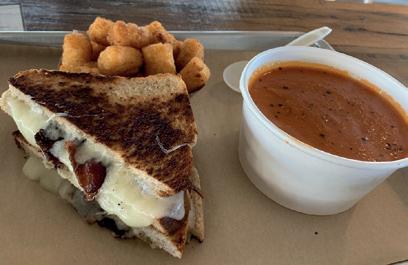
- Use the keywords from the notepad you will get.
- Describe food (taste and texture), staff and service, pricing, portion size and overall experience.
- Don’t forget to give the food truck a rating.
c Reflect on your writing by filling in the checklist.
Checklist: writing a food truck review
1 Content and structure
• I discussed all the positive and negative aspects listed on the notepad.
• I discussed the taste and texture of the food.
• I discussed staff and service.
• I discussed portion sizes and pricing.
• I described the overall experience.
• My rating fits my review.

• I referred to the meal and price (as in the picture).
• My sentences are well-structured.
2 Language
• I used correct (new!) vocabulary to describe taste, texture, staff, service, portions and pricing.
• I used correct basic grammar.
• I used correct spelling and punctuation.
Feedback
Score < 7 ≥ 7
Next exercise ex. 2 ex. 3
2 Write your opinion about Eggs Travaganza.
a Preparation: imagine you have just eaten the spinach and turkey omelette ($ 8) from Eggs Travaganza. Look at the picture.
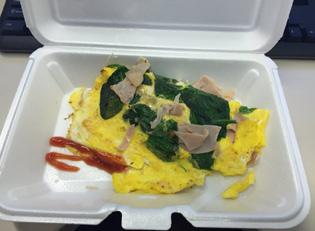
b Action: write your review based on the grid below. Describe the food (taste and texture), staff, service and pricing. Use at least 5 words from the list below. Give your review a title and a rating.
average – bland – dried out – exquisite – filling – inattentive – off – reasonable – soggy –spicy – swift
[describe the taste and texture of the omelette]
[describe staff and service]
[describe pricing]
[end with a general conclusion]
c Reflection: check your final text by filling in the checklist.
Checklist: writing a review Yes I think soNo
1 Content and structure
• I described all aspects in the grid.
• I wrote full sentences.
• I clearly described the meal in the picture.
2 Language
• I used at least 5 words from the list correctly.
• I used correct grammar.
• I used correct spelling and punctuation. Feedback
3 Discuss your review from exercise 1.
a Sit with someone who wrote a review based on the other notepad. Check the useful expressions in the Summary of Unit 5, page 262, ‘How to express your opinion’.
b Discuss your reviews: where do you agree and where do you disagree? Use at least 5 words from the list below in your conversation.
average – crispy – exquisite – filling – inattentive – off – piping hot – soggy – stringy –subpar – swift – welcoming
c Reflection: reflect on your conversation by filling in the checklist.
Checklist:
1 Content and structure
• We discussed all the items on our notepads.
• I used good arguments to formulate my opinion.
2 Language
• I used correct phrases to express my opinion.
• I used at least 5 words from the list correctly (and I knew what they meant without having to look them up).

• I used correct words and grammar.
• I spoke fluently and paid attention to my pronunciation. Feedback
Score < 7
Next exercise ex. 4
4 Below are reviews for Eggs Travaganza. Answer the questions below.
a How many stars did these people give the food truck, in your opinion? Rank them accordingly, going from 1, 2, 3, 4 to 5 stars. Underline the words that indicated this rating.
READING
©VANIN
The most pleasant food truck workers I’ve encountered, especially at 7 a.m. I asked, ‘Can I add avocado to that?’ and he says, ‘Ma’am, you could add whatever you want!’ Why can’t that be the answer to every question I have?
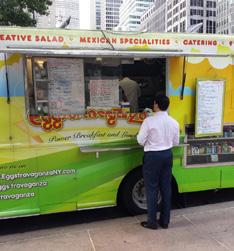
Anyway, I ordered the egg whites / 7 grain bread, added avocado, & an iced coffee. The coffee wasn’t worth writing about, but the sandwich was delicious, HUGE, and I only paid $ 6 for the entire meal.
Eggscellent!
$ 4 for 1 Taco is EGGSPENSIVE. I mean I would call it a delicious Eggsperience, but the prices were a little too Eggstravagant. My Chorizo and Egg Tacos were actually Eggsceptional. I also tried the Huevos Tocino Taco which was meh. The guac was also meh
Aside from that, the people in the truck were cool. Sadly, they didn’t have any steak ready or I might have gotten that instead of the tocino.
Maybe I’ll come back if I’m desperate for a morning taco.
I needed a quick on-the-go breakfast and Eggs Travaganza fits the bill. After checking out the menu, which is fairly large for a food truck, I settled on the safe bet of sausage, egg, and cheese on a bagel. They had many other options, but I didn’t want to get risky. Each order is made-to-order, but it only took a couple of minutes to receive Overall, the ingredients tasted good and fresh I would recommend giving them a try, especially because their prices are low!
Went there at 12.40 p.m. to get steak tacos and some chorizo tacos. They were out of steaks, so got two chorizos and one chicken taco. Extremely disappointed with the chorizo. Gigantic pieces of potato and very little chorizo. The chicken was slightly better but after spending almost $ 8 for three tacos and waiting ten min for them to be prepared, I am both disappointed and still hungry
Source: www.yelp.com
b Read these reviews about the same place. Fill in the missing words. Choose from the list. Careful: not all words can be used.
back – beyond belief – expensive – fluffy – minus – mouth-watering – mushy – overcooked –speedy – spicy – stale – stringy – subpar – tender
The truck is located at the northeast corner of 52nd street. Went there around 1:30 pm and didn’t have to wait at all. There are plenty of places nearby for you to sit and eat your lunch. There are also many other fantastic food trucks nearby.
Food: I had the Steak Burrito. I really didn’t like any part of the Burrito. The meat was and reheated had a funky oily smell and had no seasoning. Rice was very . Burrito came with corn chips which were salty . The chips reminded me of salty theater popcorn. They are probably good in breakfast items as their name highlights. Service was , though. Price: if the food is bad, then no matter how much you pay it is too Overall: Very, very disappointed. I won’t be any time soon. 1 star because of lack of seasoning and rice.
I used a Groupon to purchase lunch today for me and a friend. We got a egg and steak burrito and two Cajun chicken tacos. That was only $ 19 worth and the value of the Groupon was $ 20. The woman tells me that I owe her a dollar because of tax! Last I checked, tax isn’t at 10.5%! But let’s go on to the food. The burrito was way too ! Our mouths were on fire and could only eat half of this tiny burrito. The steak was very , but if there was any flavor, I couldn’t taste it because of the heat.
I had no idea that it would be this hot and I was not asked whether I wanted it hot or not.
As far as price? If I were to compare other trucks, this would be a rip off.
I’m glad everyone else for the most part enjoys this cart, but I sure didn’t.
Adapted from www.yelp.com
Score < 10
Next exercise ex. 6
≥ 10
All done!
5 Write a review for one of the food trucks portrayed in the fragment Best food carts in New York City
a Preparation: watch the fragment and make a few notes. watching
b Action: write your review (about 75 words) in the Yelp frame below. Use at least 5 words from the list below. written INTERACTION
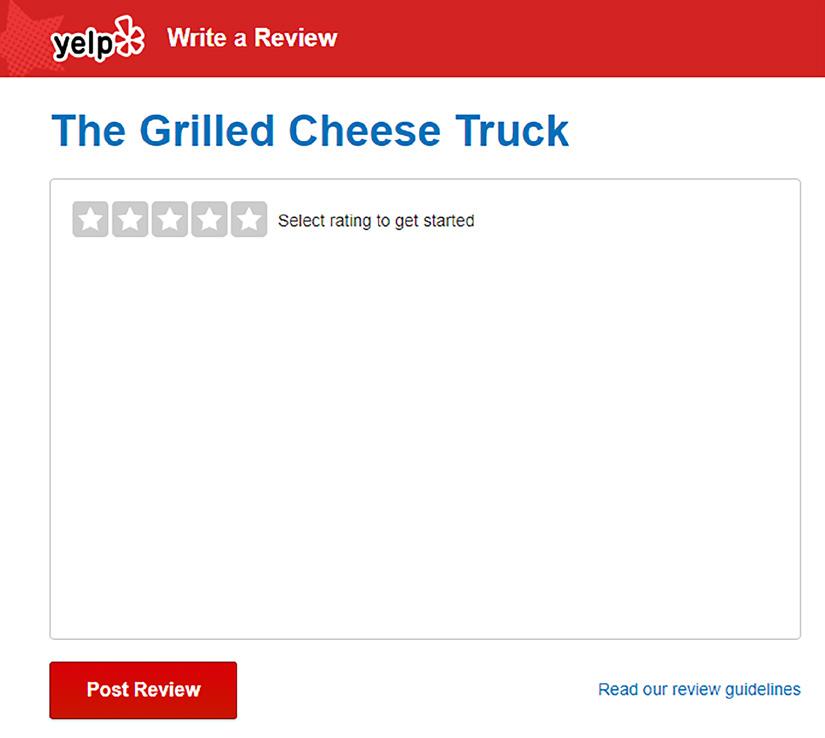
average – bland – dried out – exquisite – filling – inattentive – off – reasonable –soggy – spicy – swift
c Reflection: check your review by filling in the checklist. Share your review with someone in the class.
Checklist: writing a review Yes I think soNo
1 Content and structure
• I discussed all aspects.
• My text is well-structured.
2 Language
• I used correct words.
• I used typical words to describe taste/texture/staff, etc.
• I used correct grammar.
• I used at least 5 words from the list correctly.
Feedback Score < 7
Next exercise ex. 4
≥ 7
All done!
6 Matching.
a Match words and their synonyms. Two pairs cannot be matched.
1speedy Apiping hot
2inattentive Bappalling
3enormous Cawesome
4amazing Doverdone
5overcooked Ebland
6steaming hot F stale
7below average Ghuge
8horrible Hswift
9plain Isubpar
10cheerful Jhuge
12345678910
b Now match antonyms. This time 3 pairs cannot be matched.
1soggy Arich
2plain Bspicy
3fresh Csalted beyond belief
4bland Dmushy
5cheap Eexpensive
6rock hard Foff
7rude Ggloppy
8silky Hvery kind
9 stale Isizzling
10cheerful Jyummy
12345678910
Score < 16 ≥ 16
Next exercise All done!

You are going to organise a food truck fest with your class. This means that you will have to cook up a (short) menu, design your own food truck and actually bring prepared food to class and have everyone in your class taste the food you have prepared. They will decide how much your food is worth.
1 Form groups based on the role cards below.
a Brainstorm:
– Select a good food theme (e.g. Thai cuisine, Coffee and Doughnuts). You will have to design a food truck too, so make sure your theme and design is doable.


– Come up with a good name for your food truck.
b Divide roles, based on your personal strong suits. Your teacher will give you a food truck template and a preparation document.
Name:
• Design the menu (use online tools such as Piktochart or Canva or get creative with pencils and crayons).
• Fold and design the food truck template, keeping to the original.
• Think of a good way to present the food you will be selling.
Name:
• Sit together with the other members of your group when composing the menu.
• Think of the different items on your menu (mains, sides, drinks, desserts, combo).
• Complete the grocery list.
• Cook the foods and serve (together with your fellow team members).
Name:
• Your role is to keep an eye on the general process and to keep everyone to their task.
2 Get ready to prepare, serve and taste your food.
a You will order food from other ‘food trucks’.
b While tasting: express your opinion about the food.
c After tasting: fill in the evaluation checklist and write a short review of the other food truck(s). Write about taste, texture, service, staff and last but not least: did you get your money’s worth?
3 Reflect on the task by filling in this checklist.
Checklist: organising a food truck fest
1 Preparation and collaboration
• We divided roles evenly and fairly.
• We collaborated well.
• We spent our preparation time efficiently.
• We thought of and prepared all the steps (name, food truck design, menu, food preparation etc.)
• I took my role to heart.
• I helped my team members where and when needed.
2 Ordering food
• I started and ended the conversations appropriately.
• I was able to order food and ask questions about the menu.
• I used (typical) vocabulary correctly.
• I spoke fluently.
• I minded my pronunciation.
3 Expressing opinion about food
• I expressed my opinion to other students, fluently and correctly.
• I gave oral feedback about several criteria (food, service, price, staff).
• I wrote about all of these criteria in my review.
• My written review is at least 100 words.
• My text is well-structured.
• I used correct (typical) vocabulary.
• I used correct grammar.
• I used correct spelling and punctuation.
Yes I think soNo